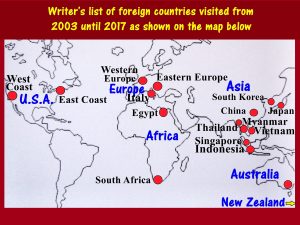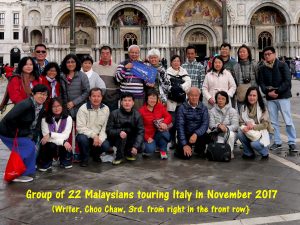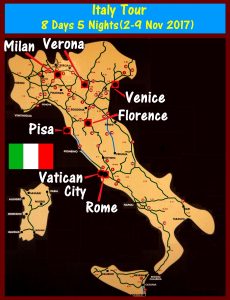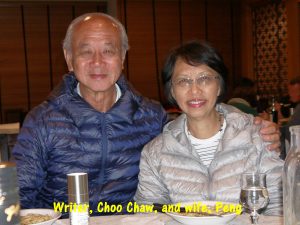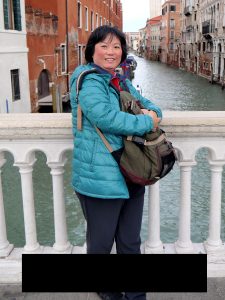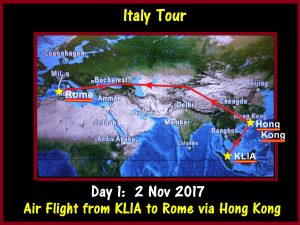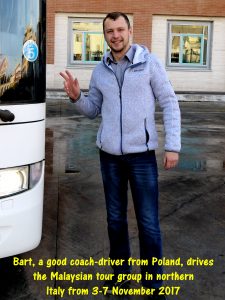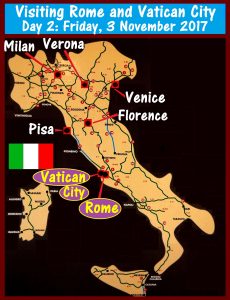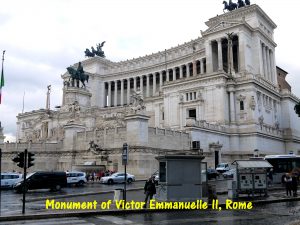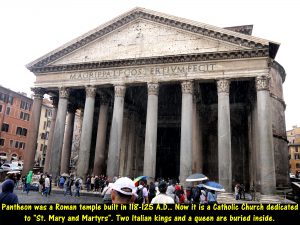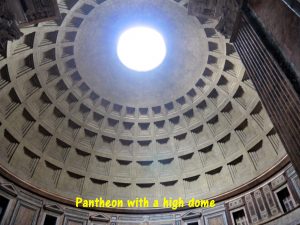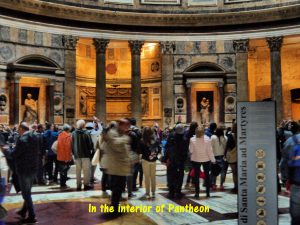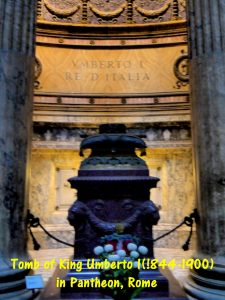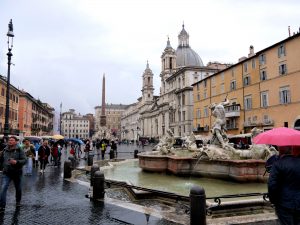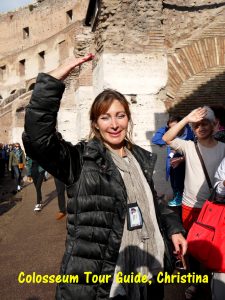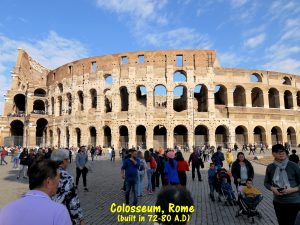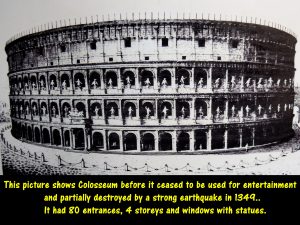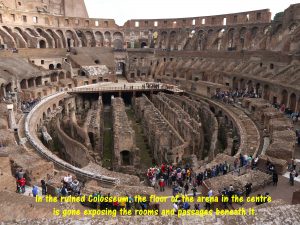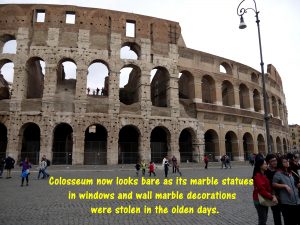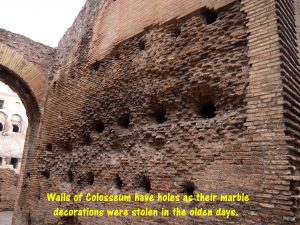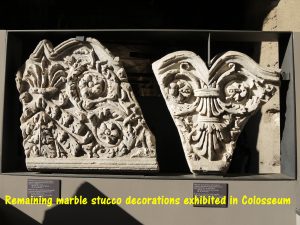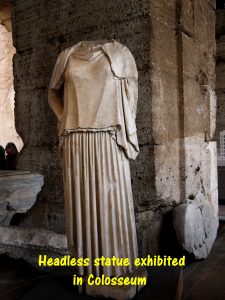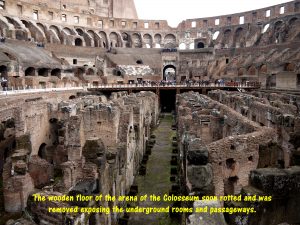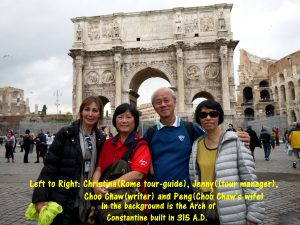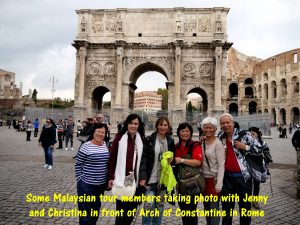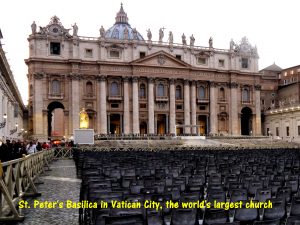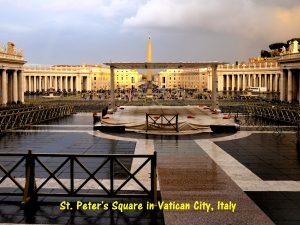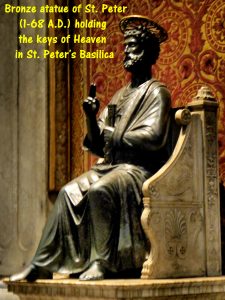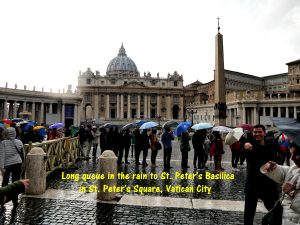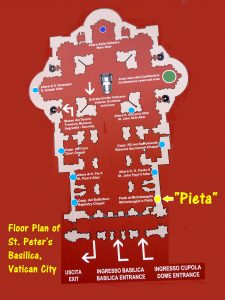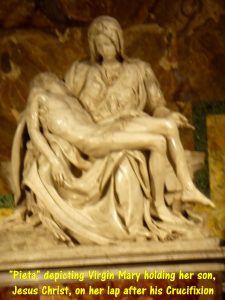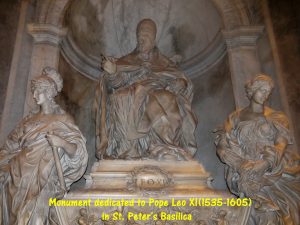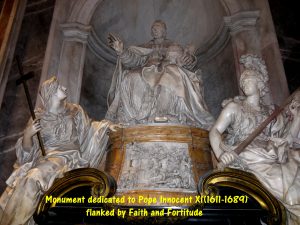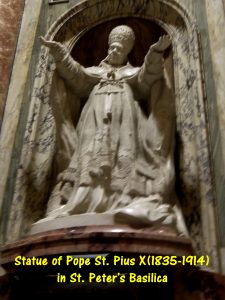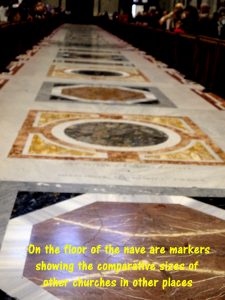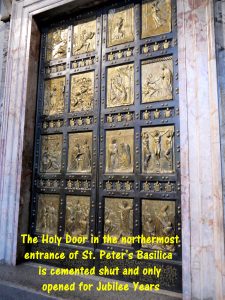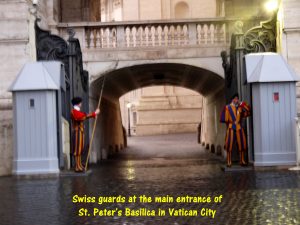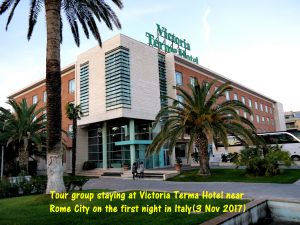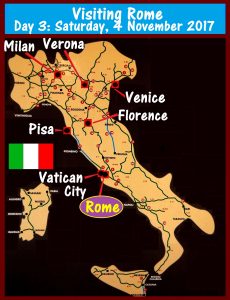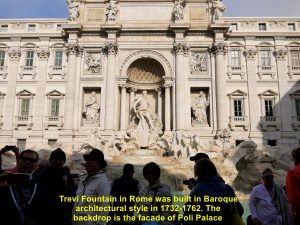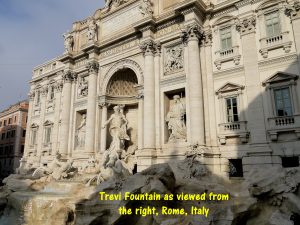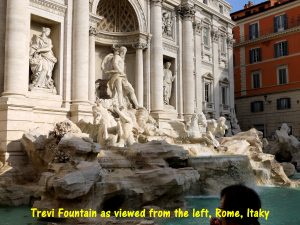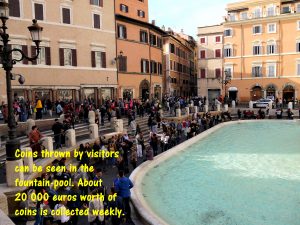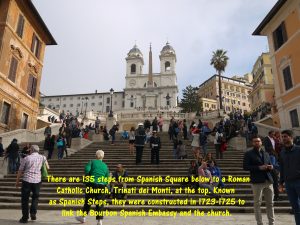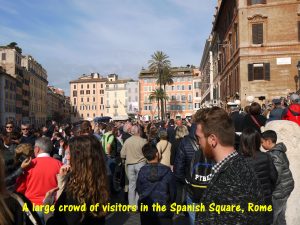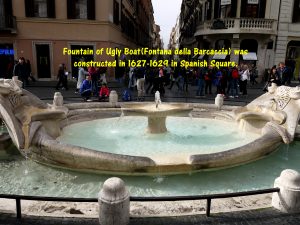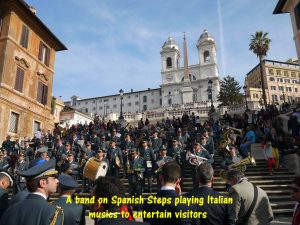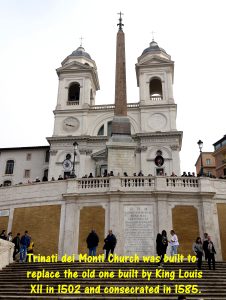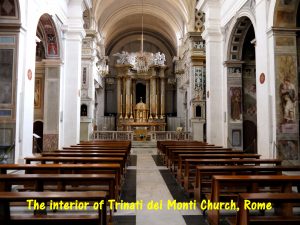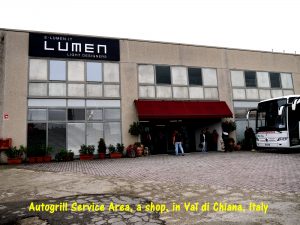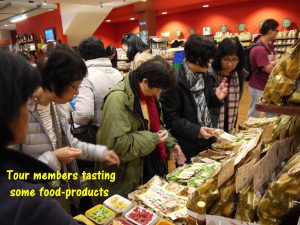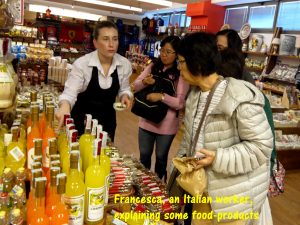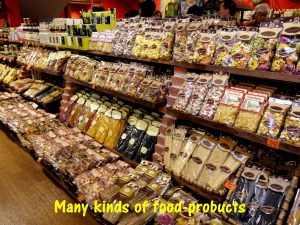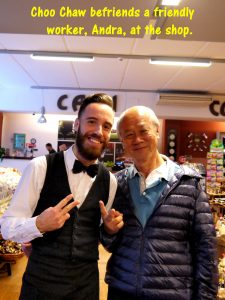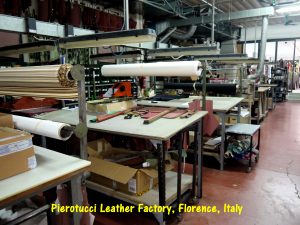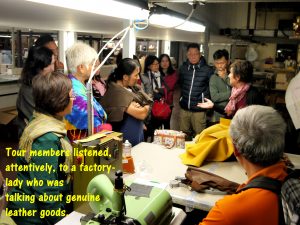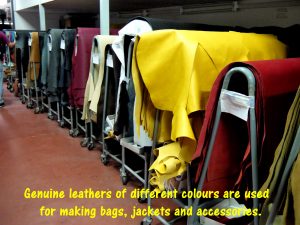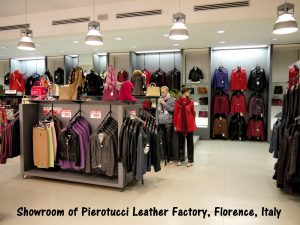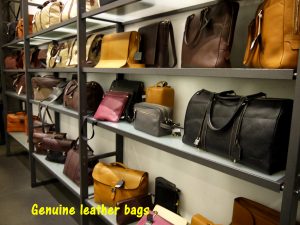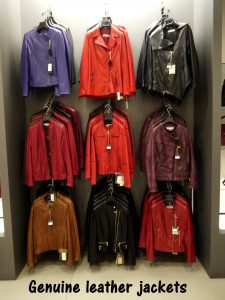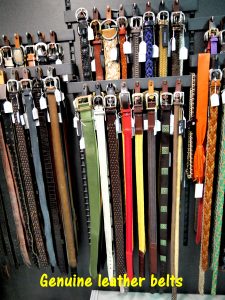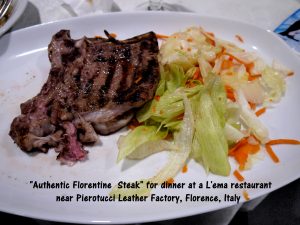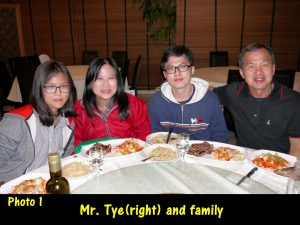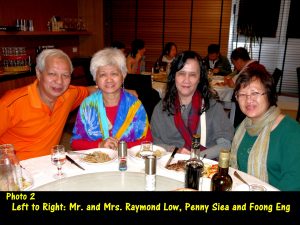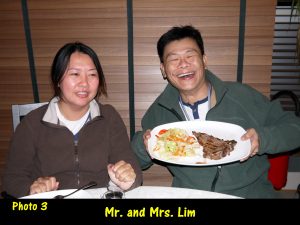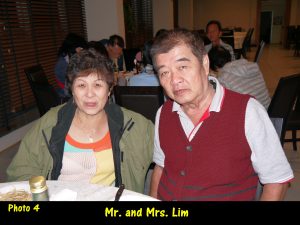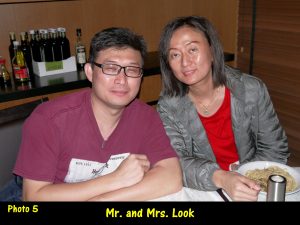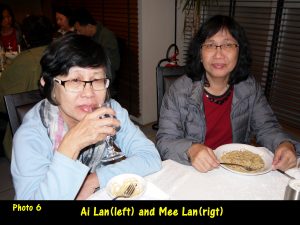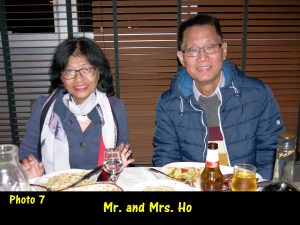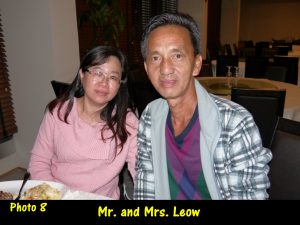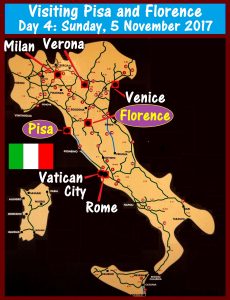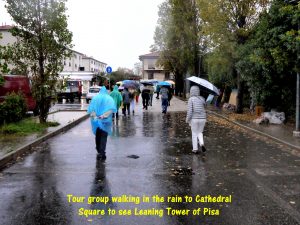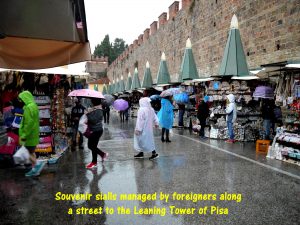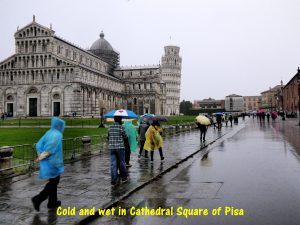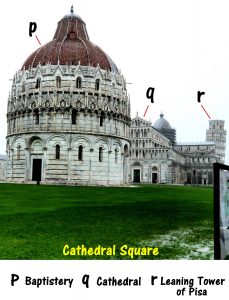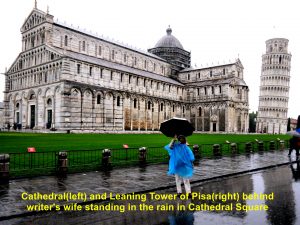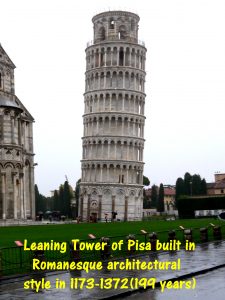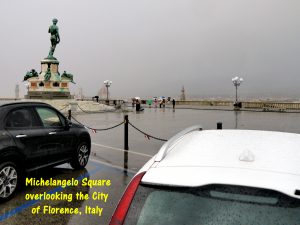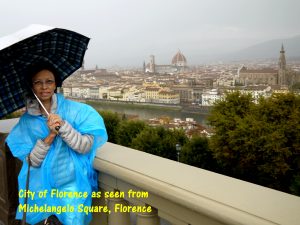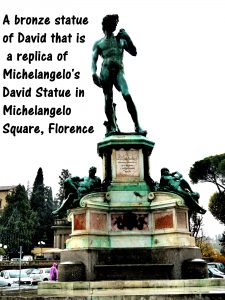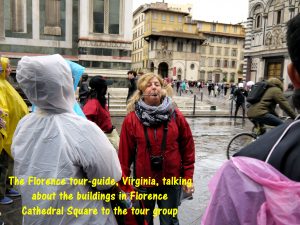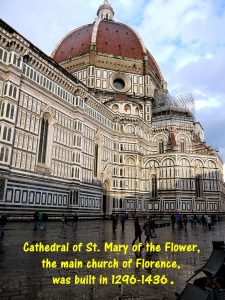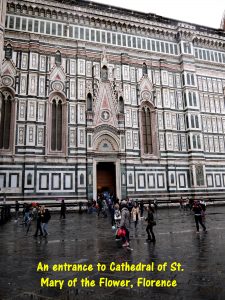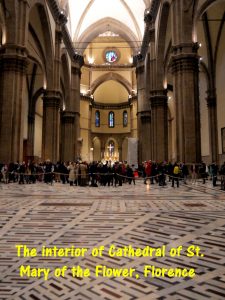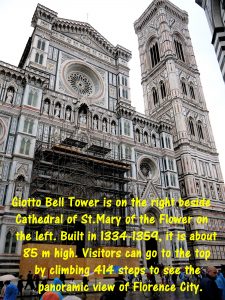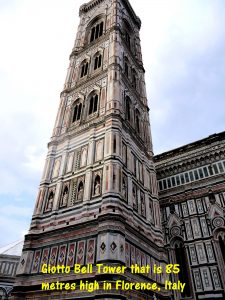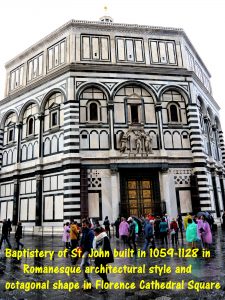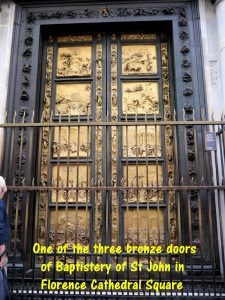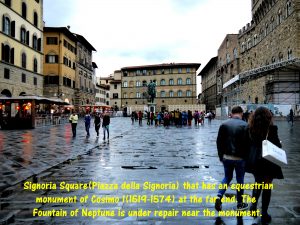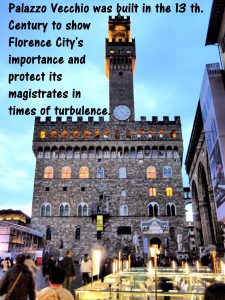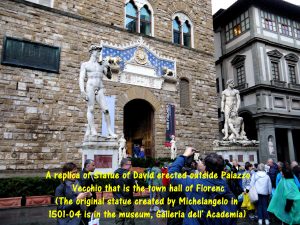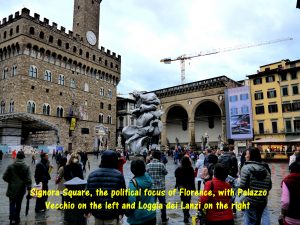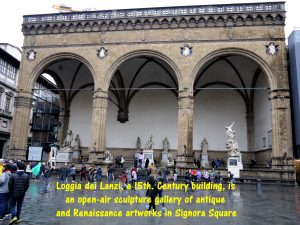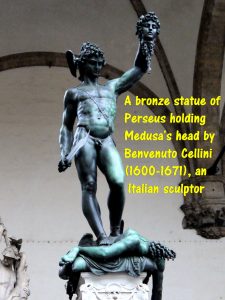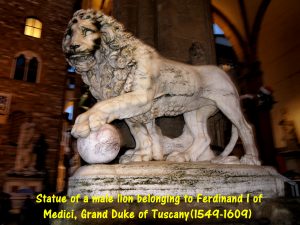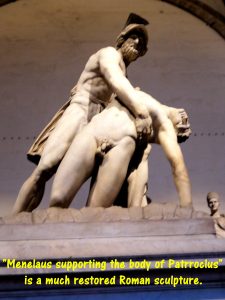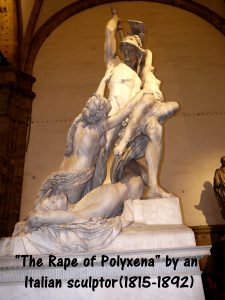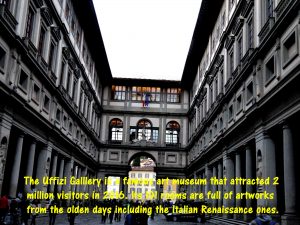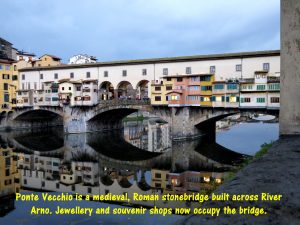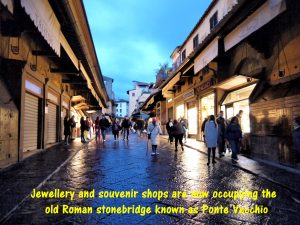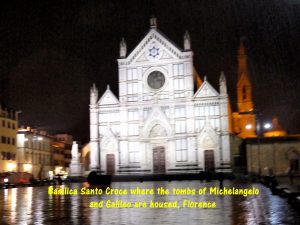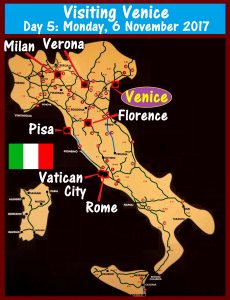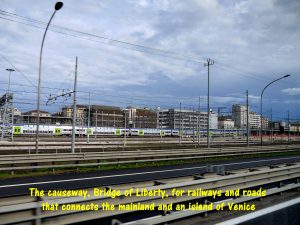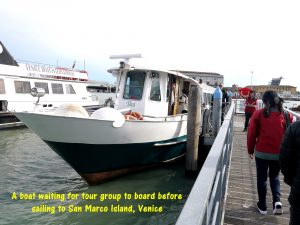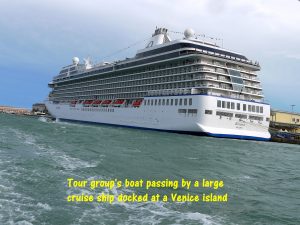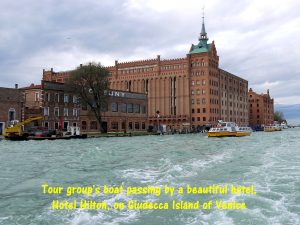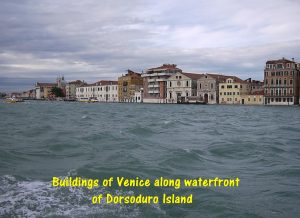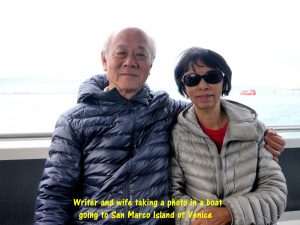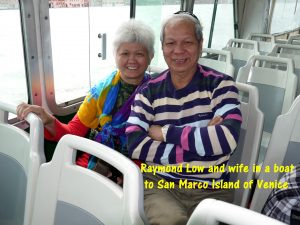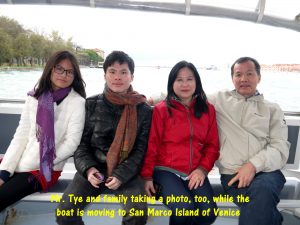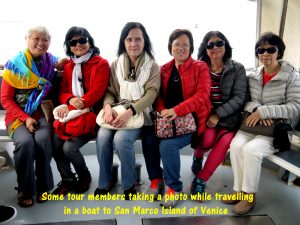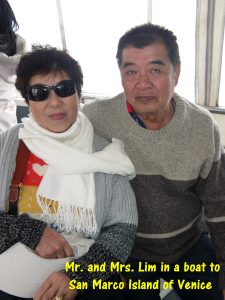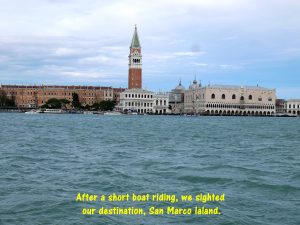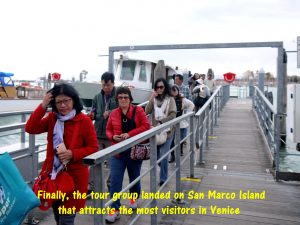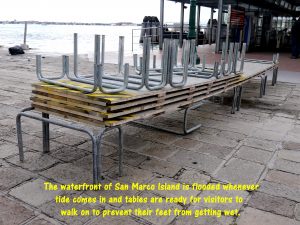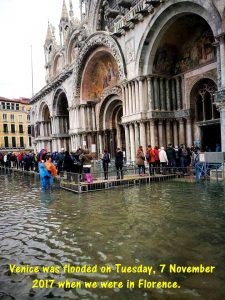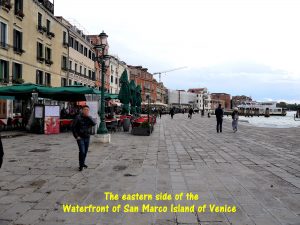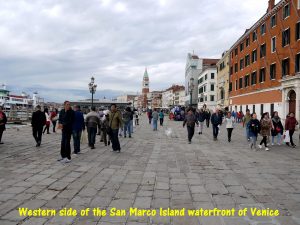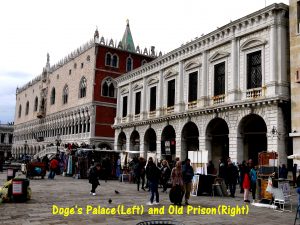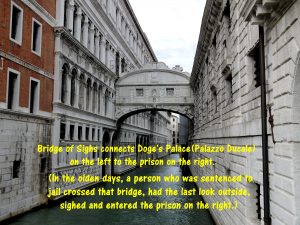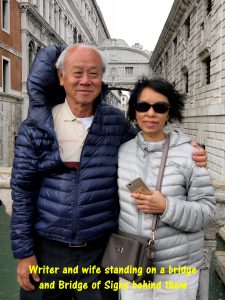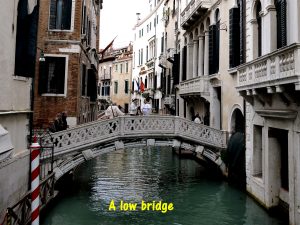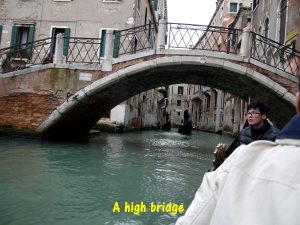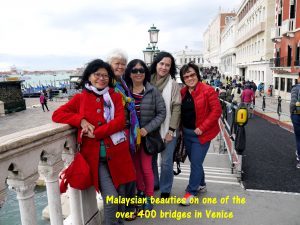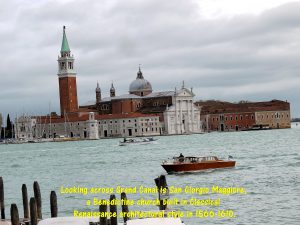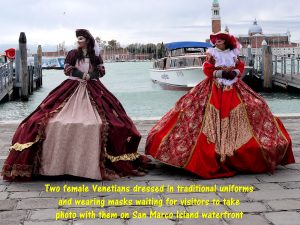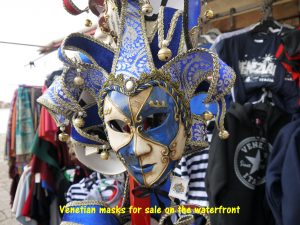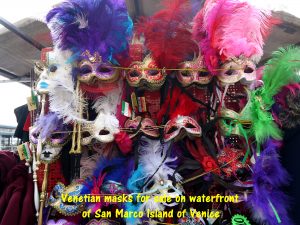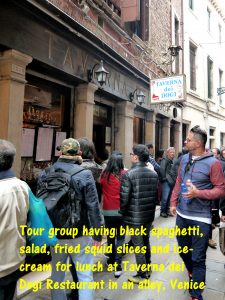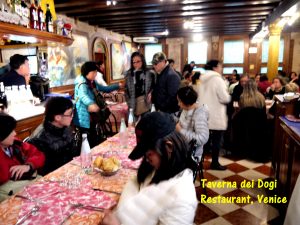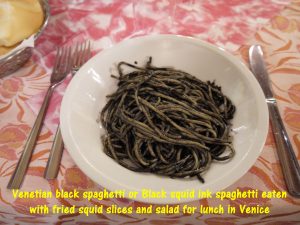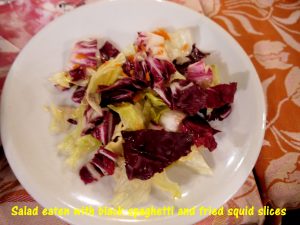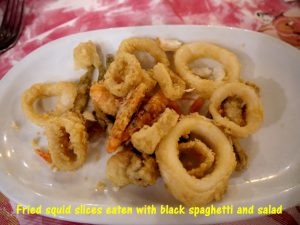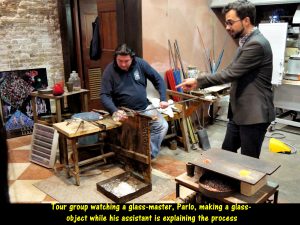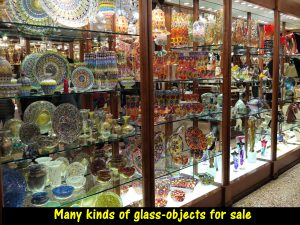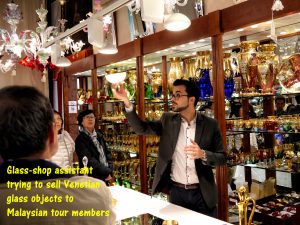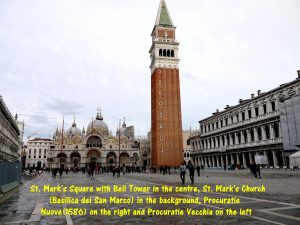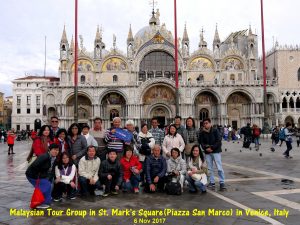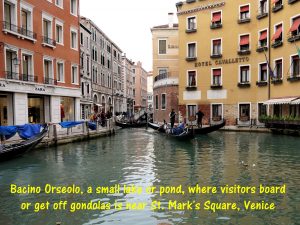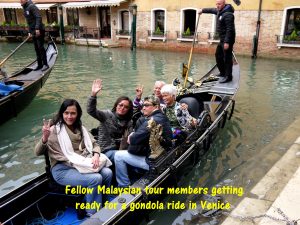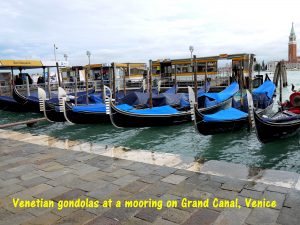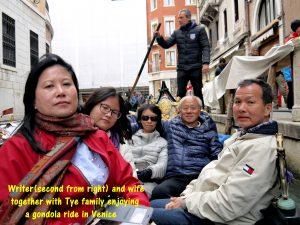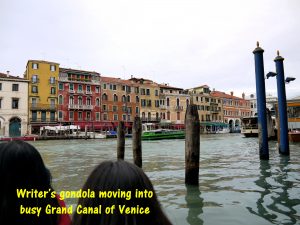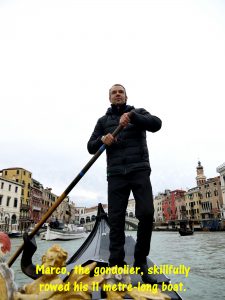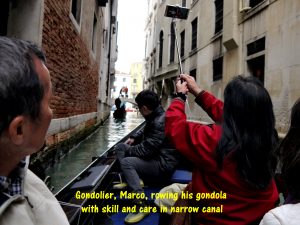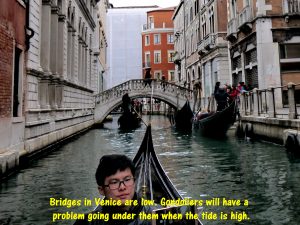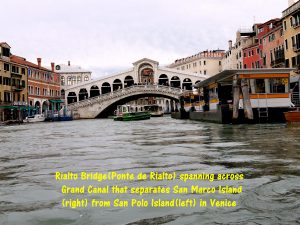Hoi An, a charming ancient town of Vietnam
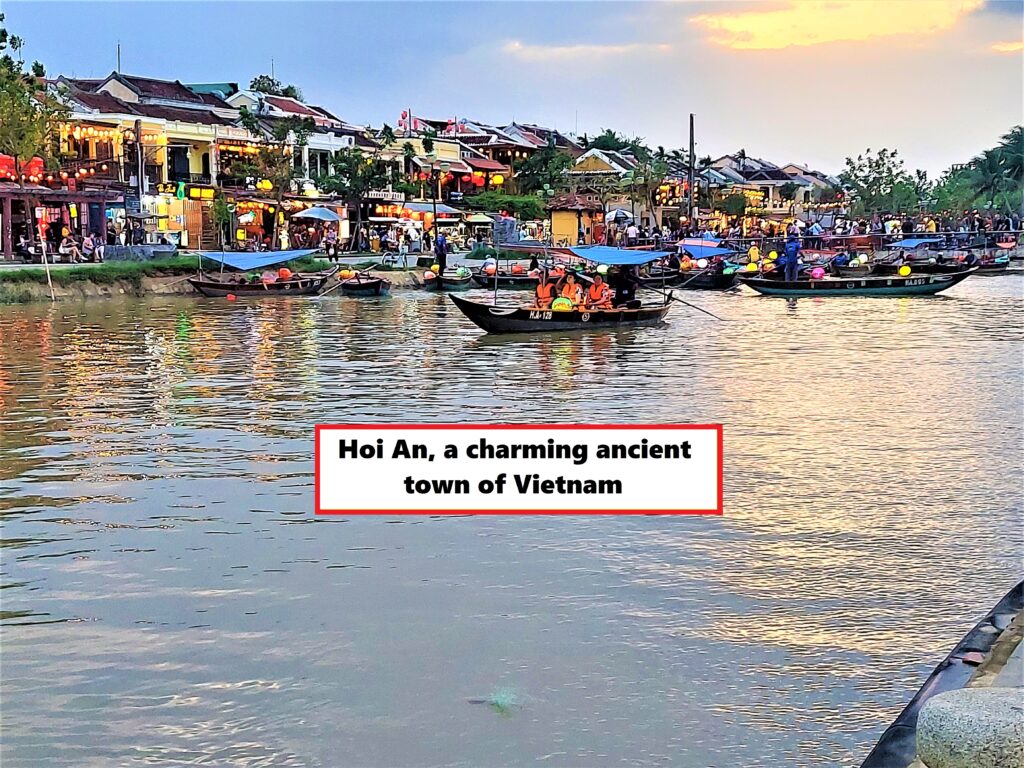
The map below shows the location of Hoi An Town in Vietnam
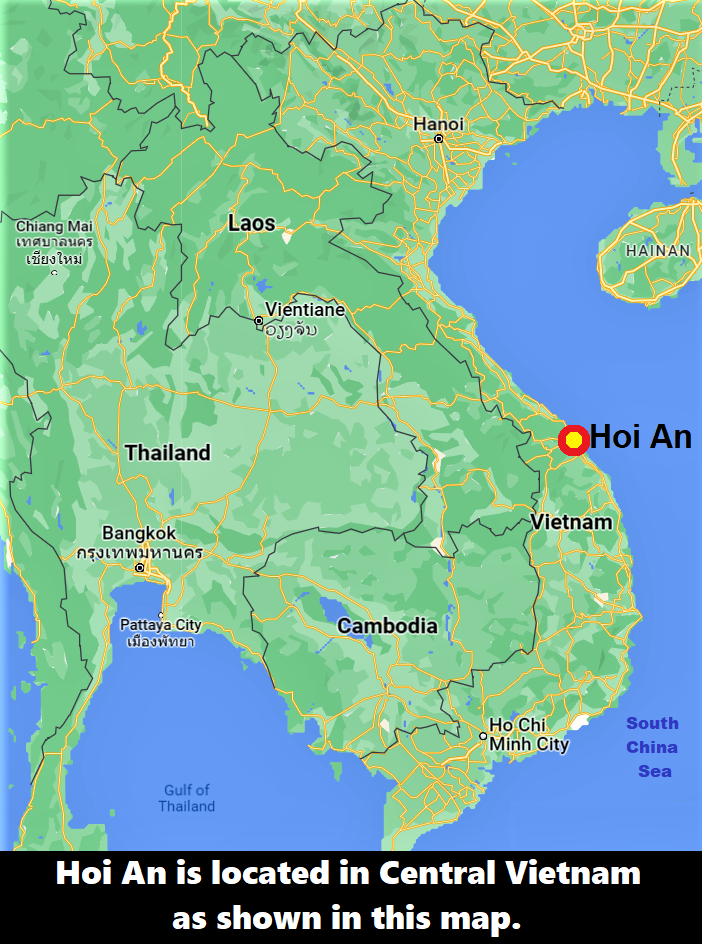
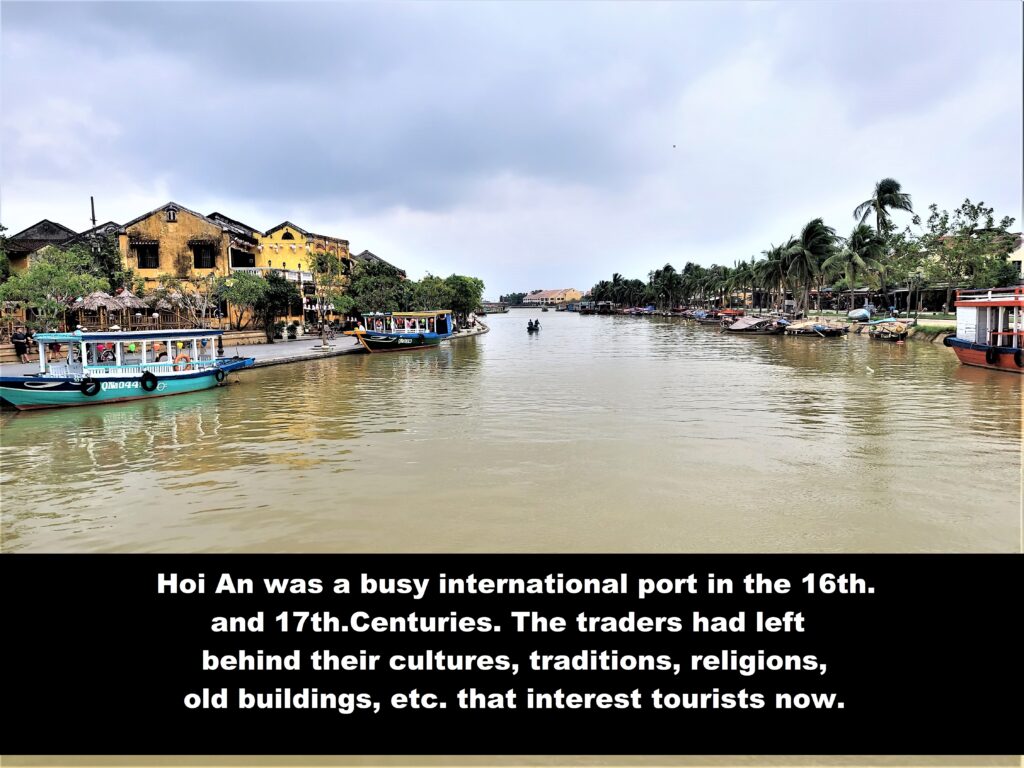
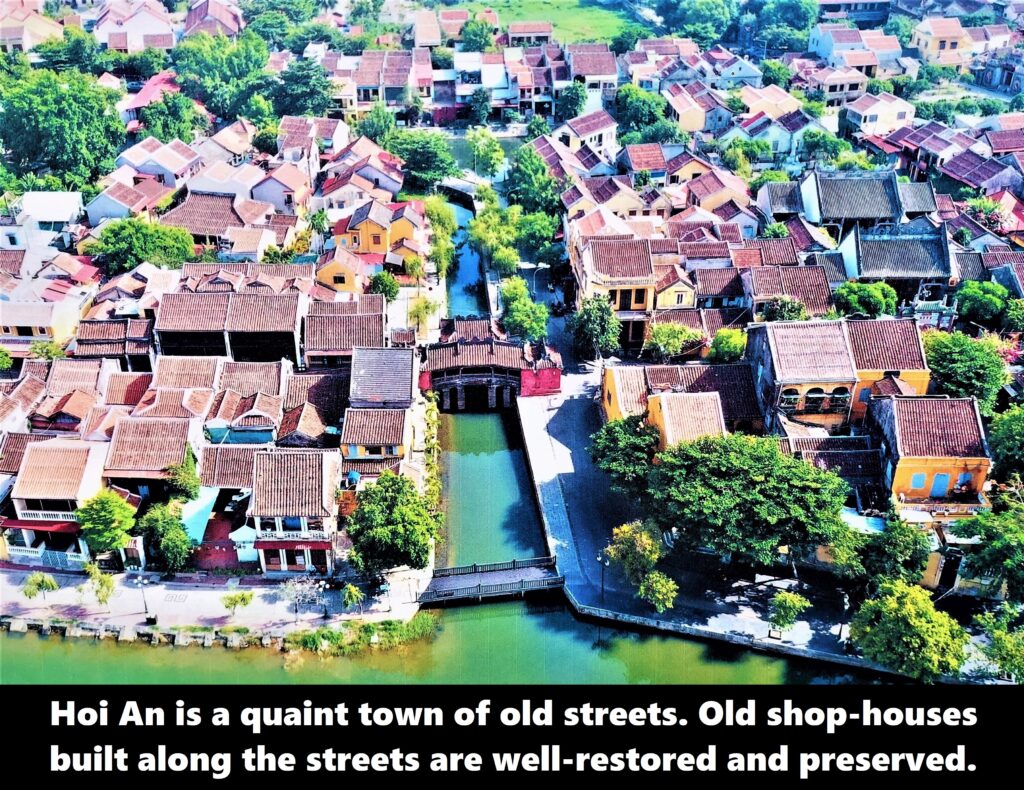
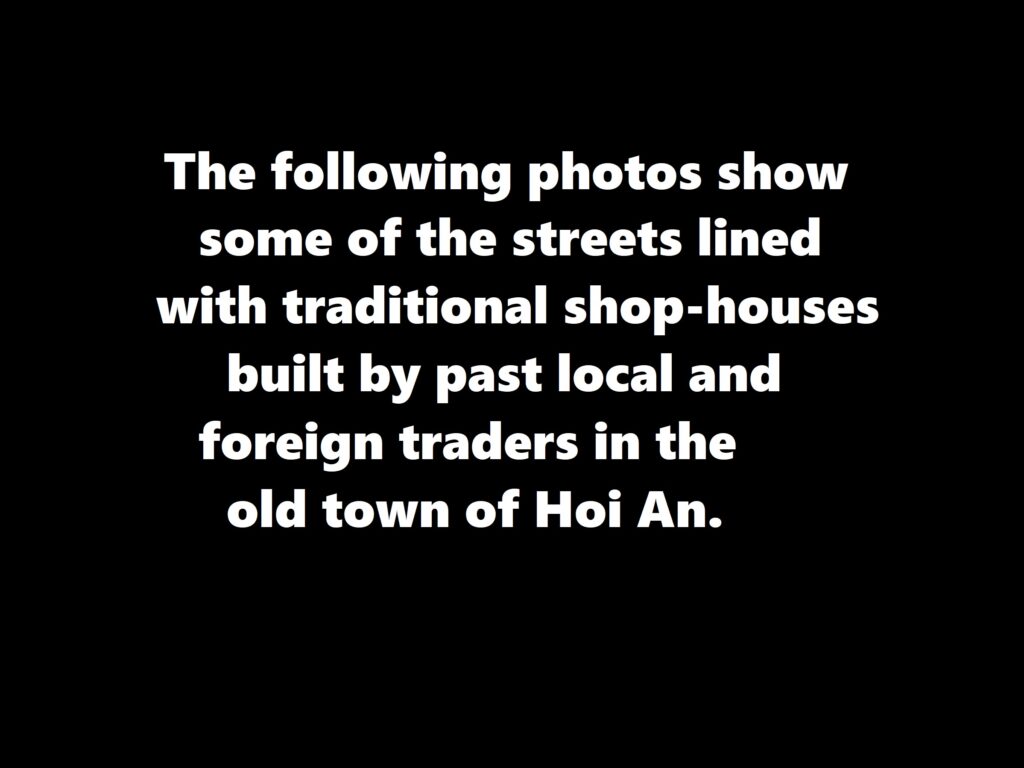
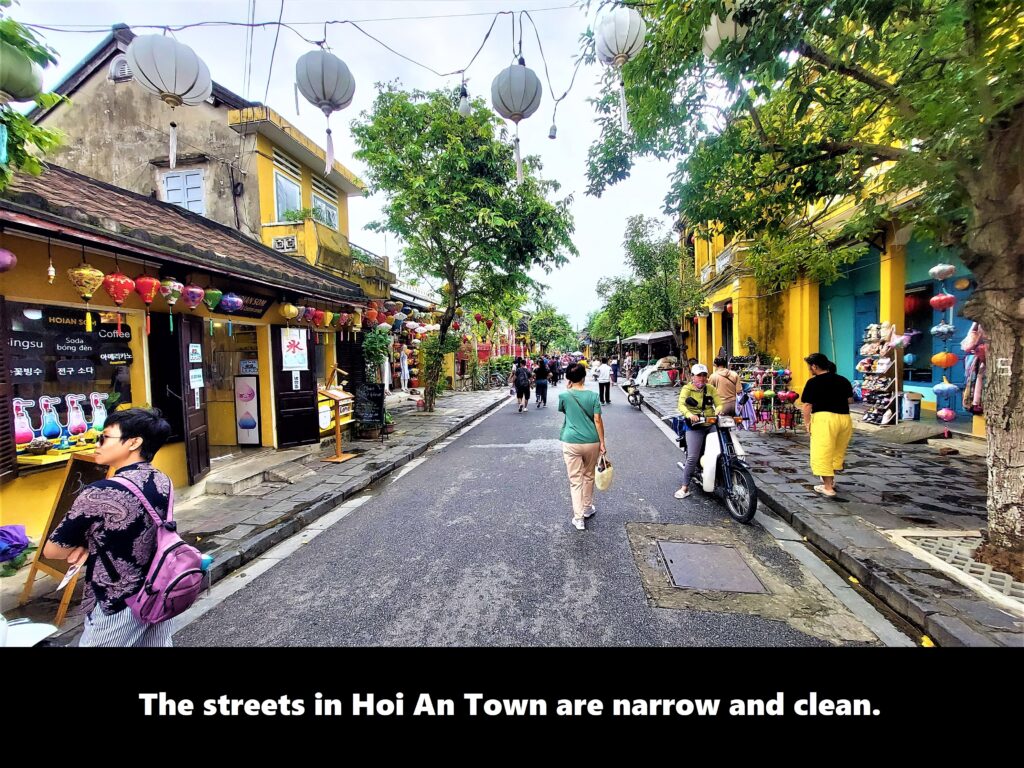
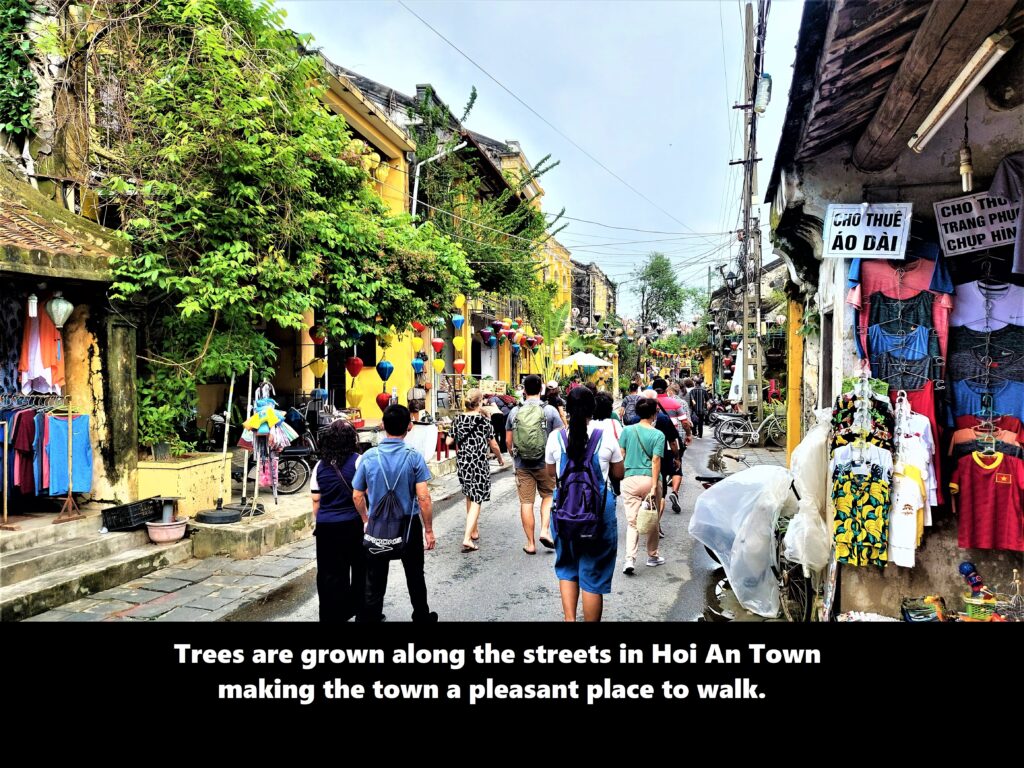
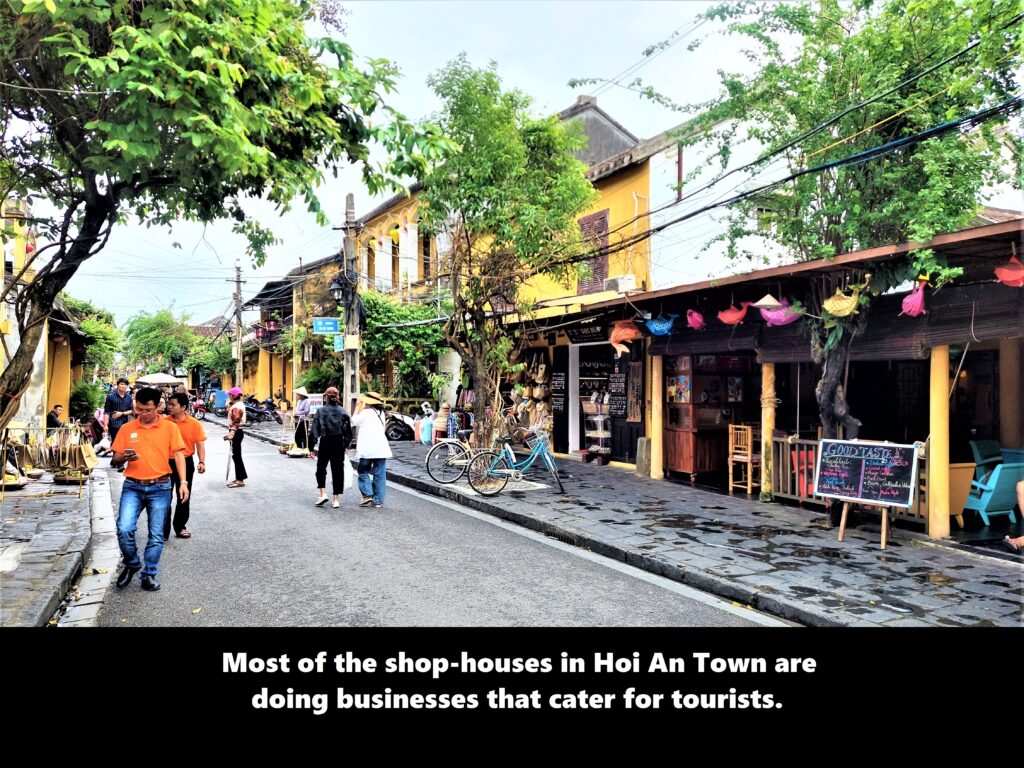
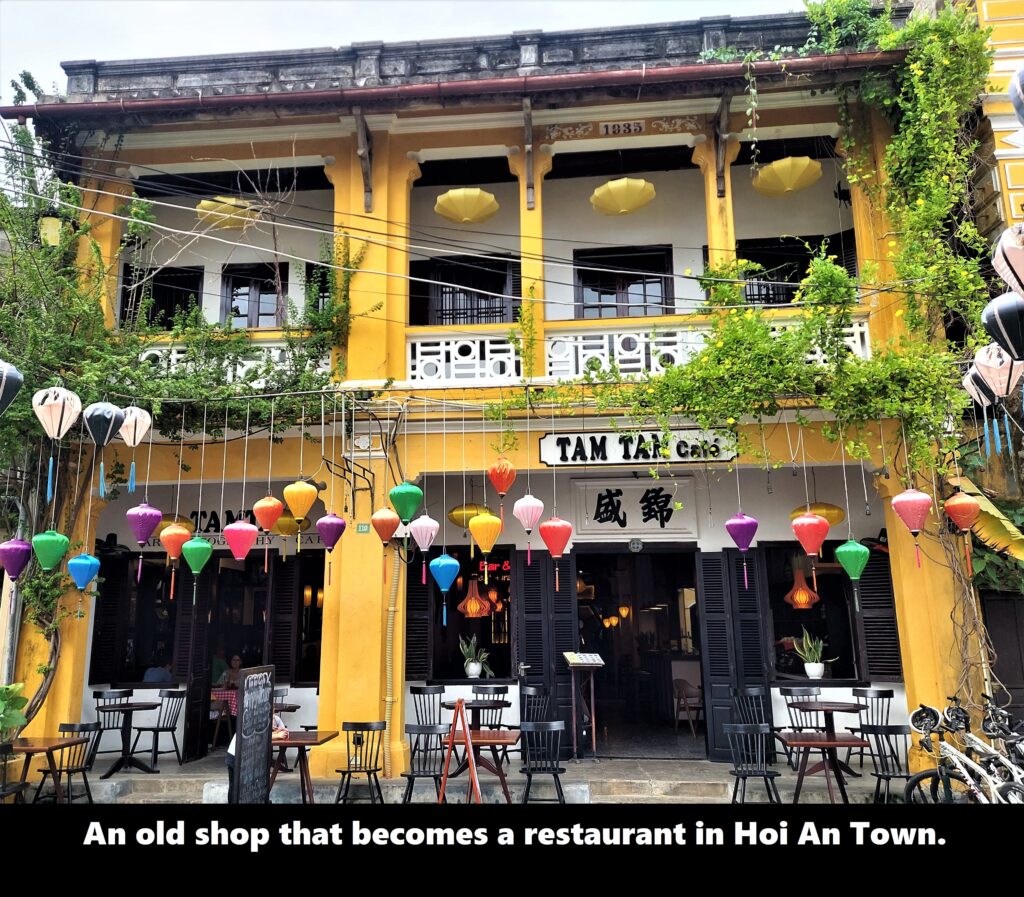
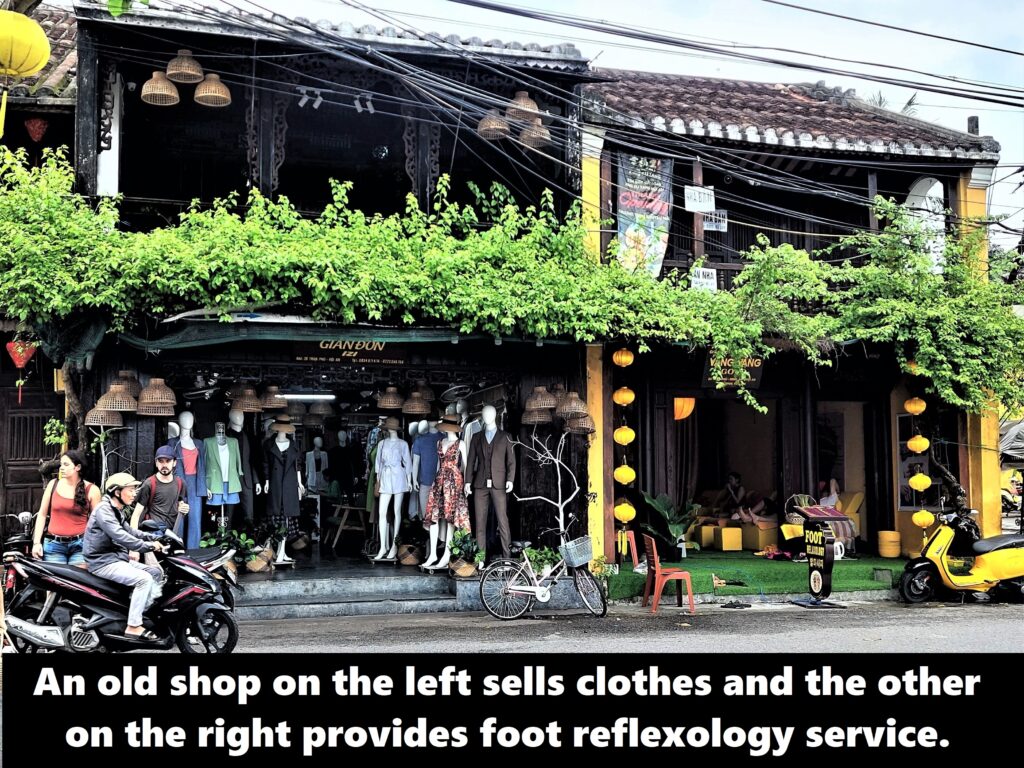
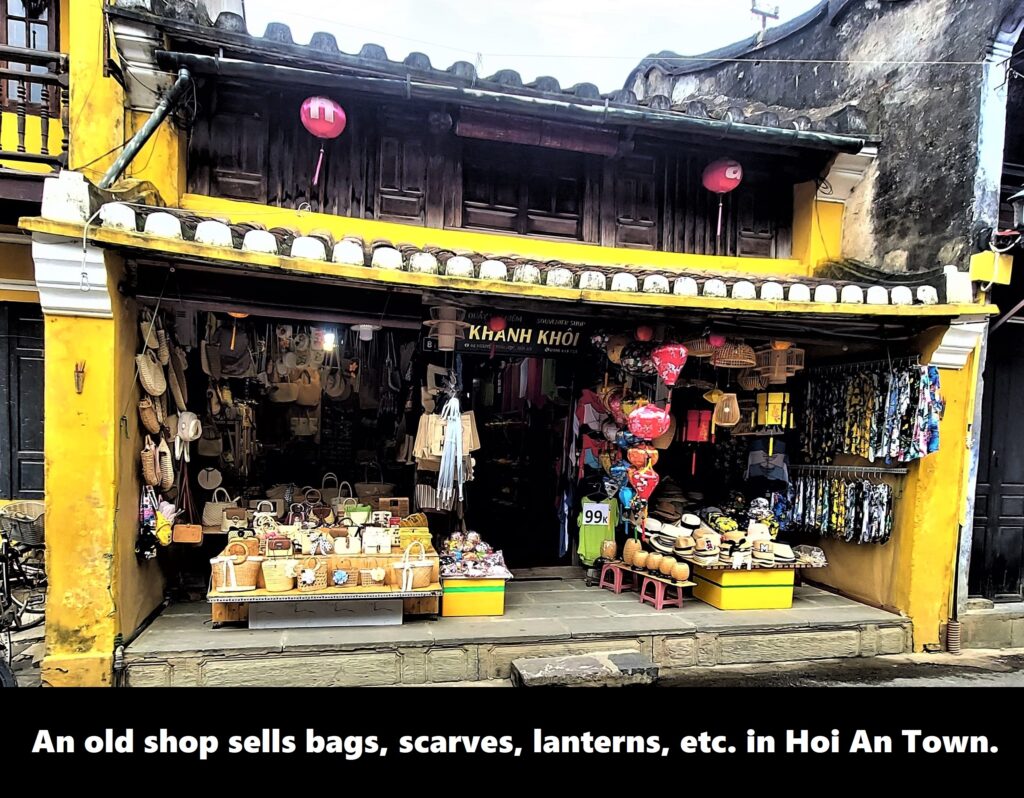
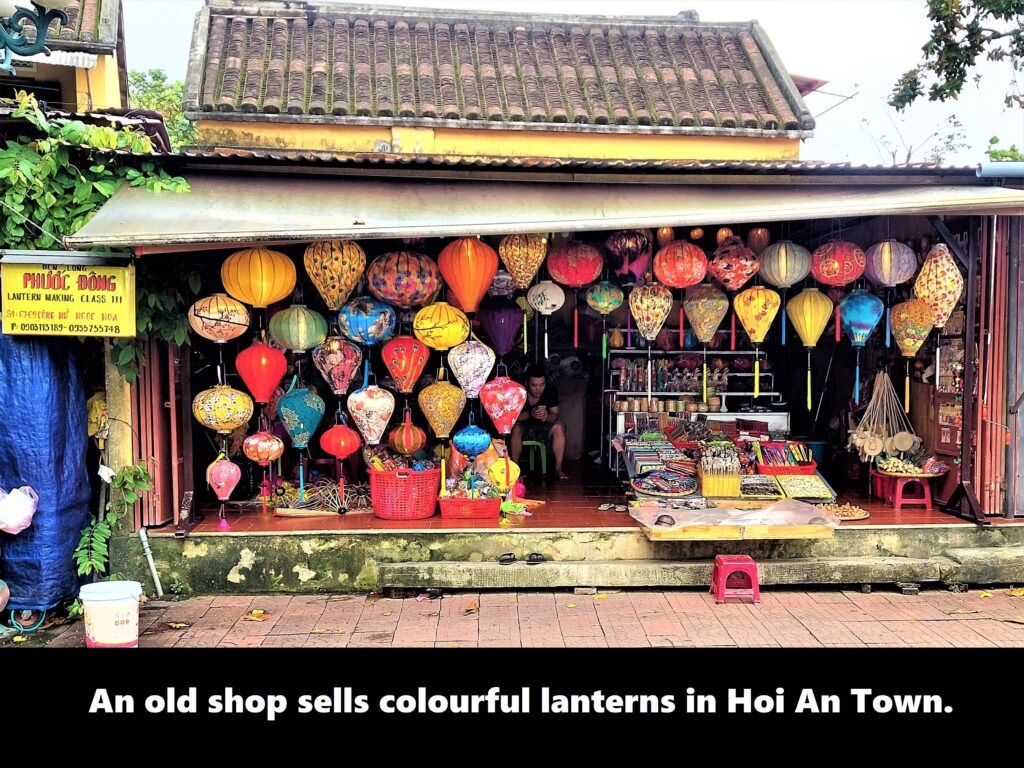
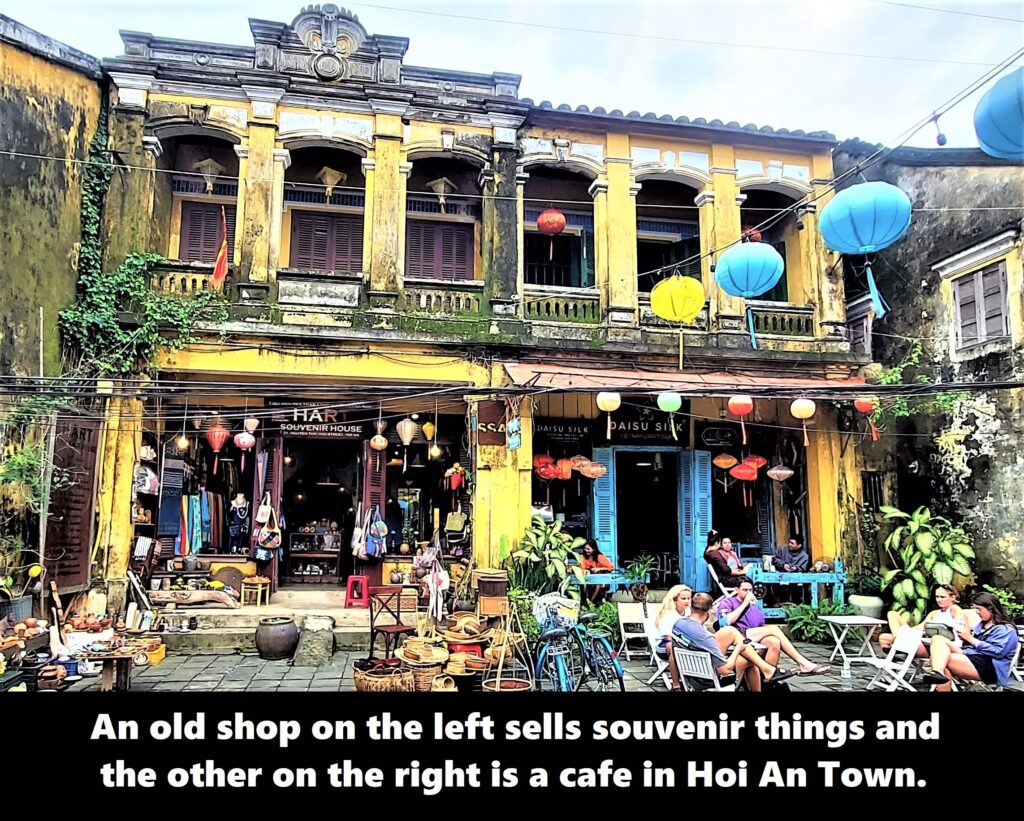
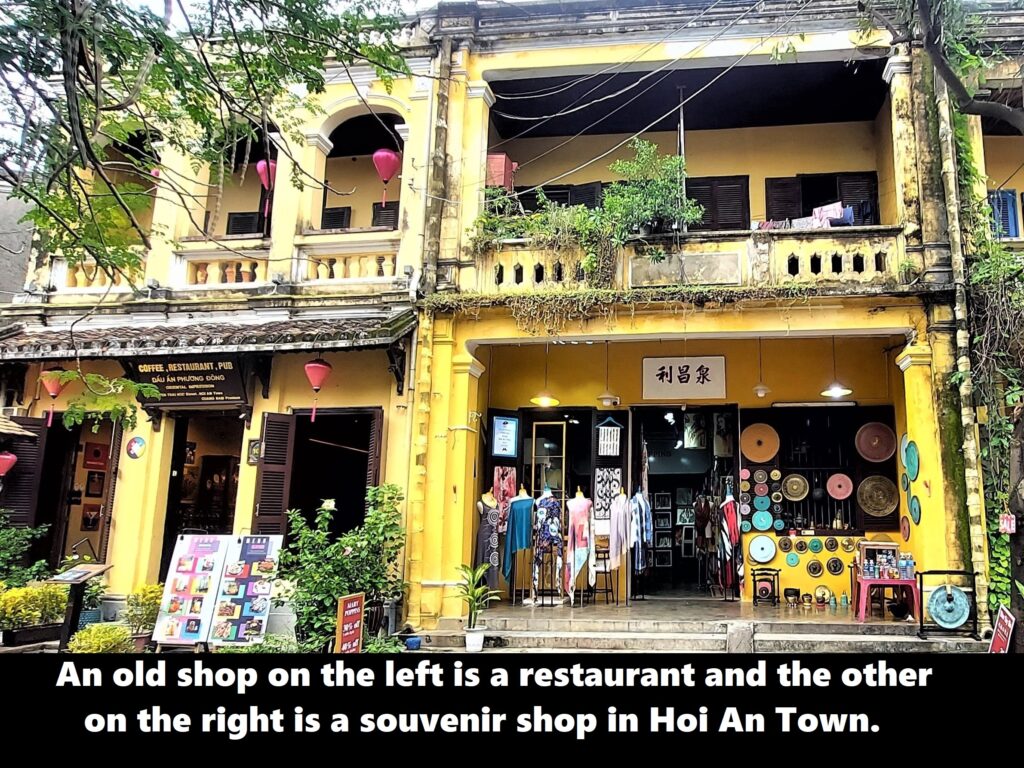
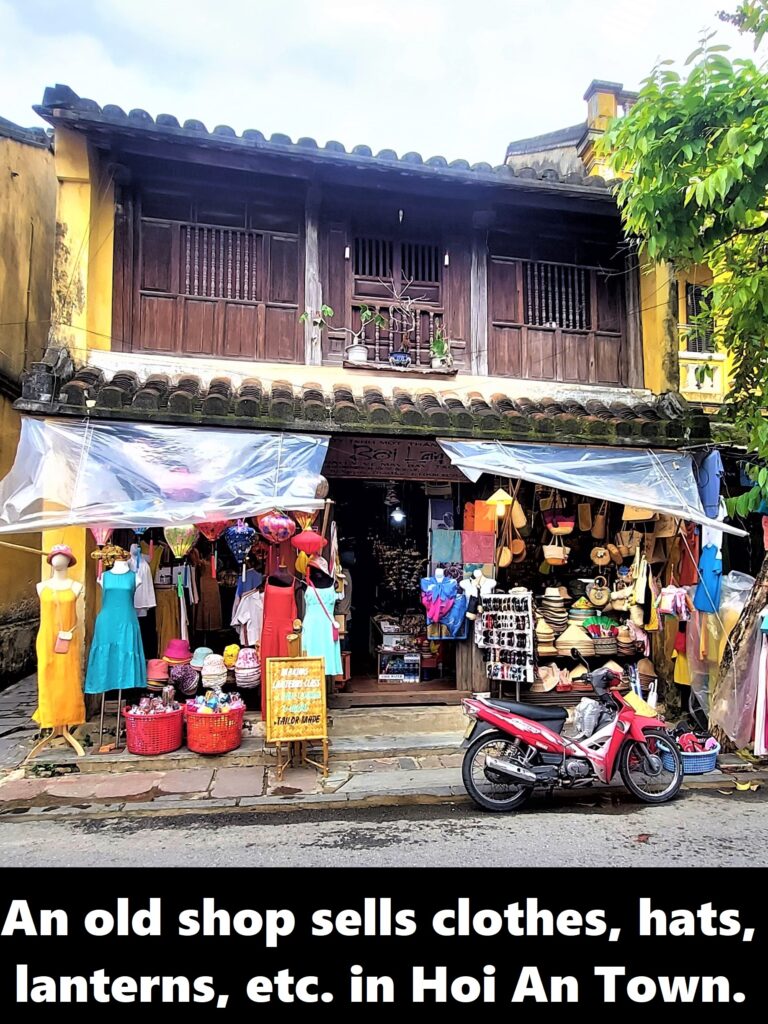
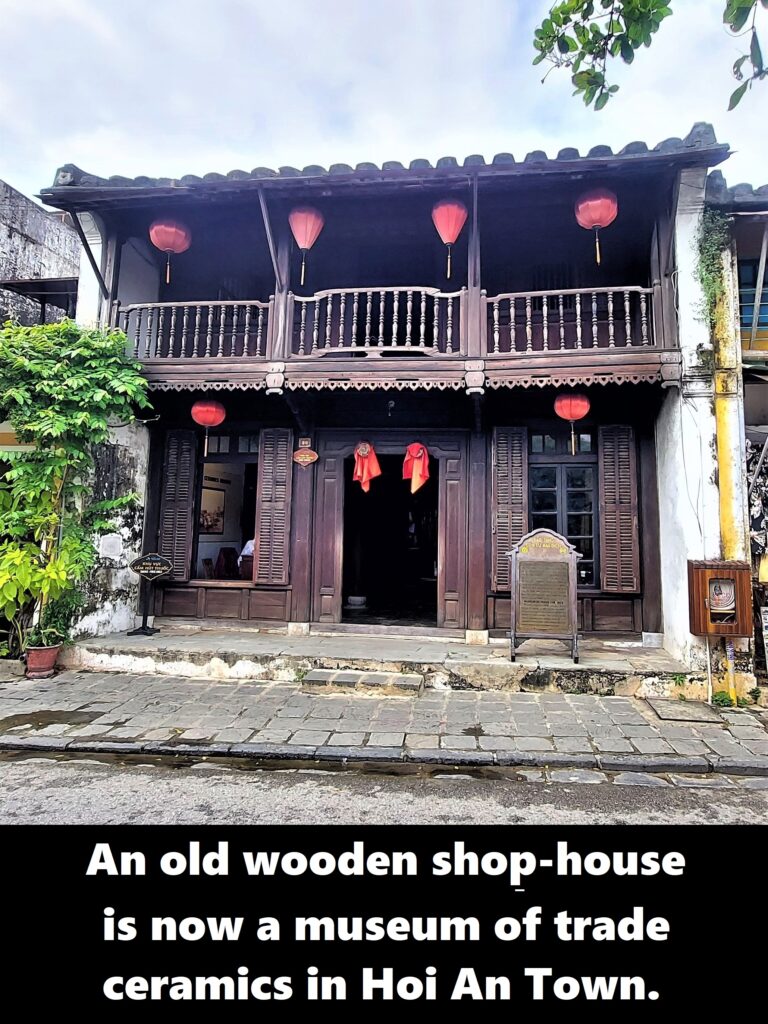
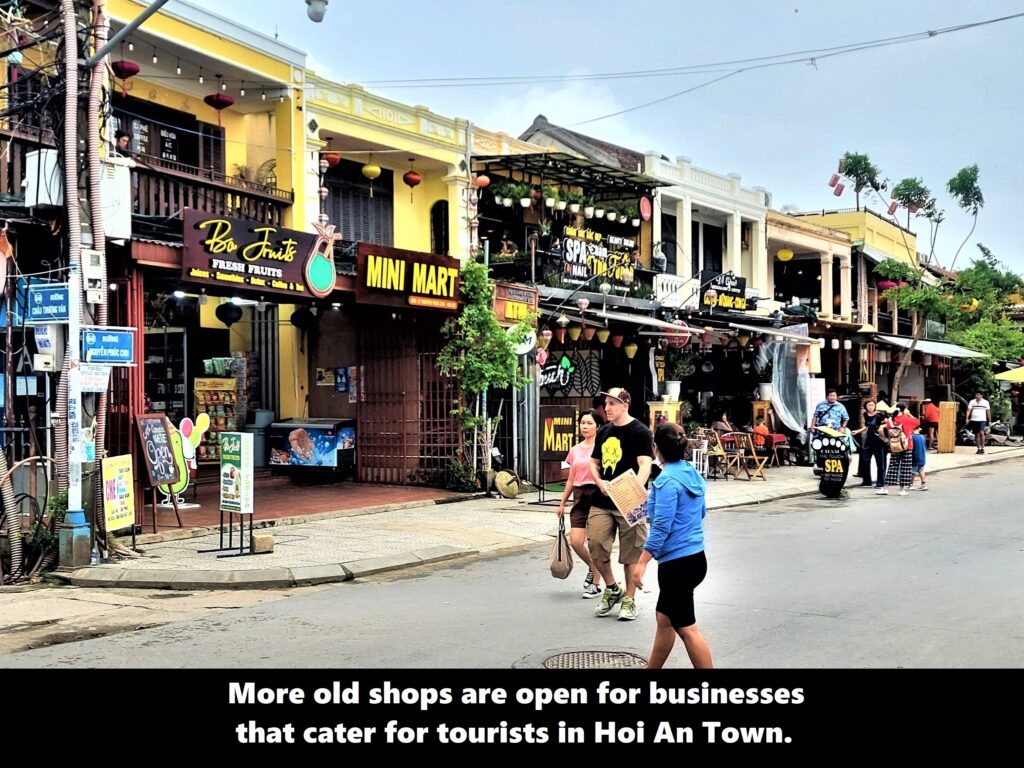
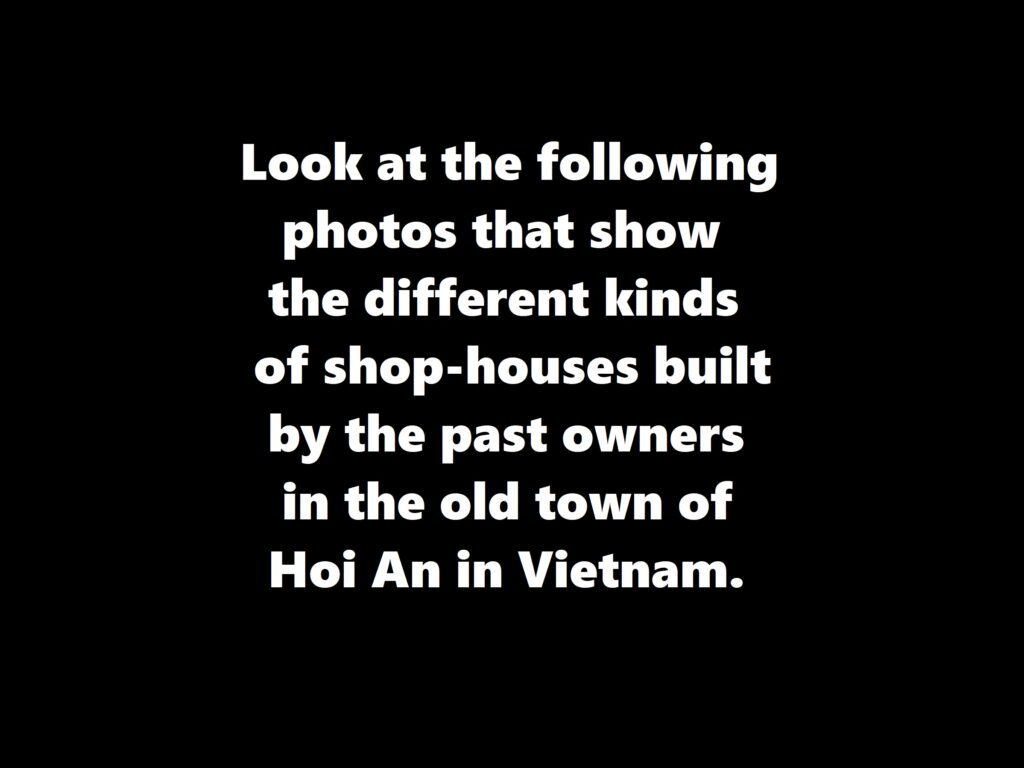
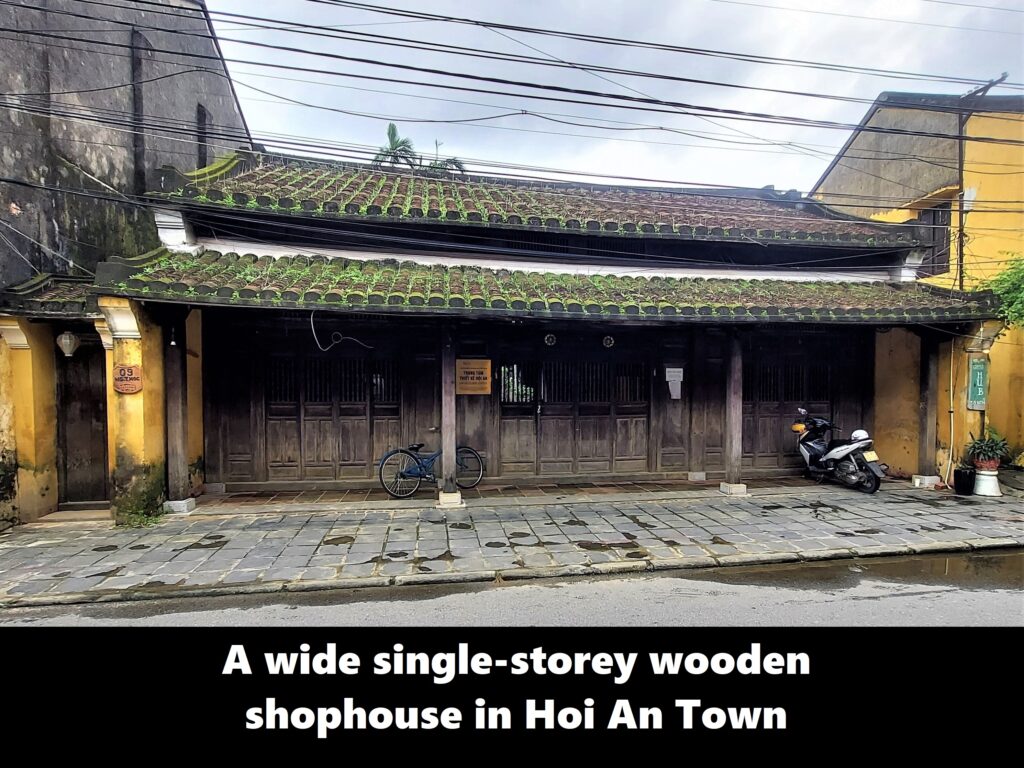
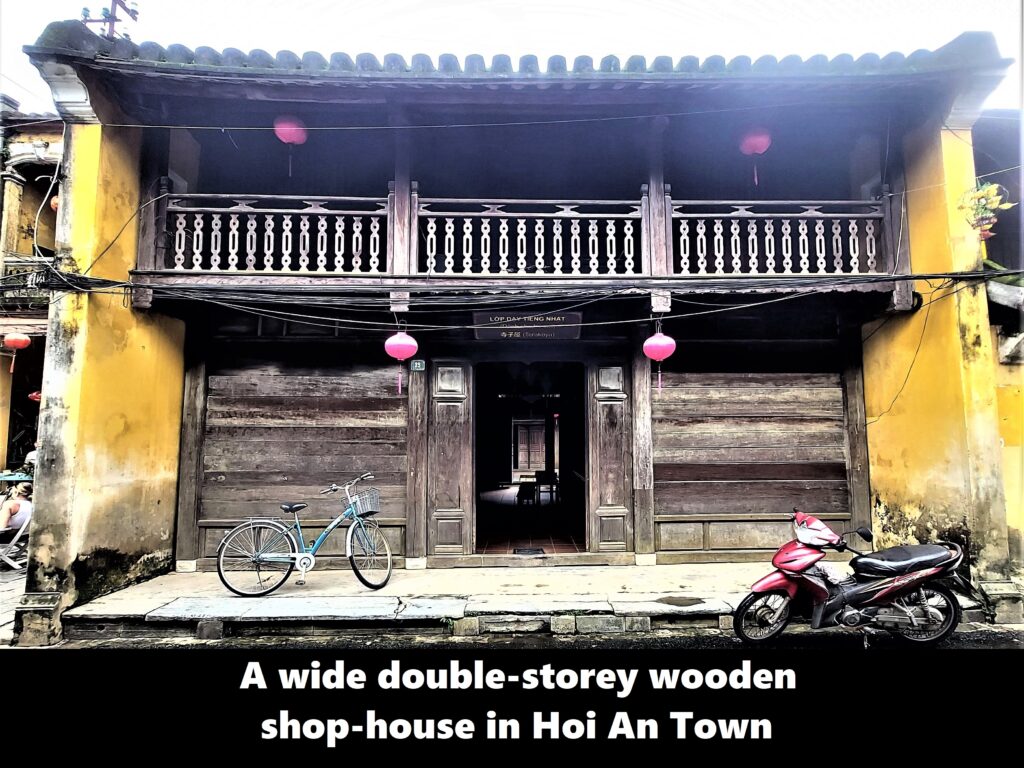
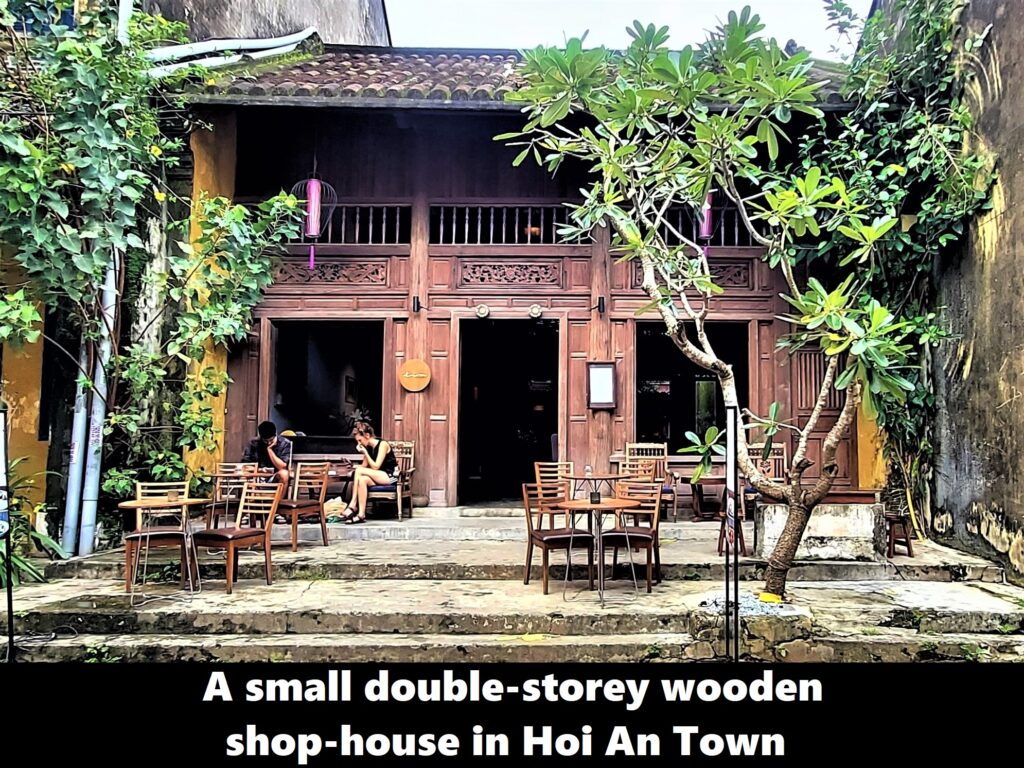
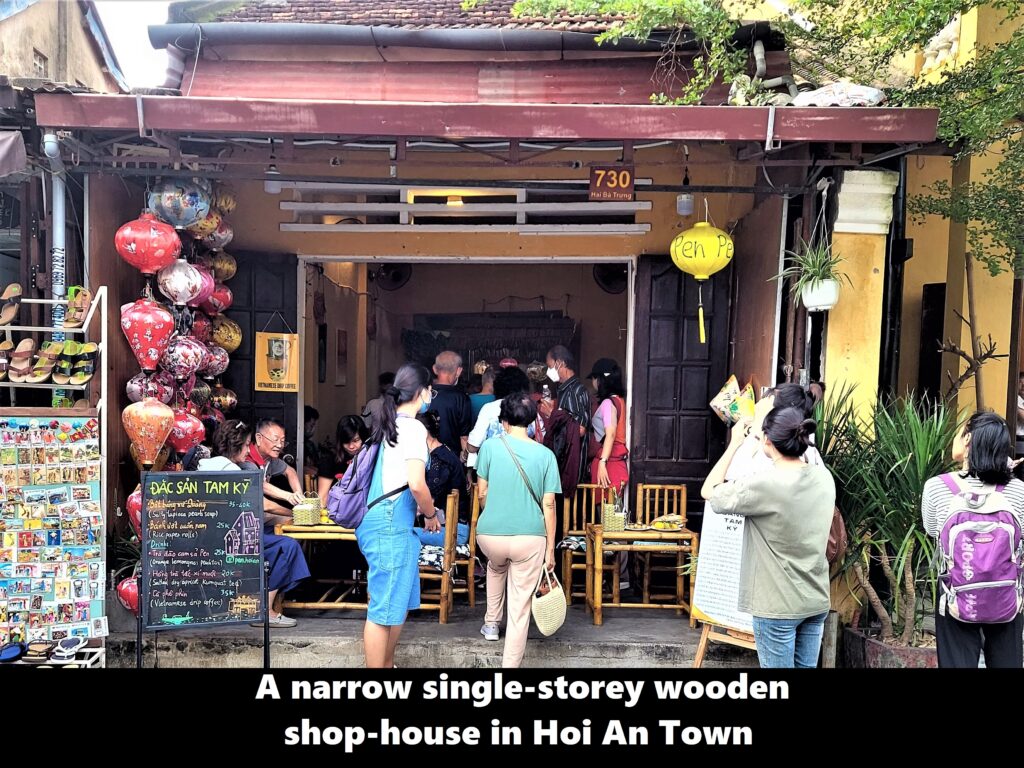
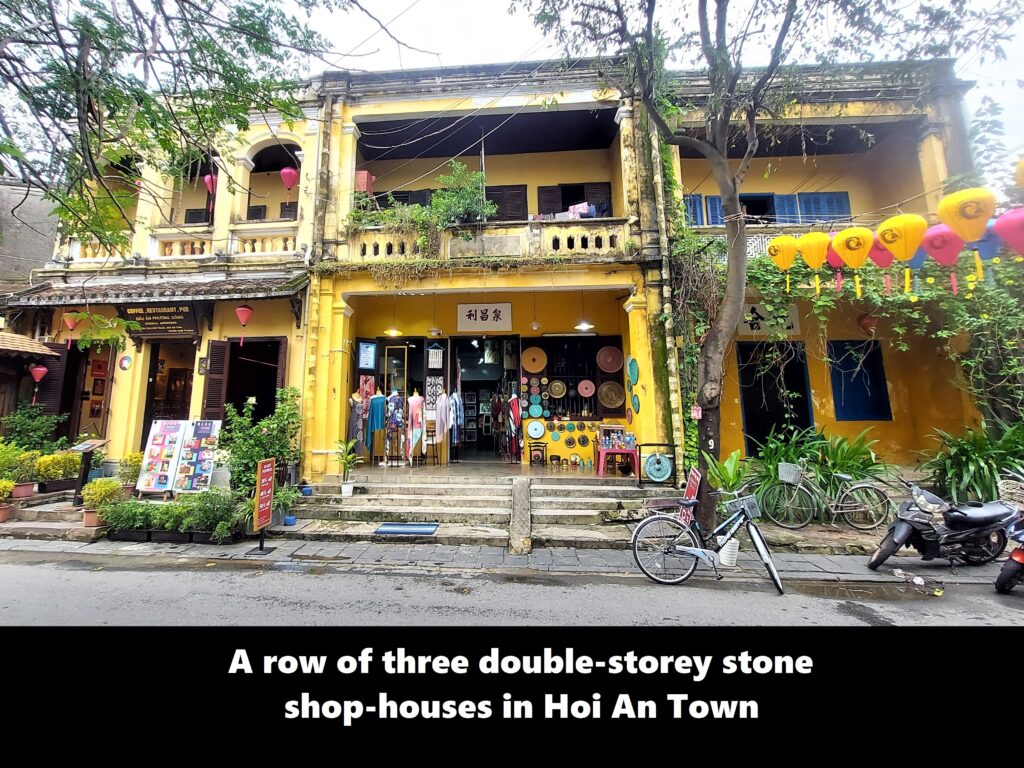
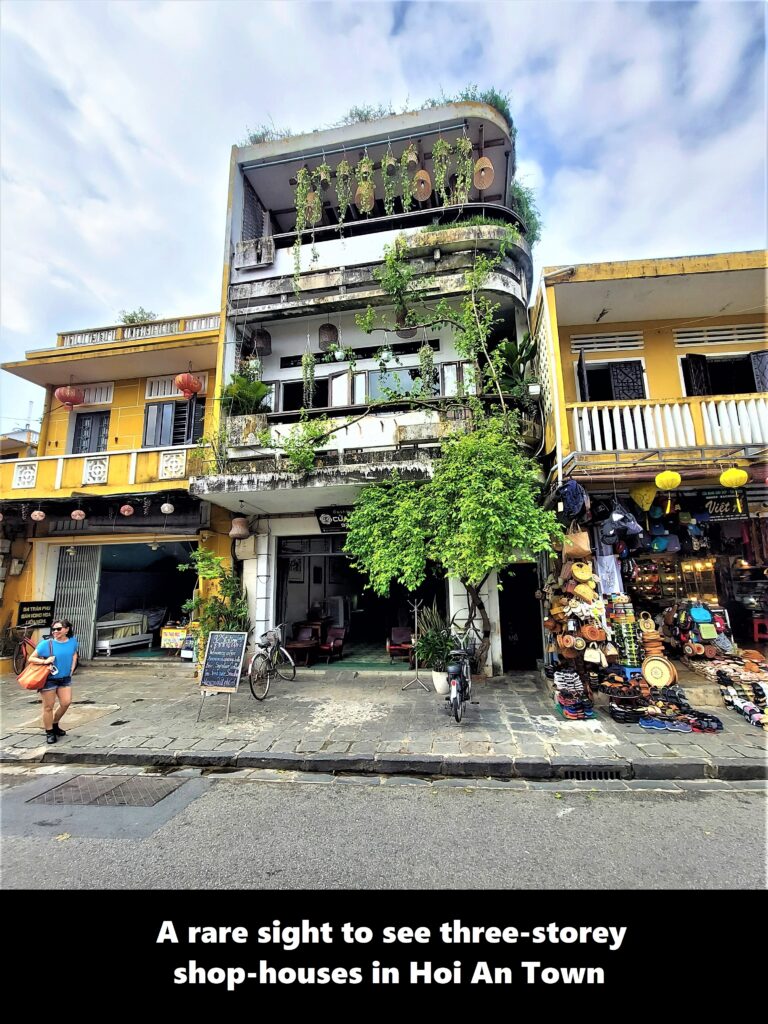
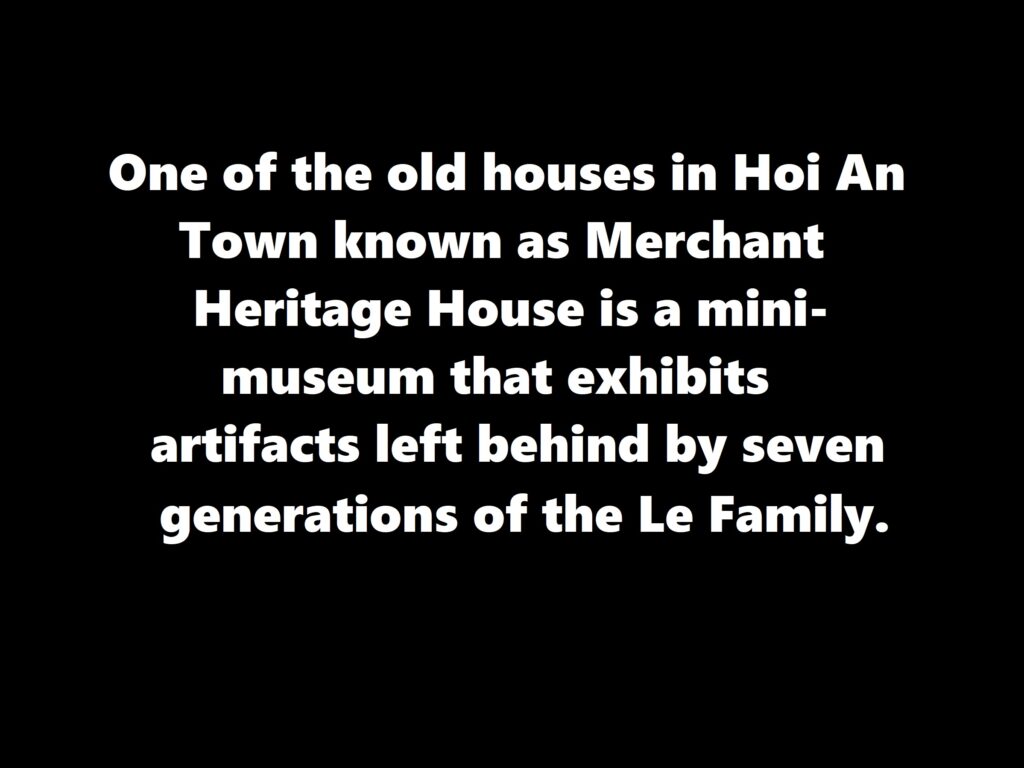
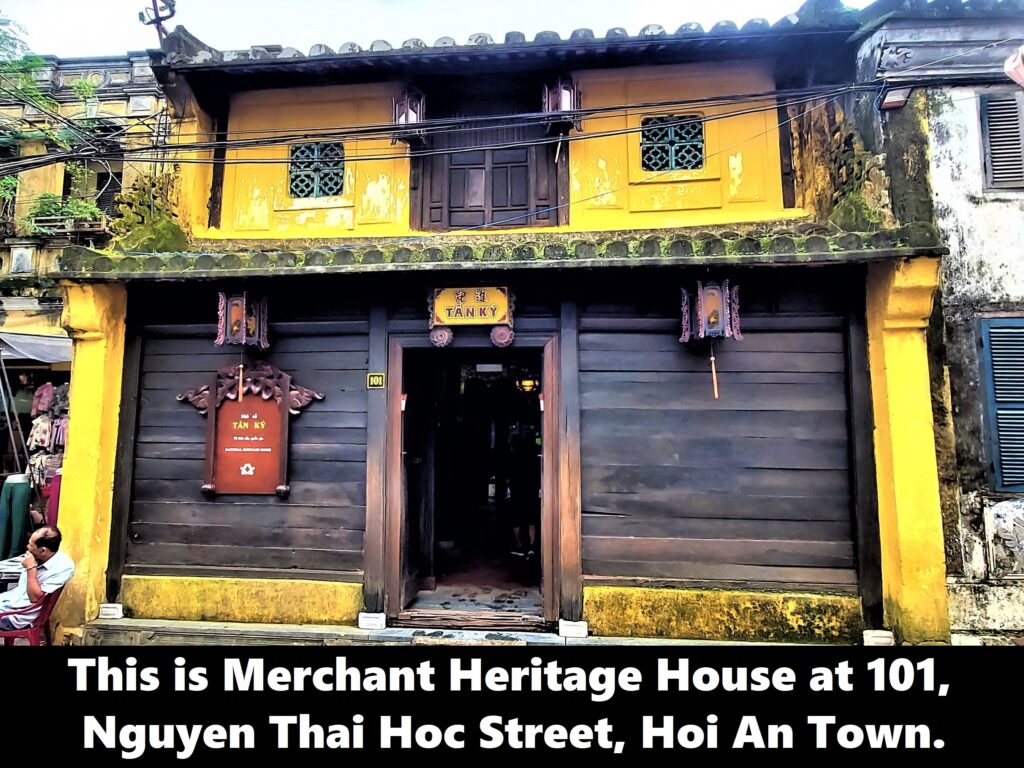
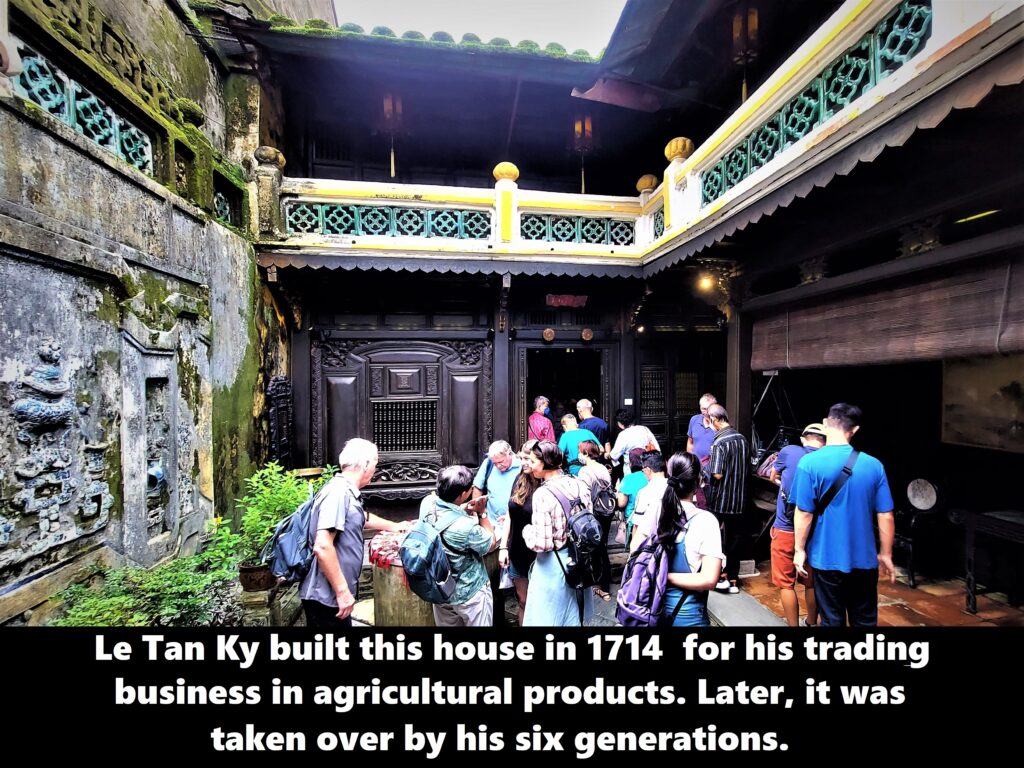
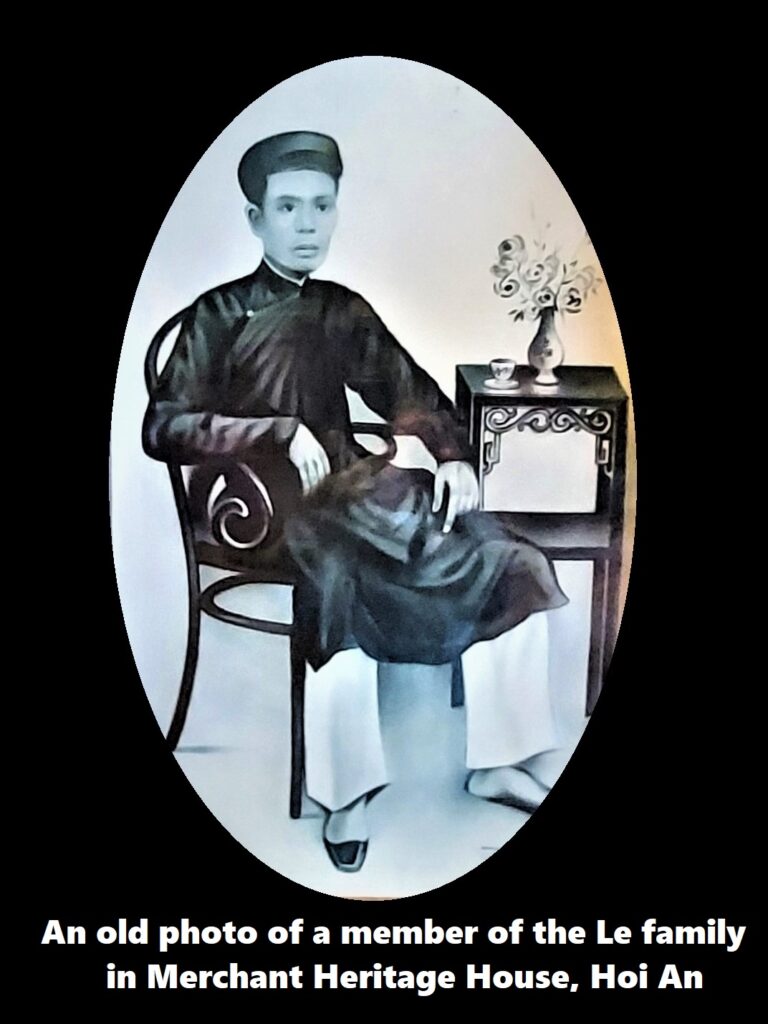
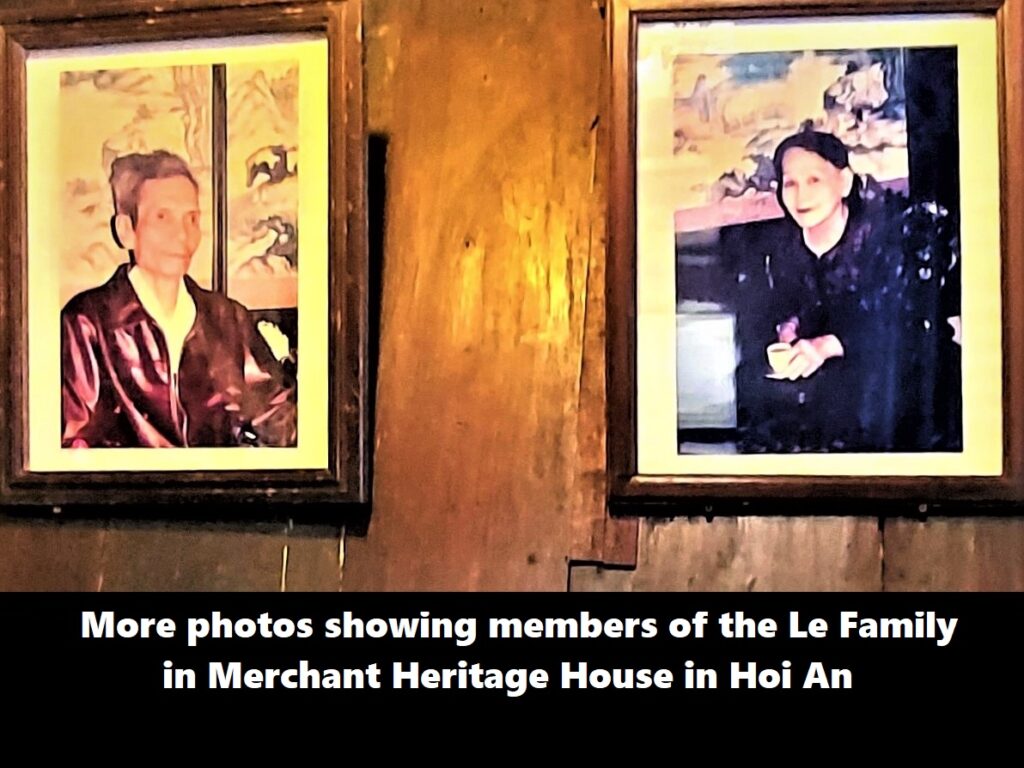
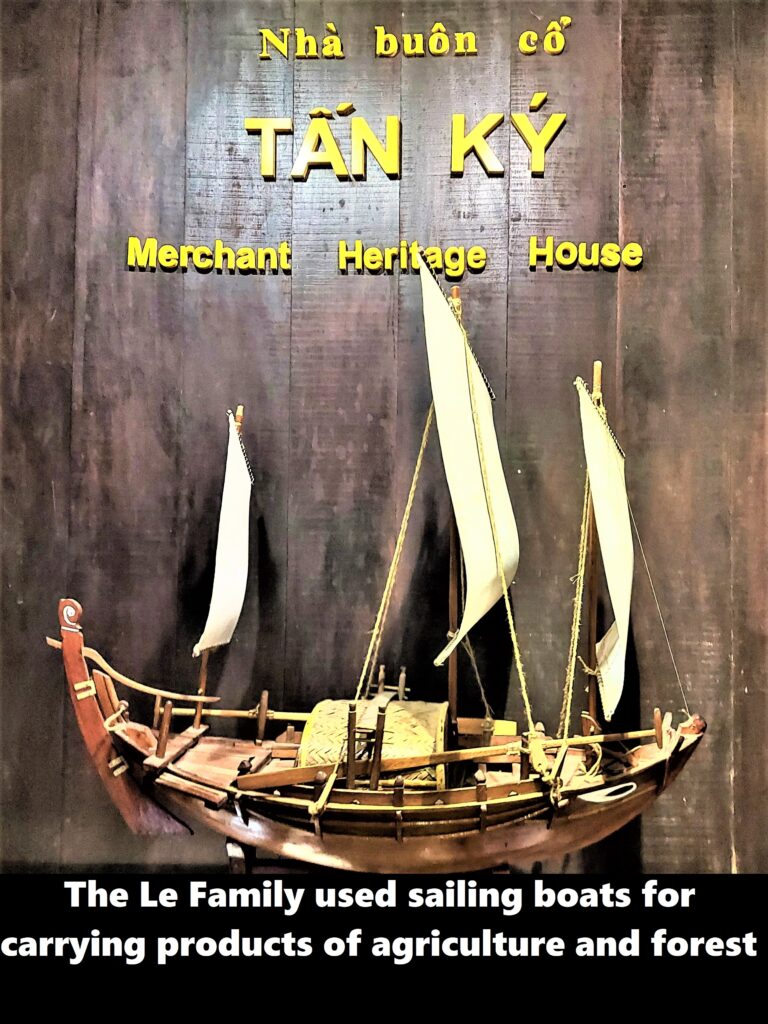
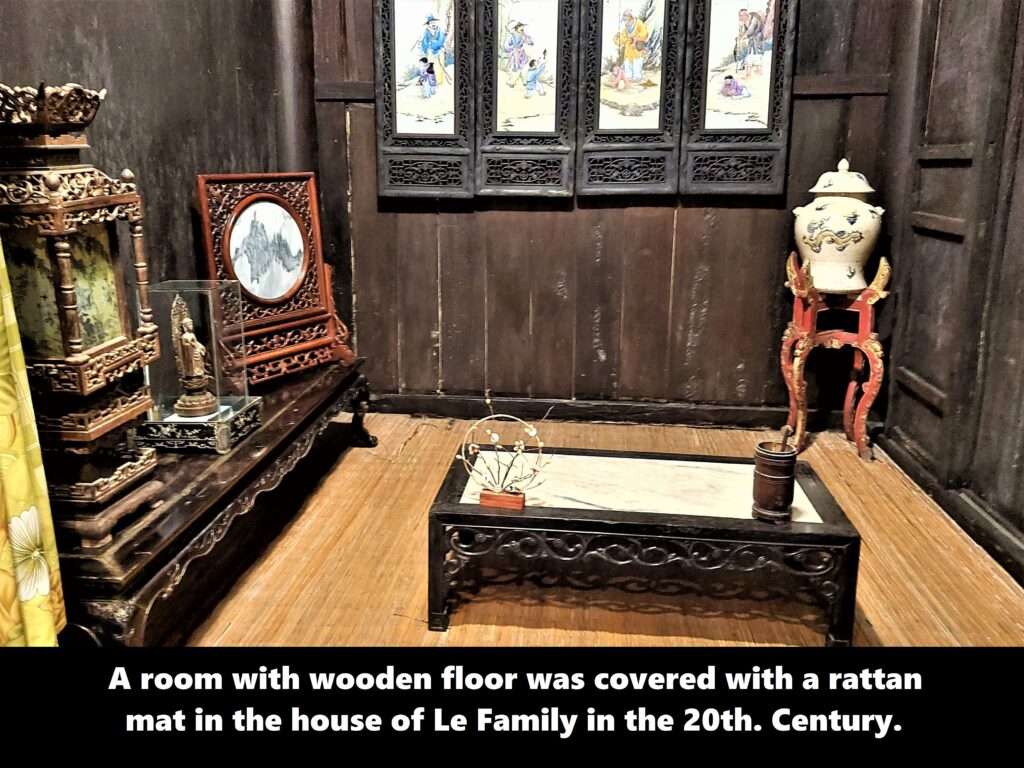
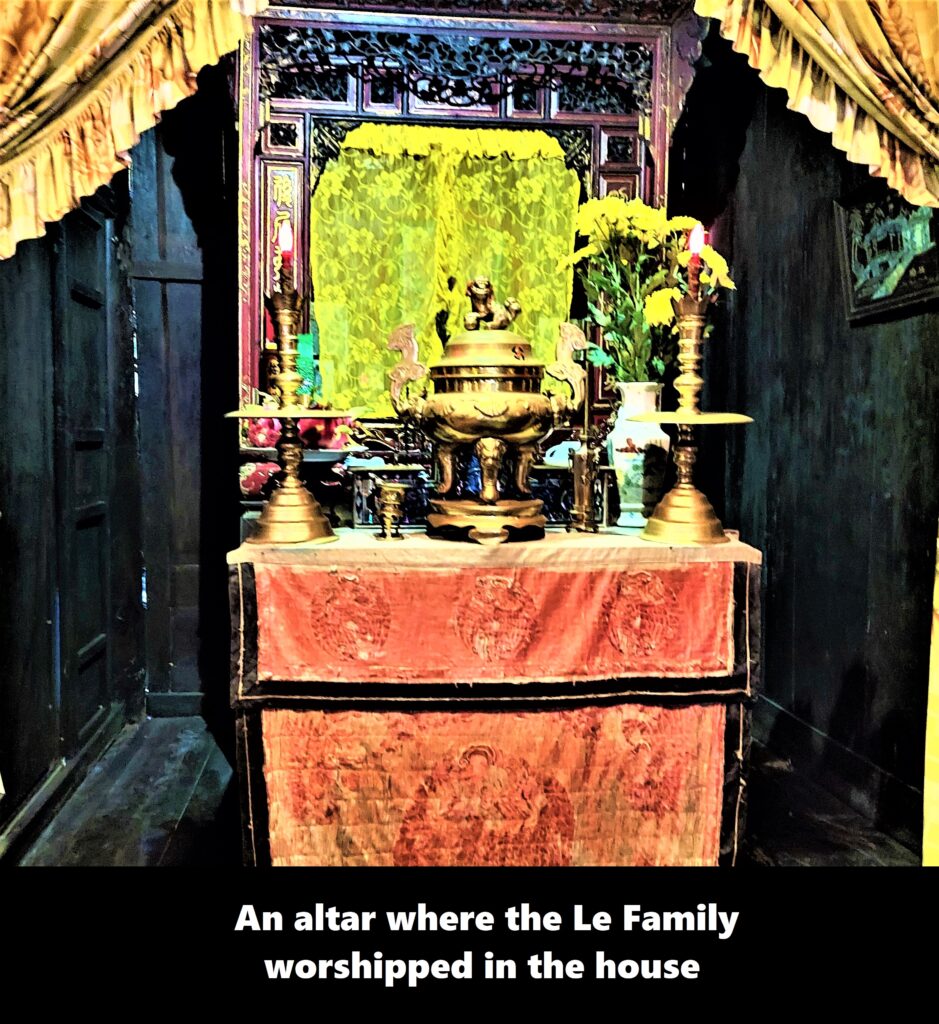
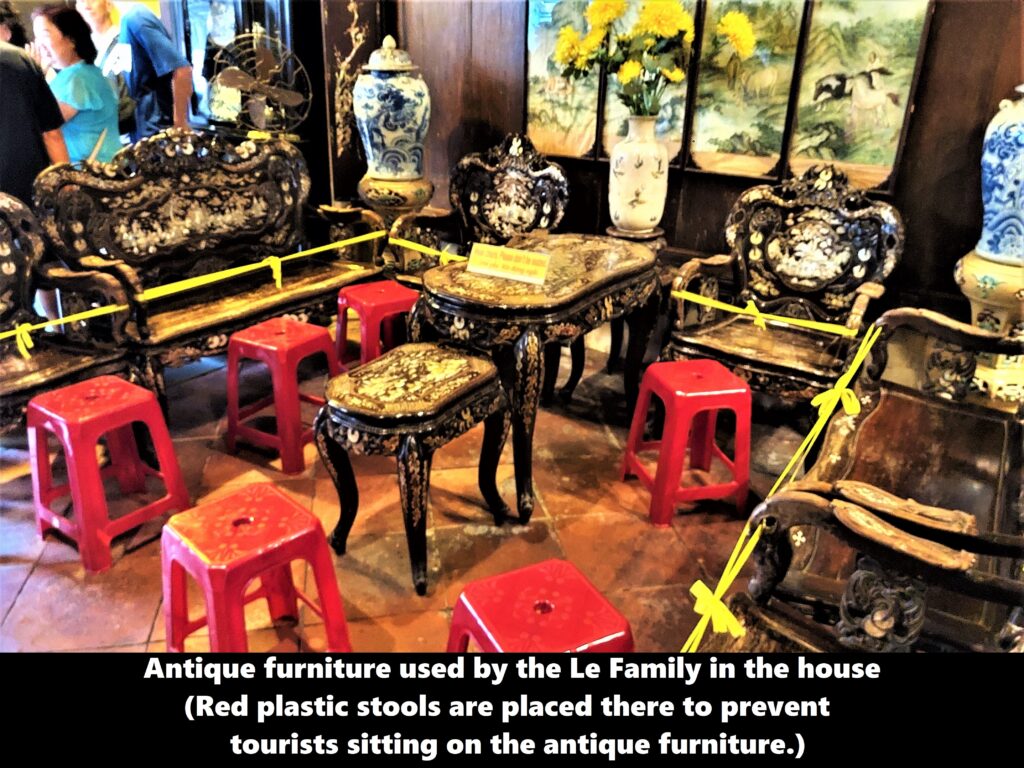
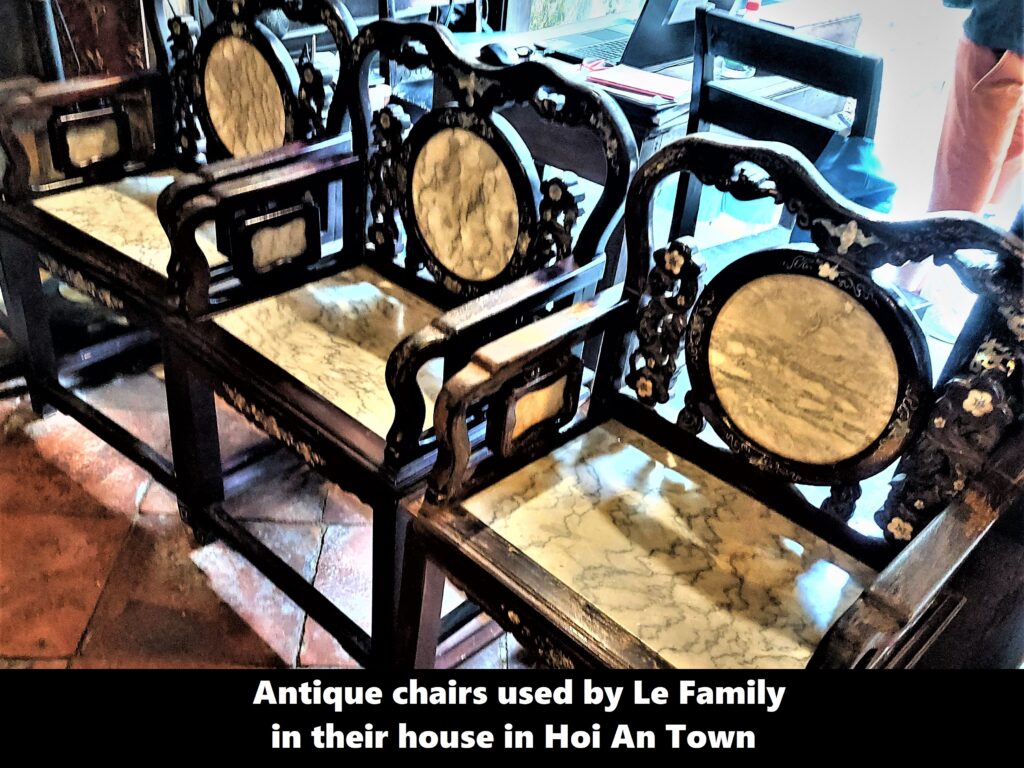
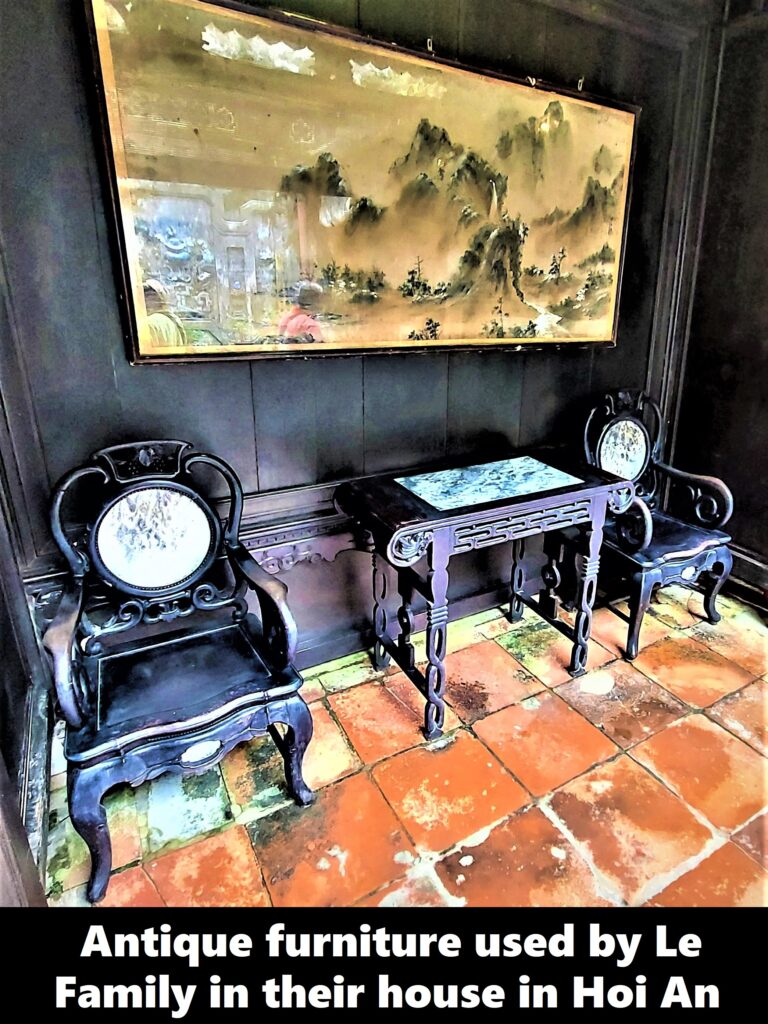
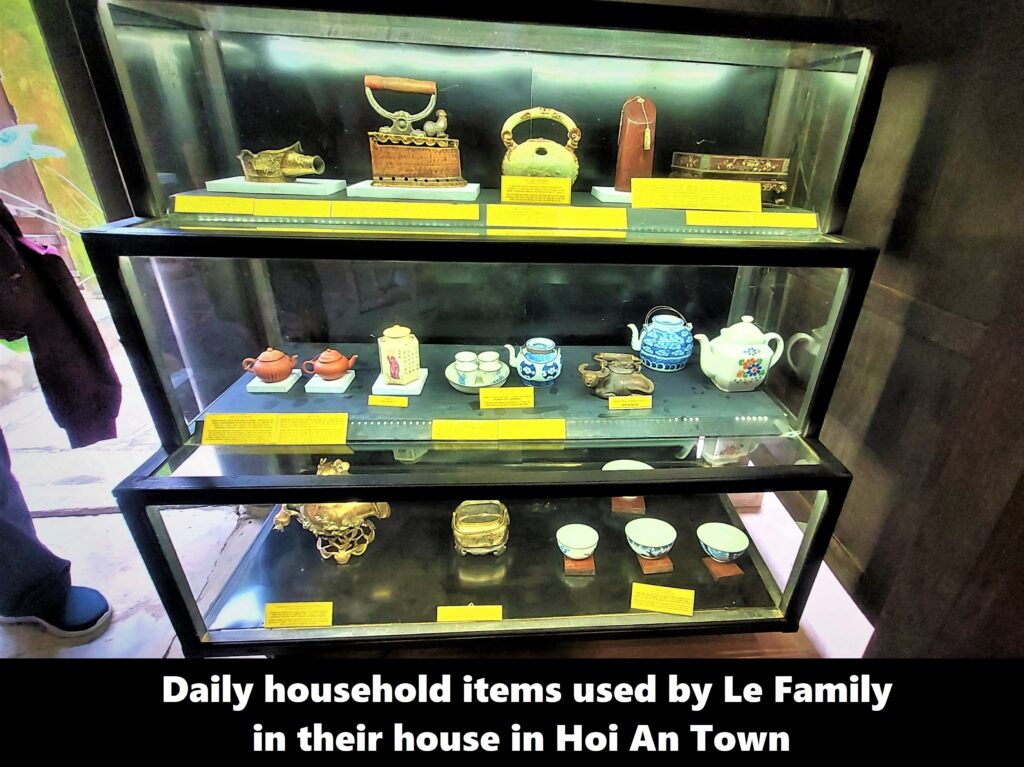
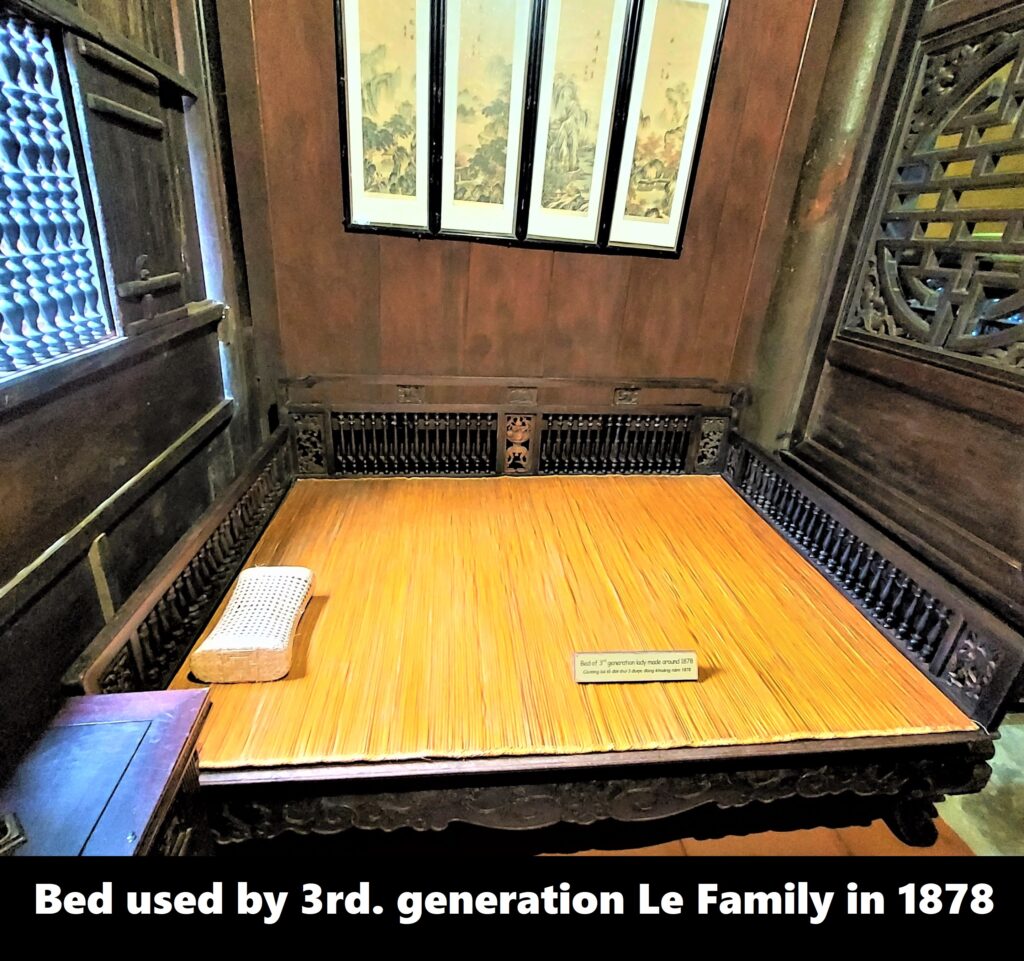
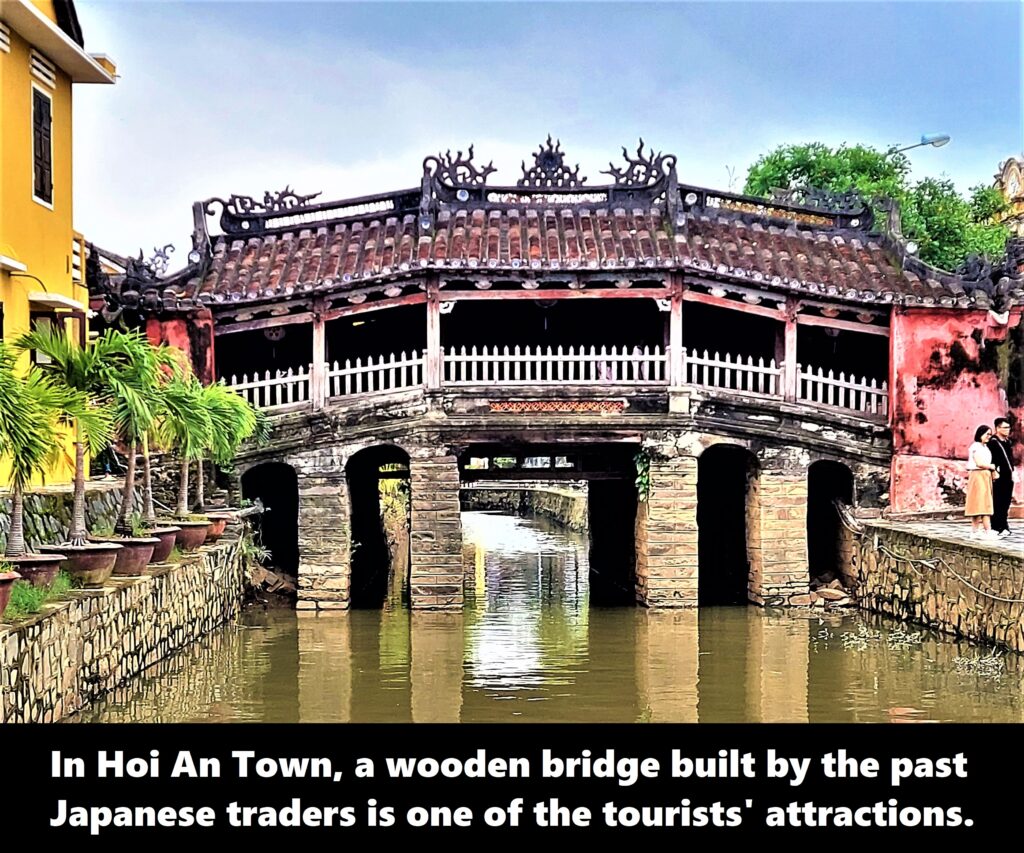
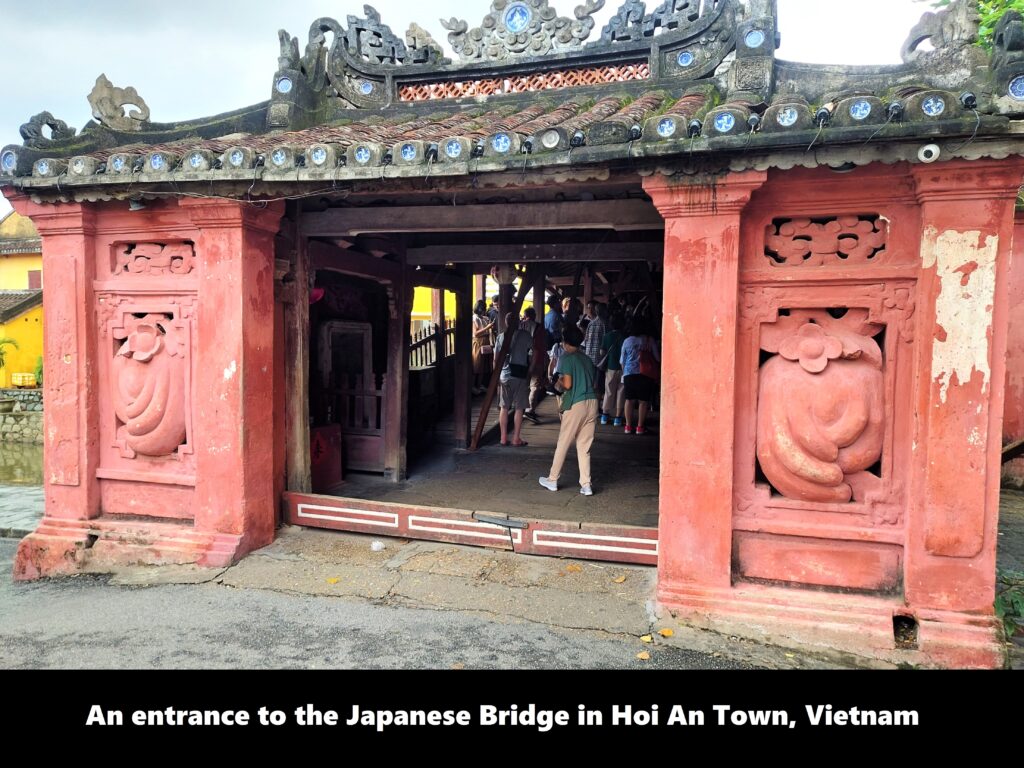
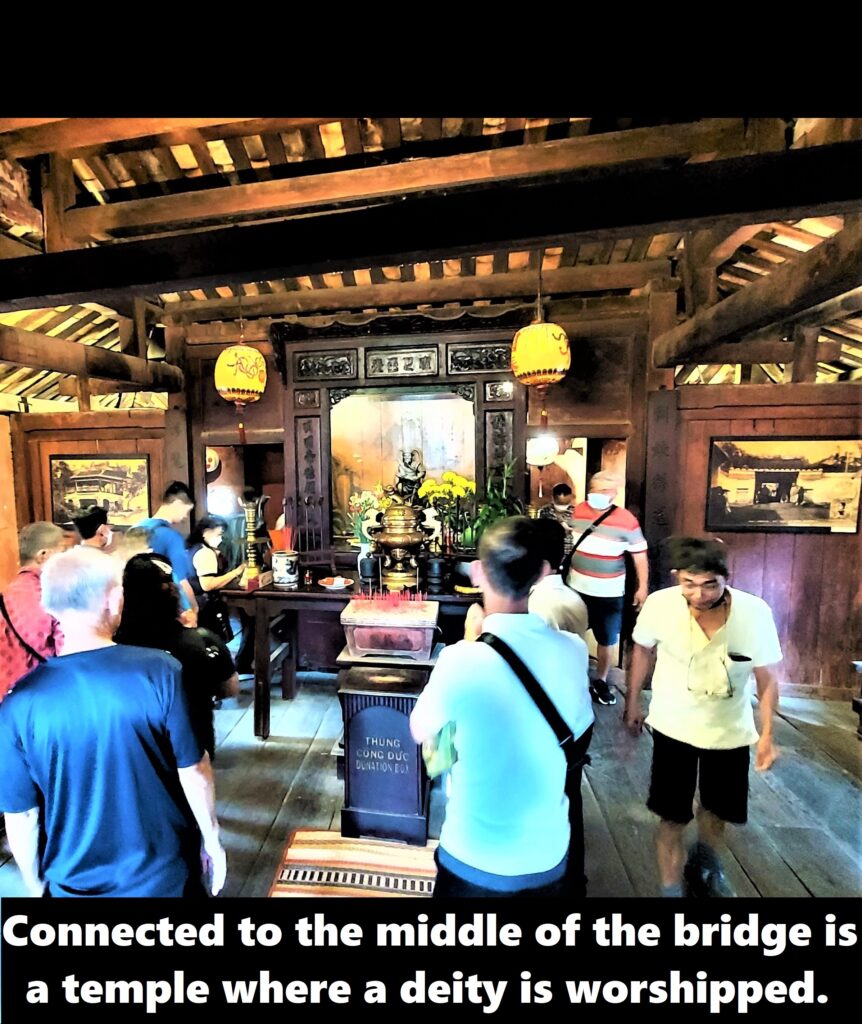
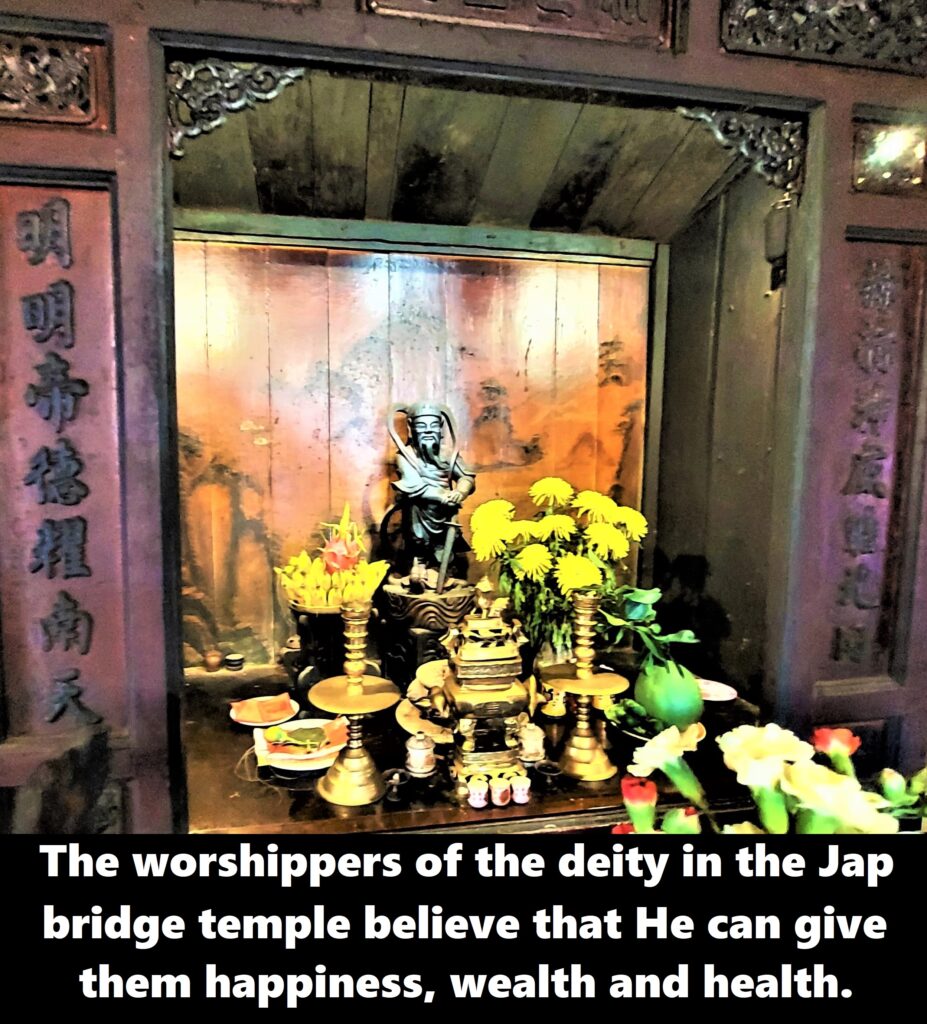
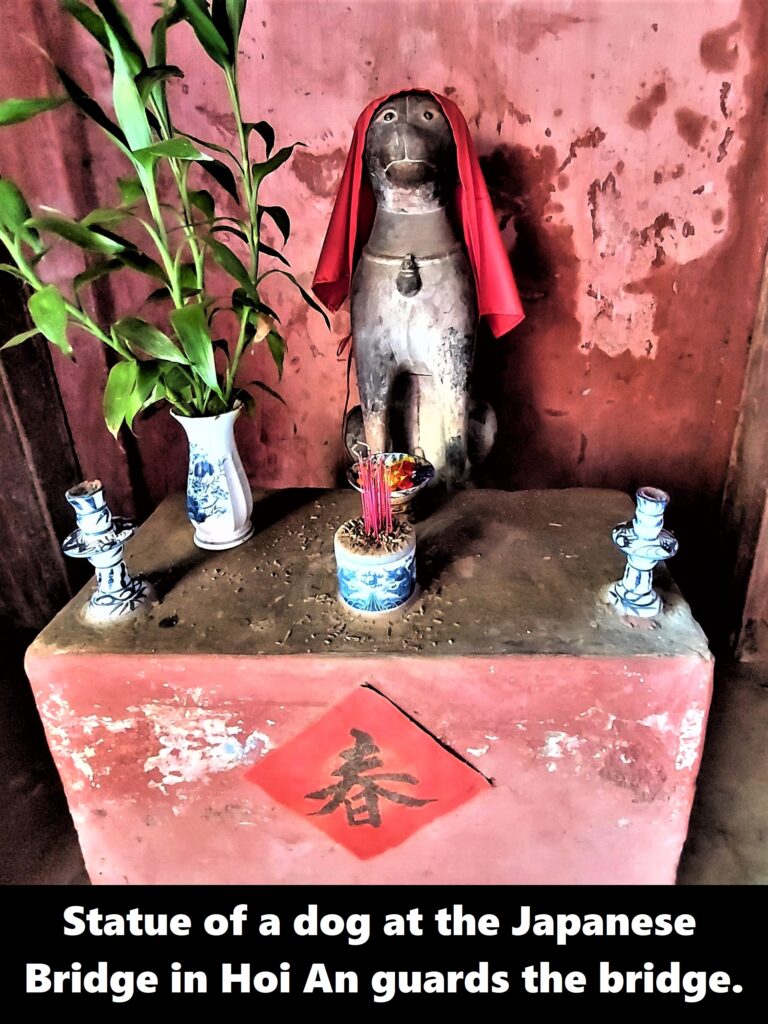
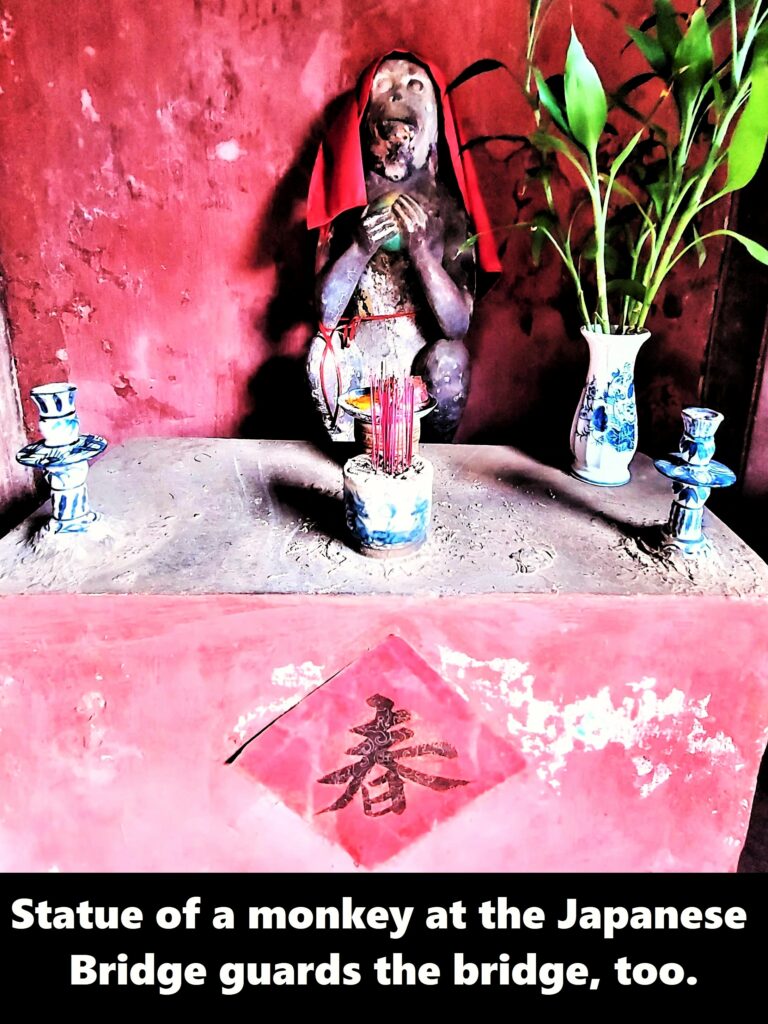
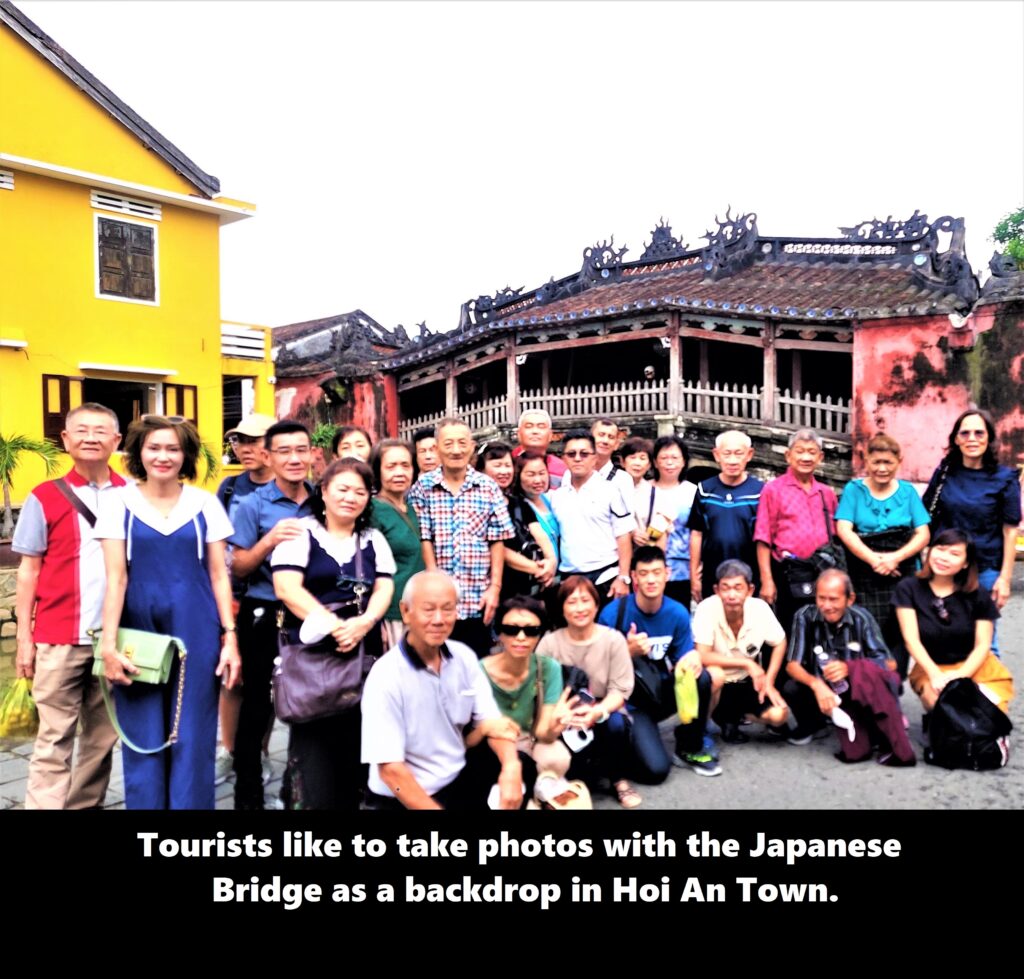
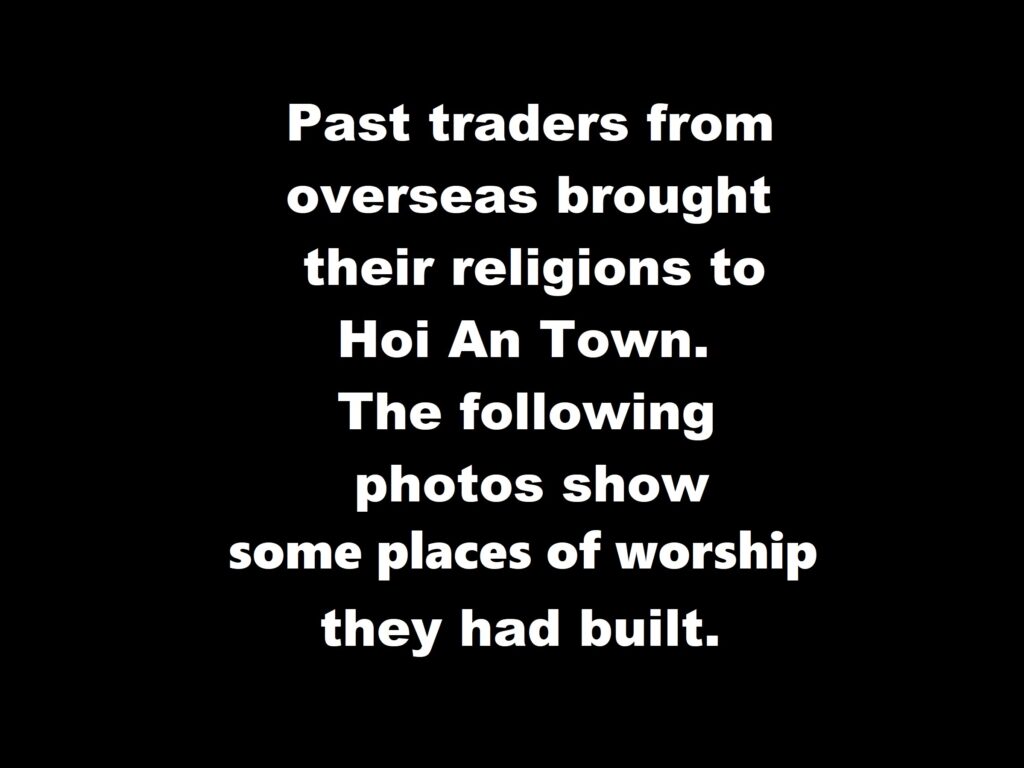
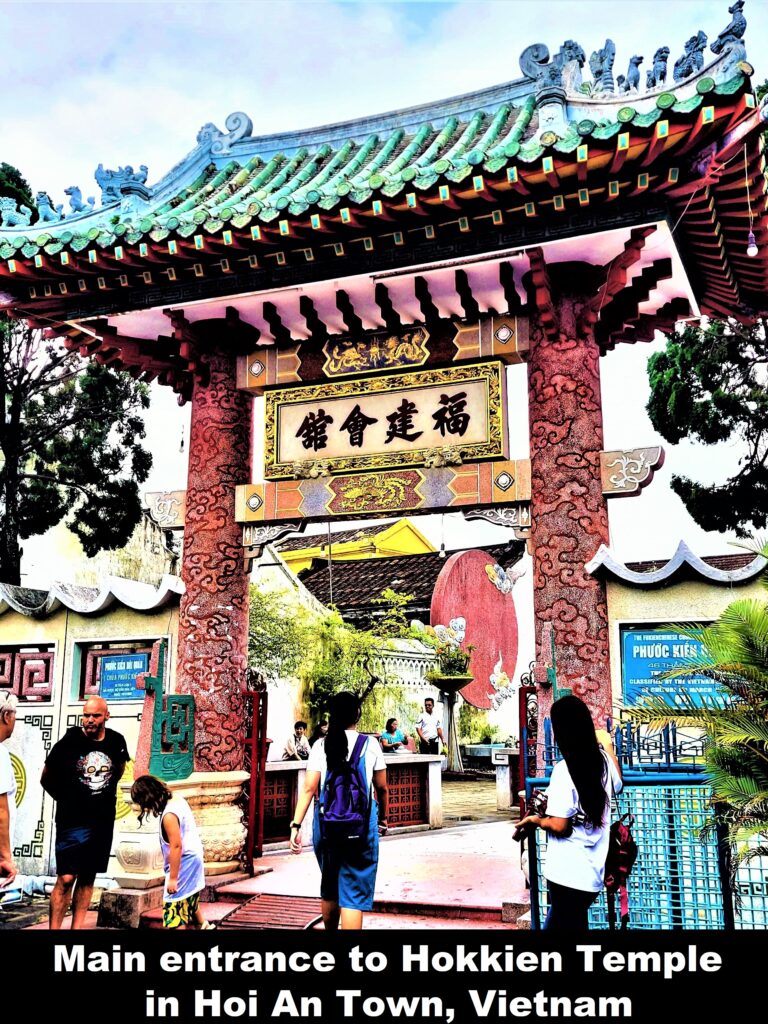
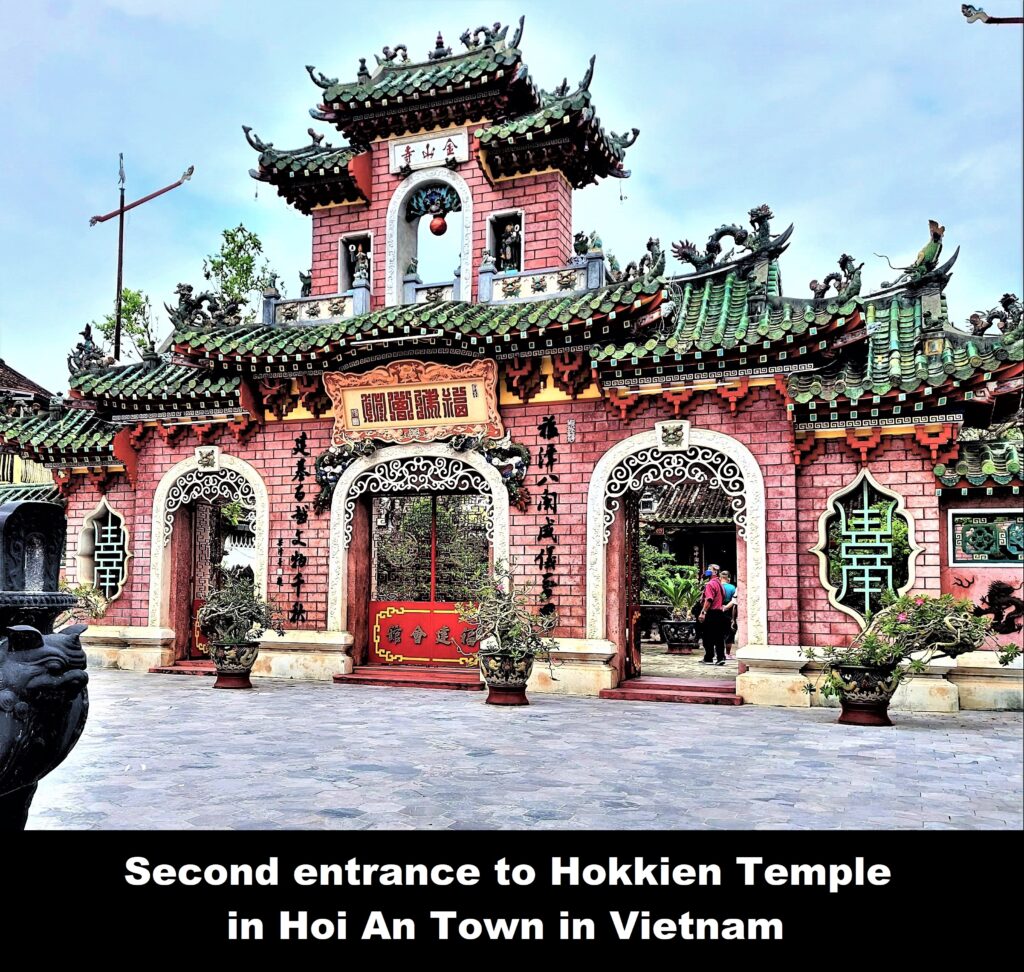
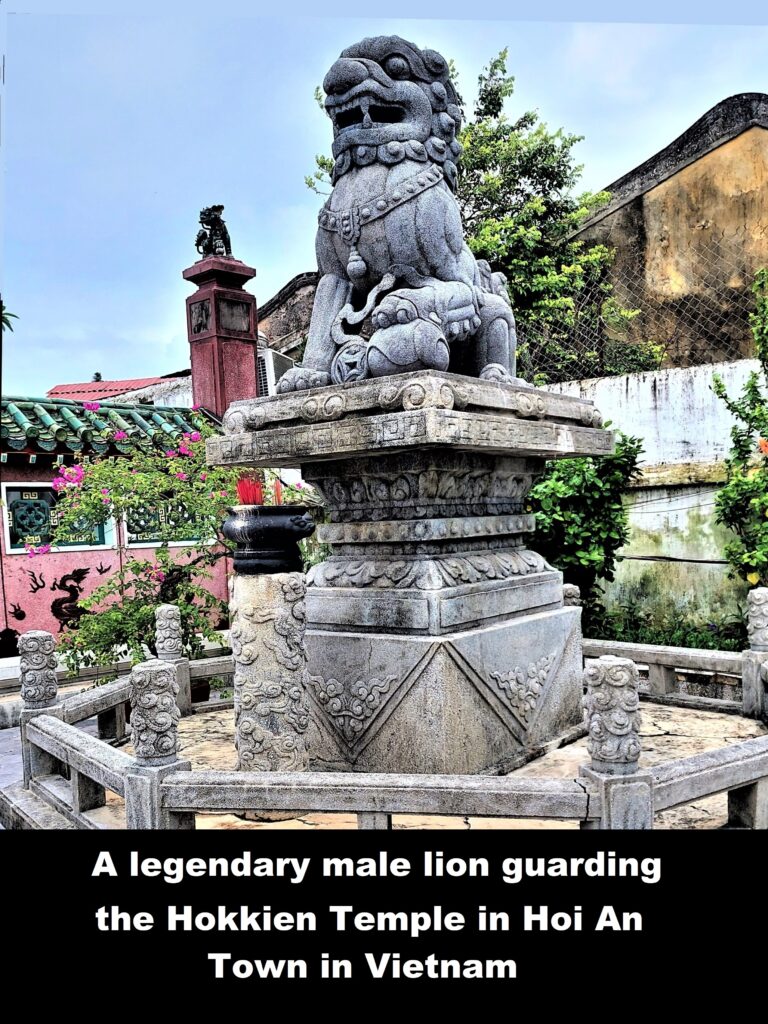
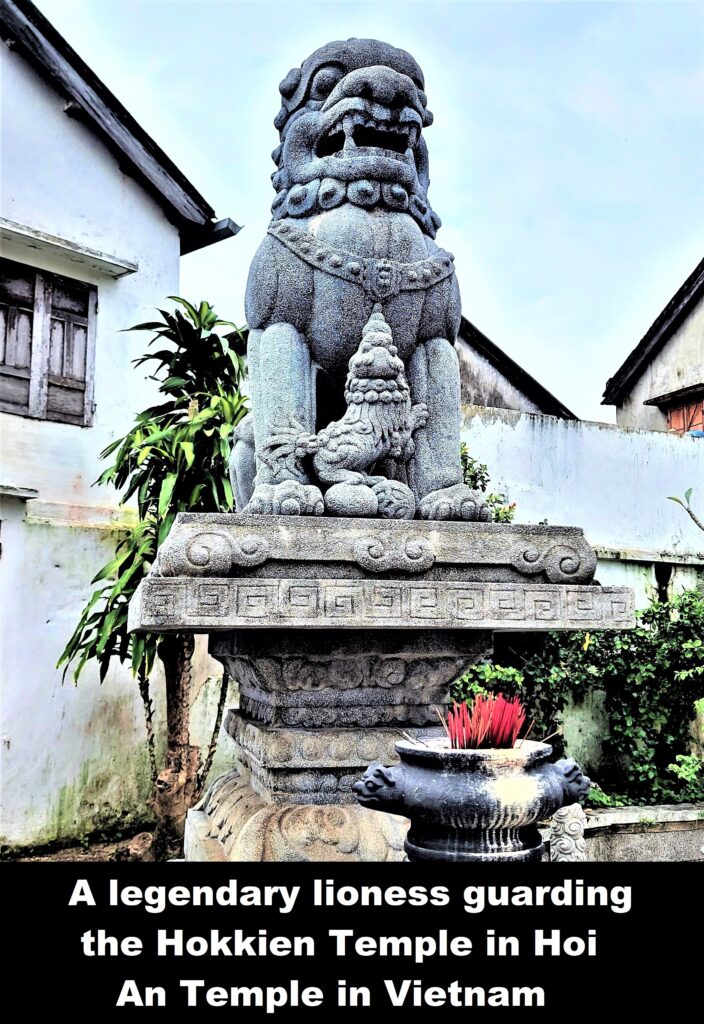
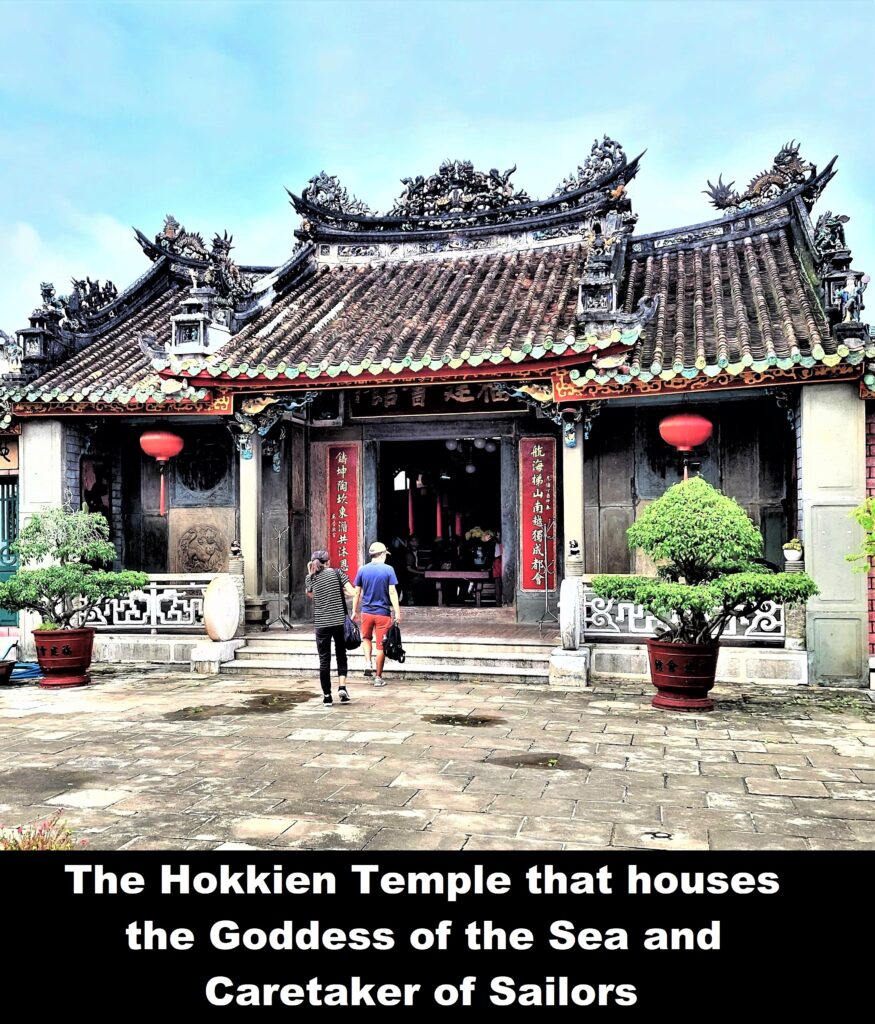
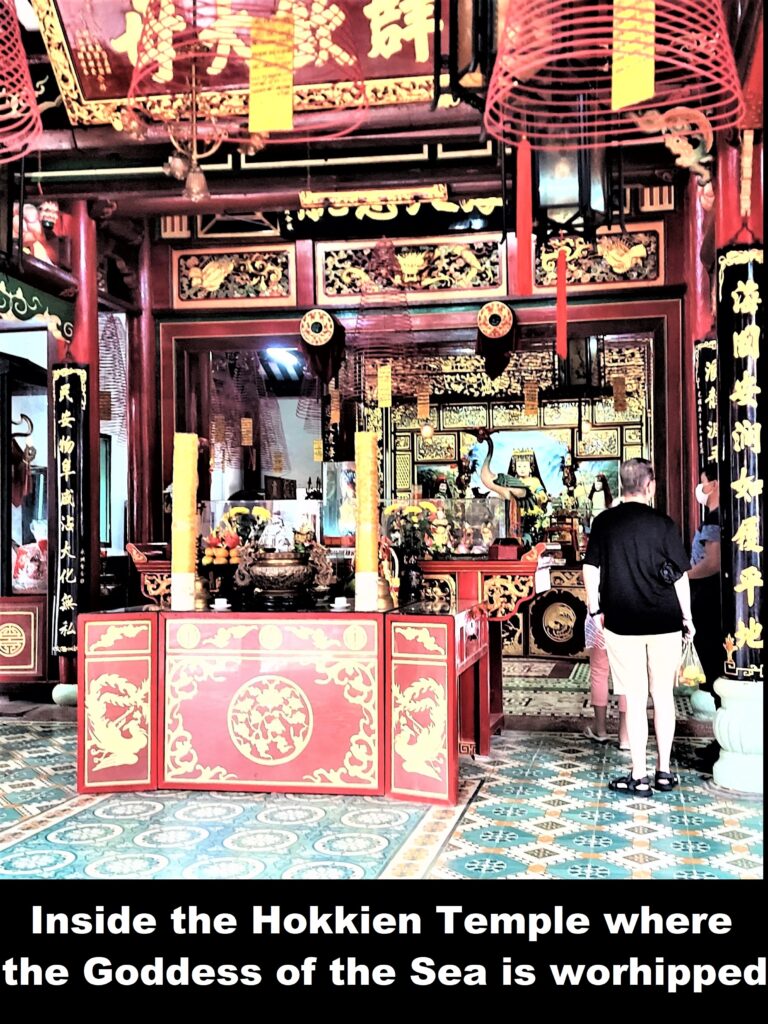
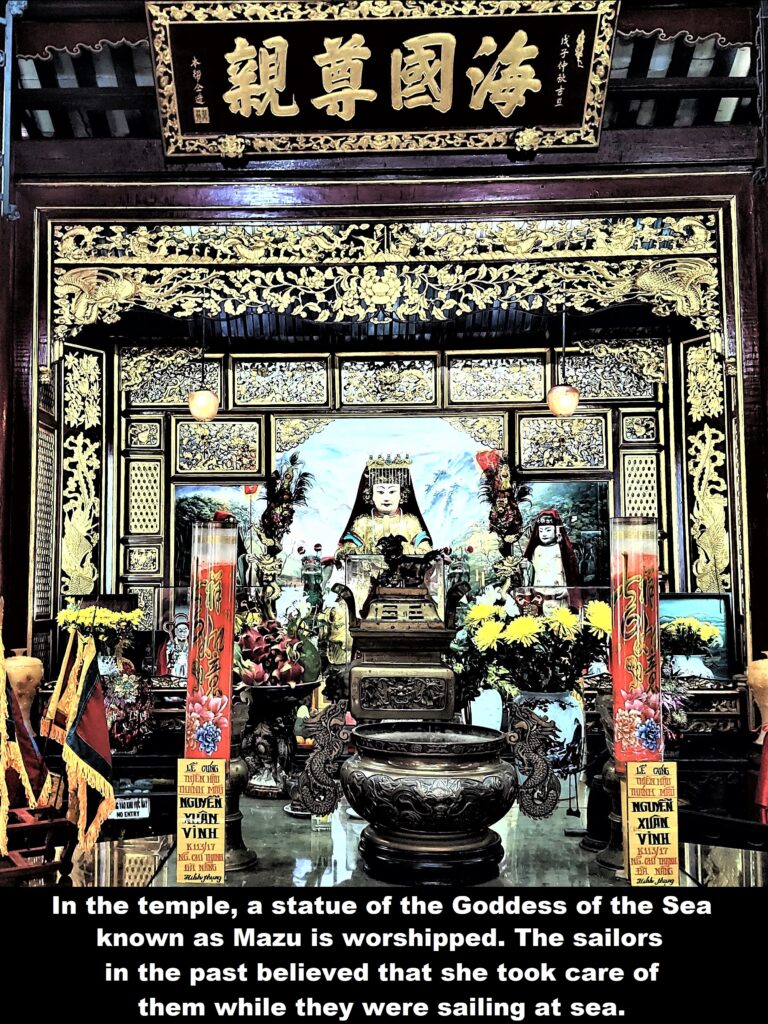
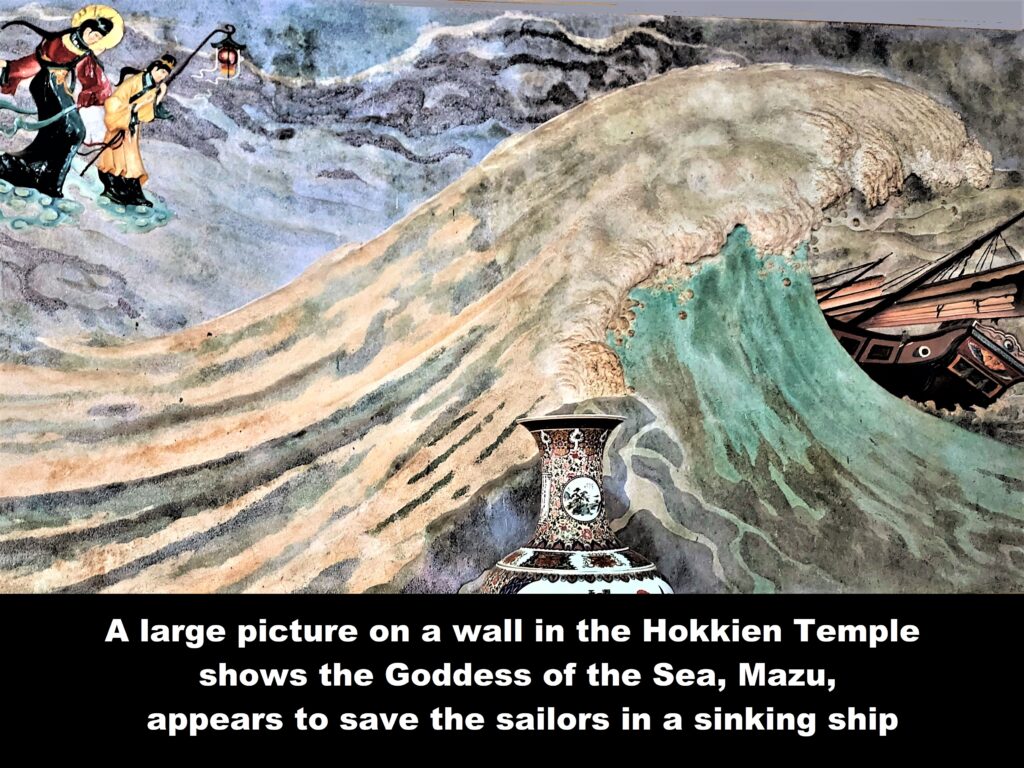
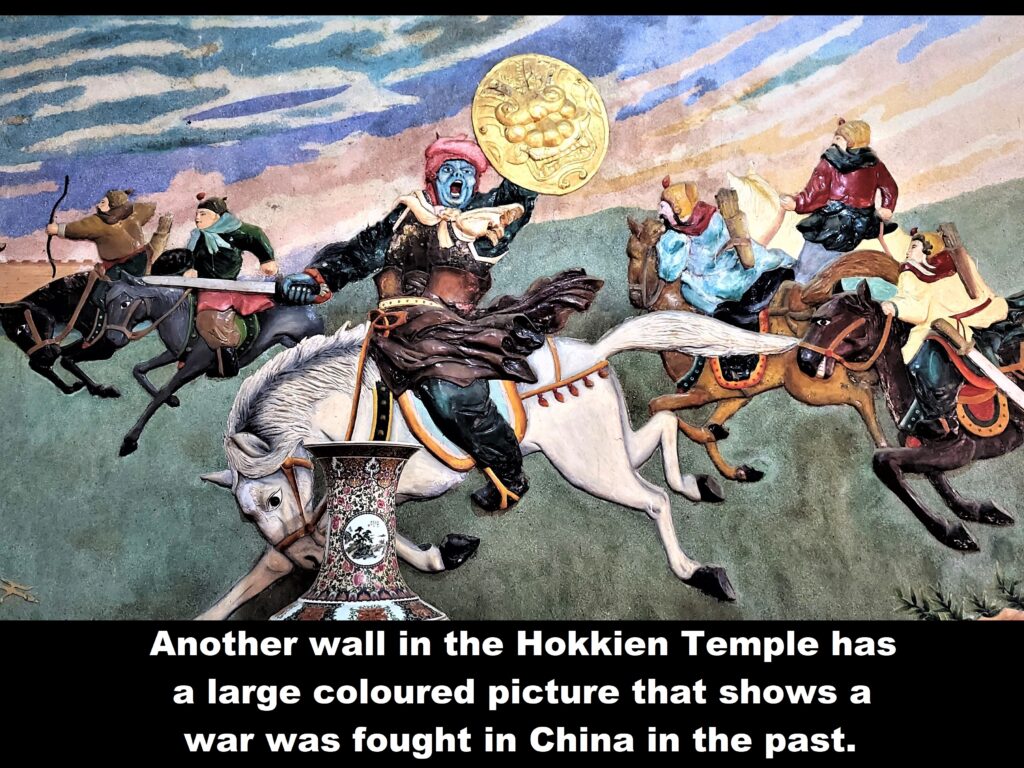
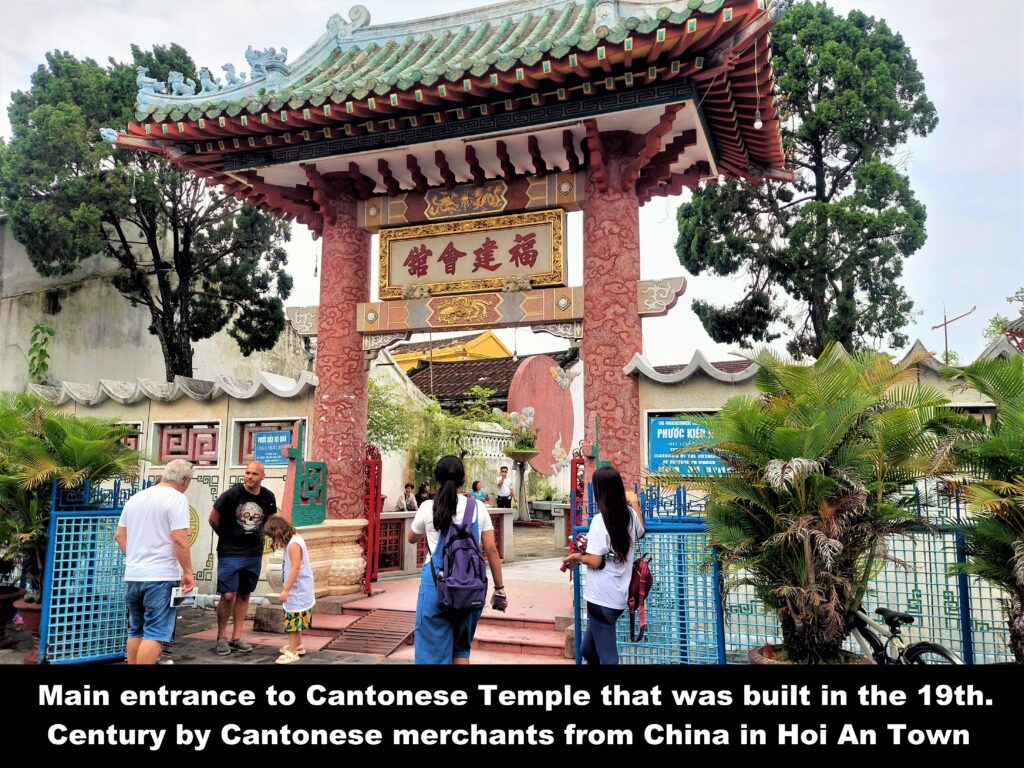
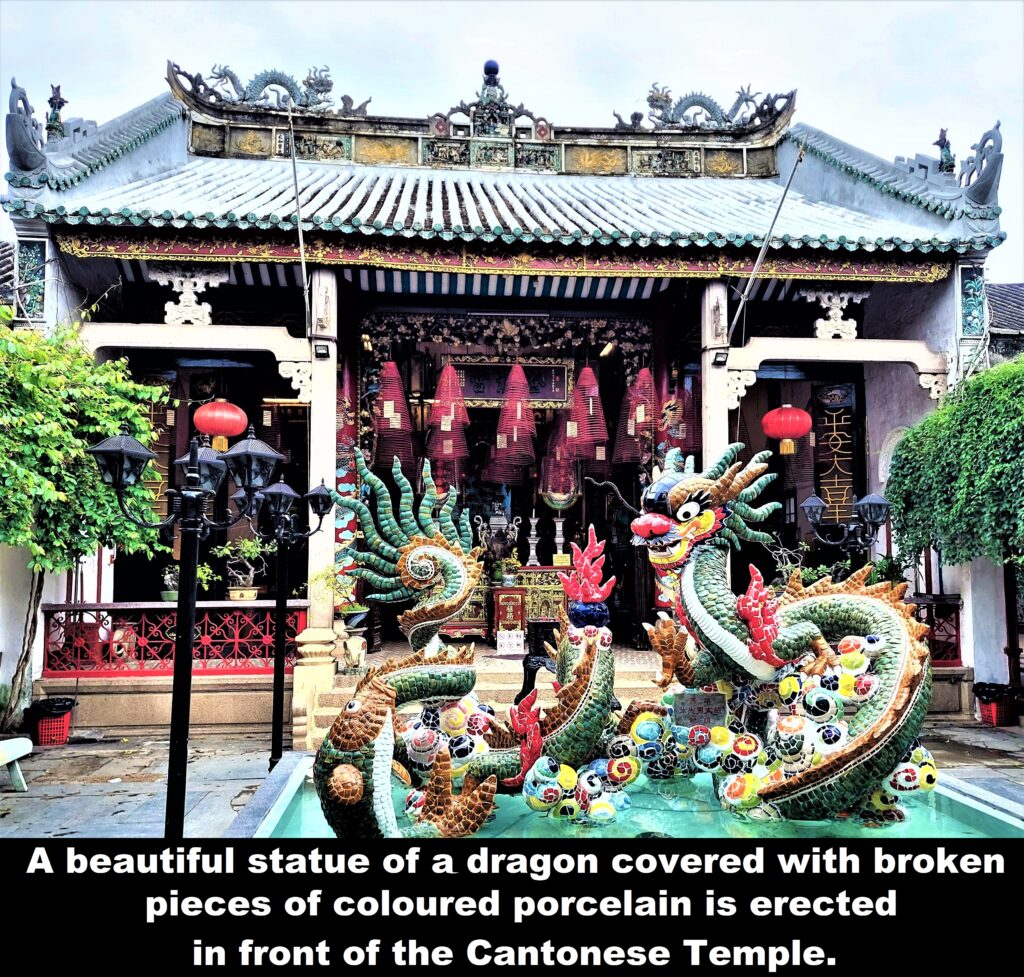
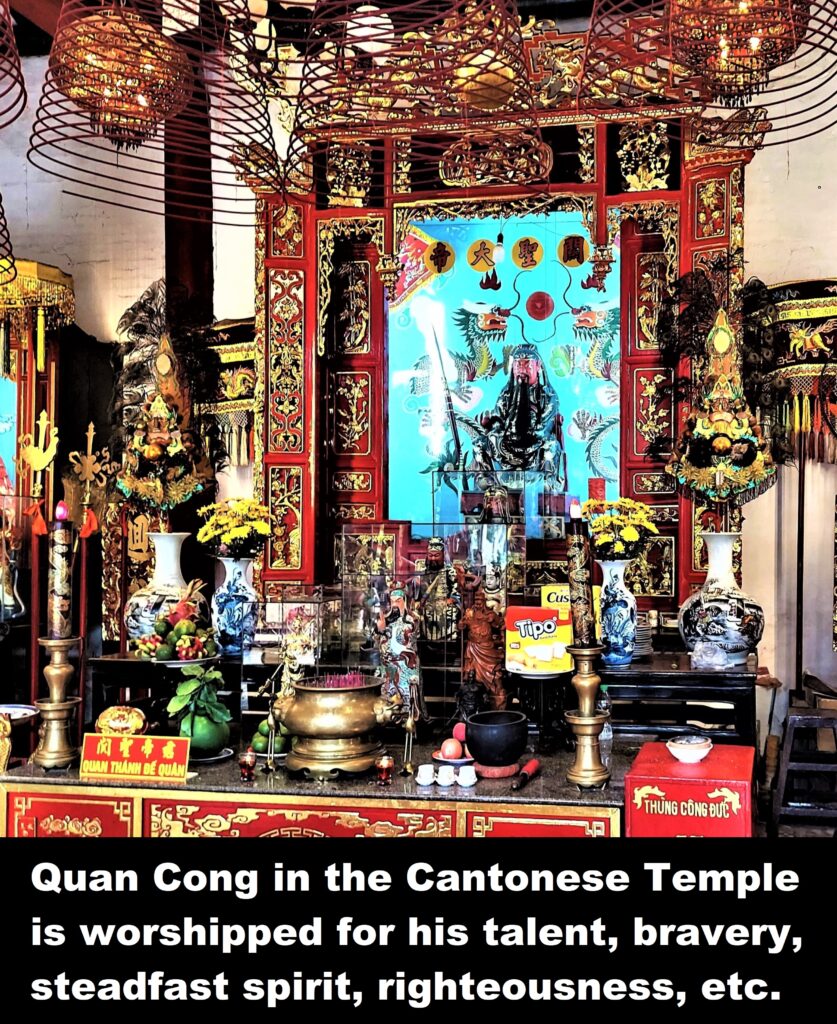
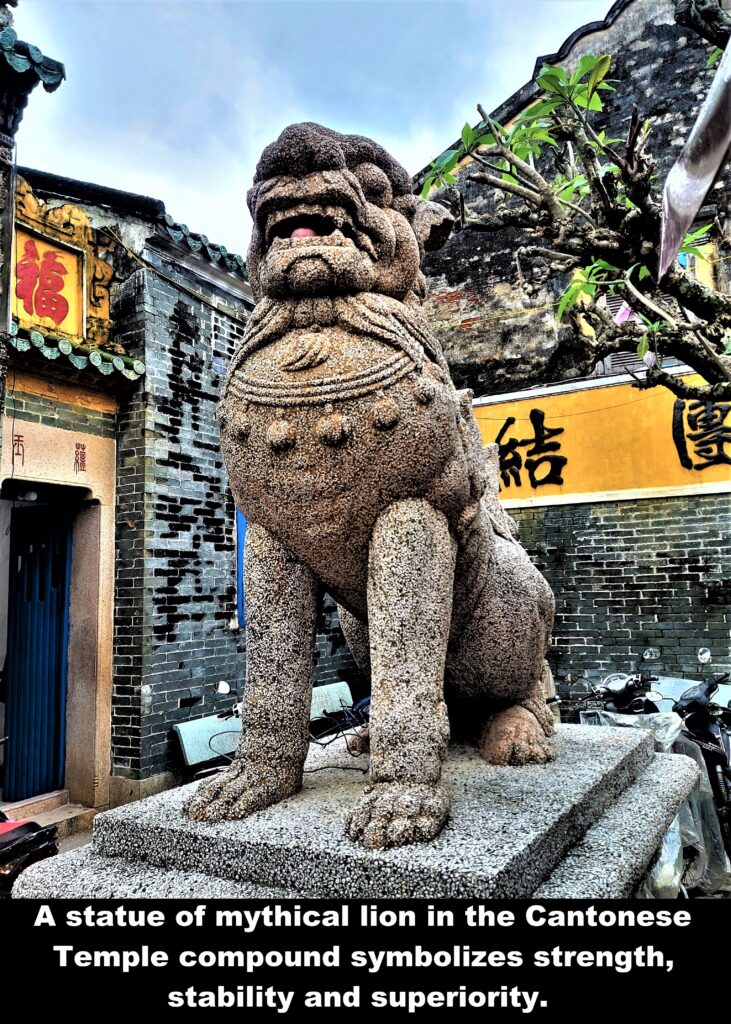
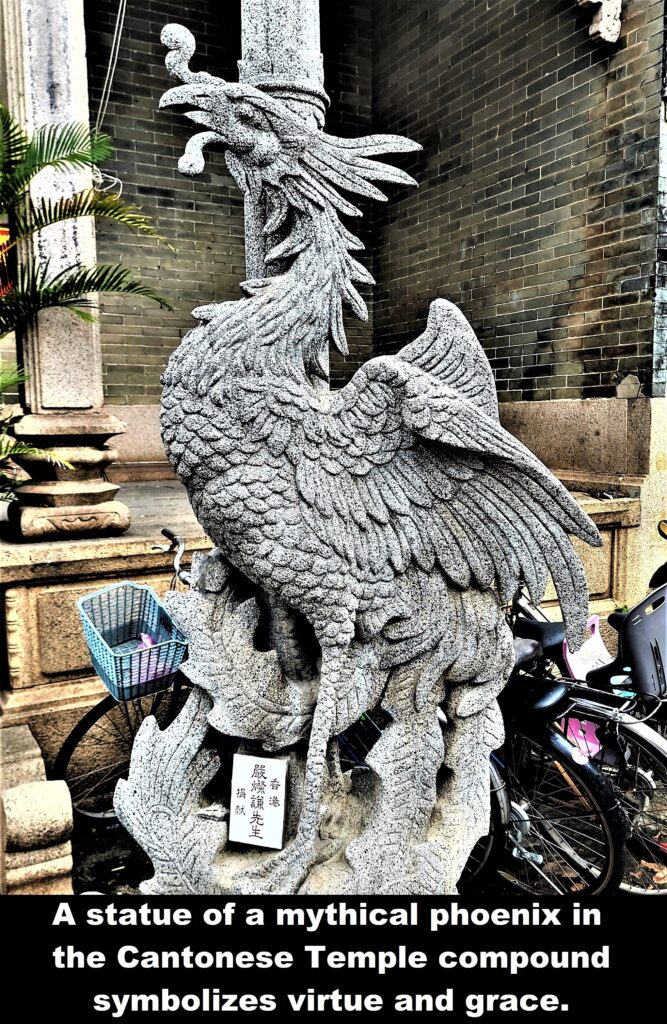
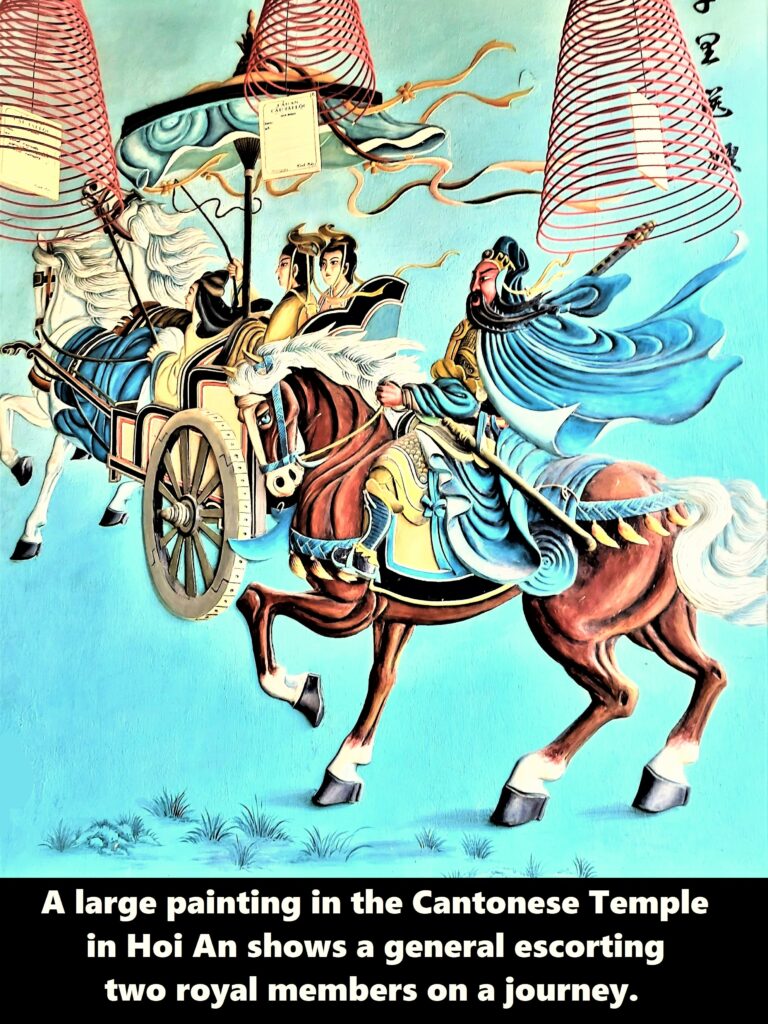
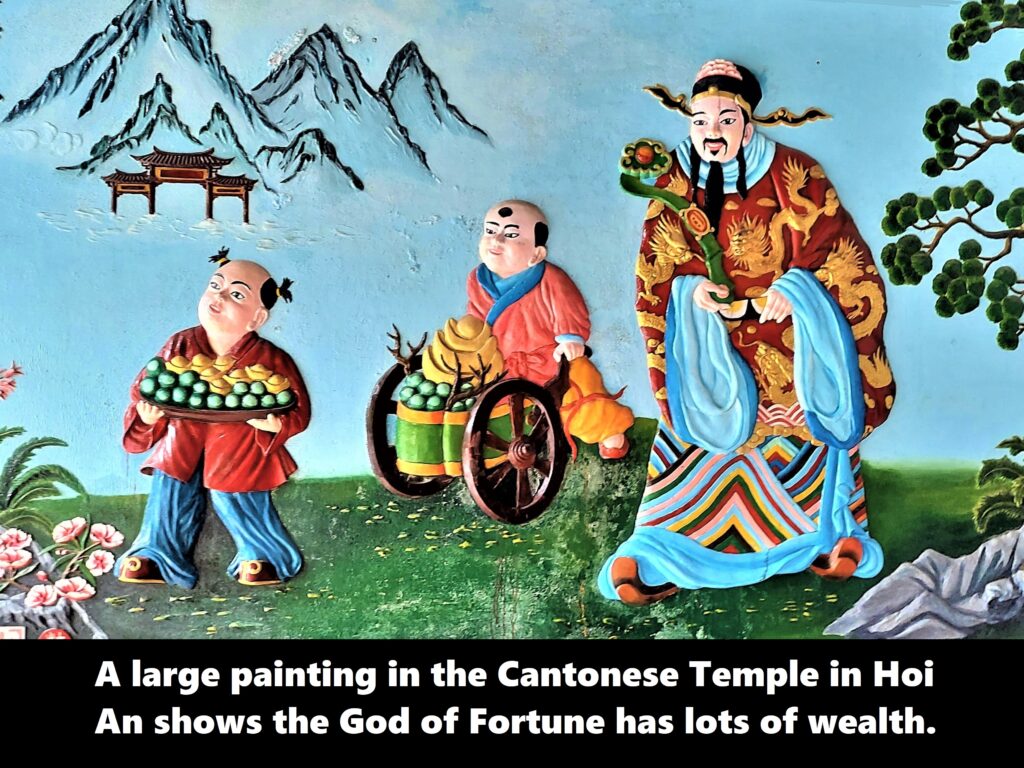
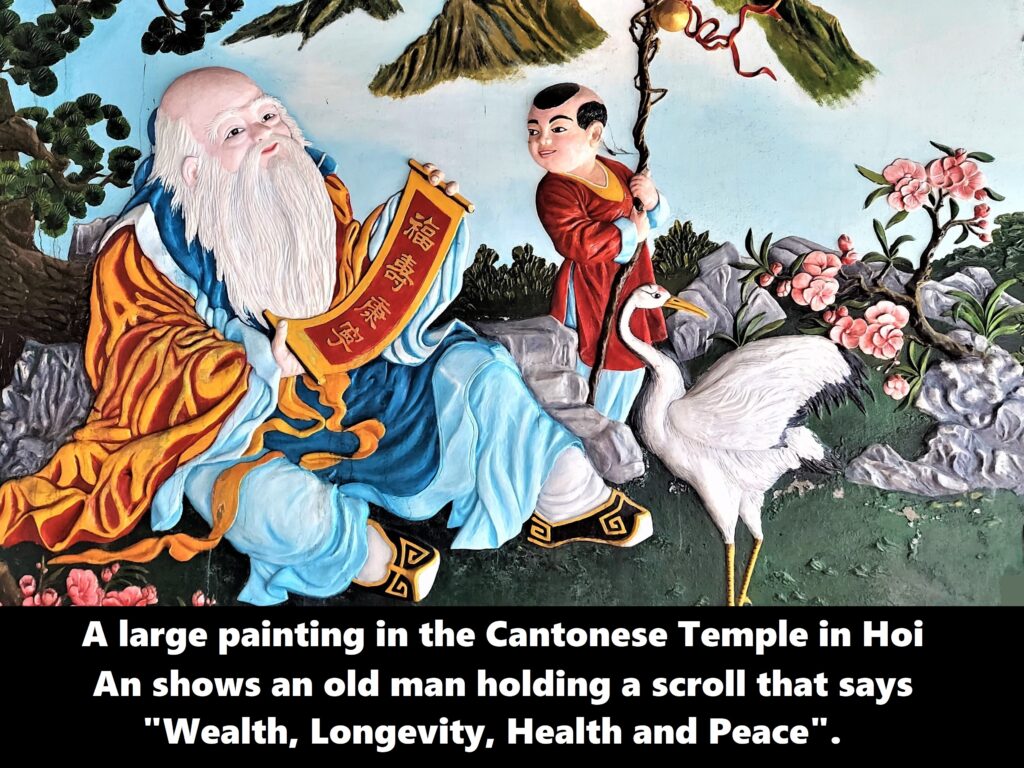
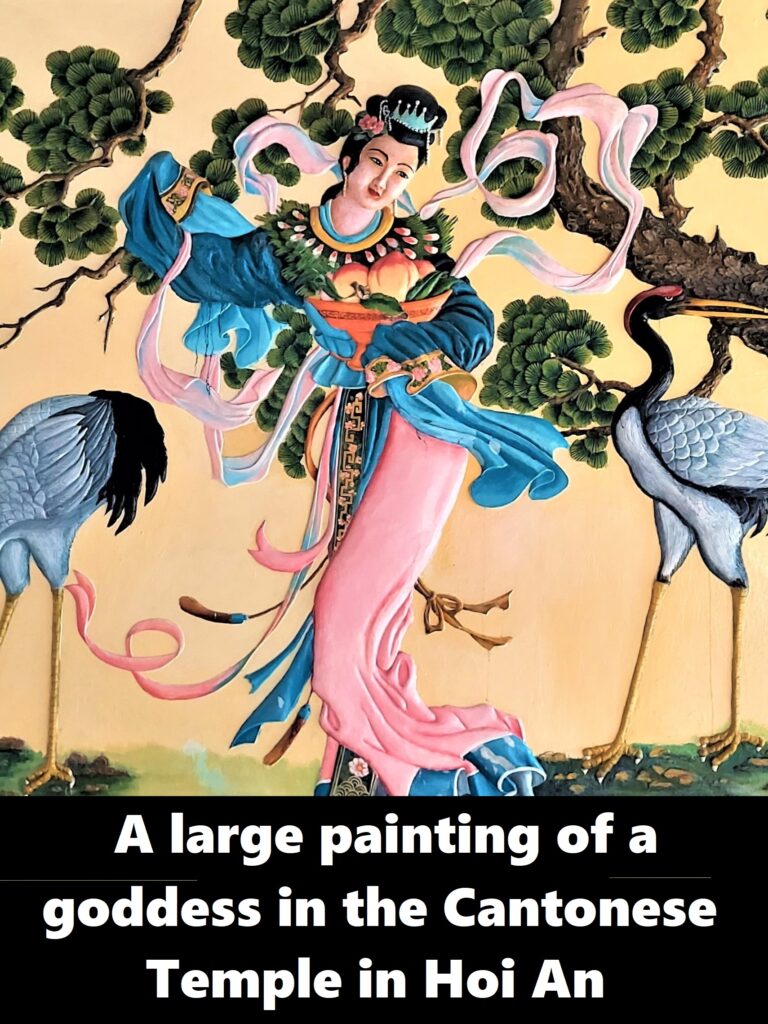
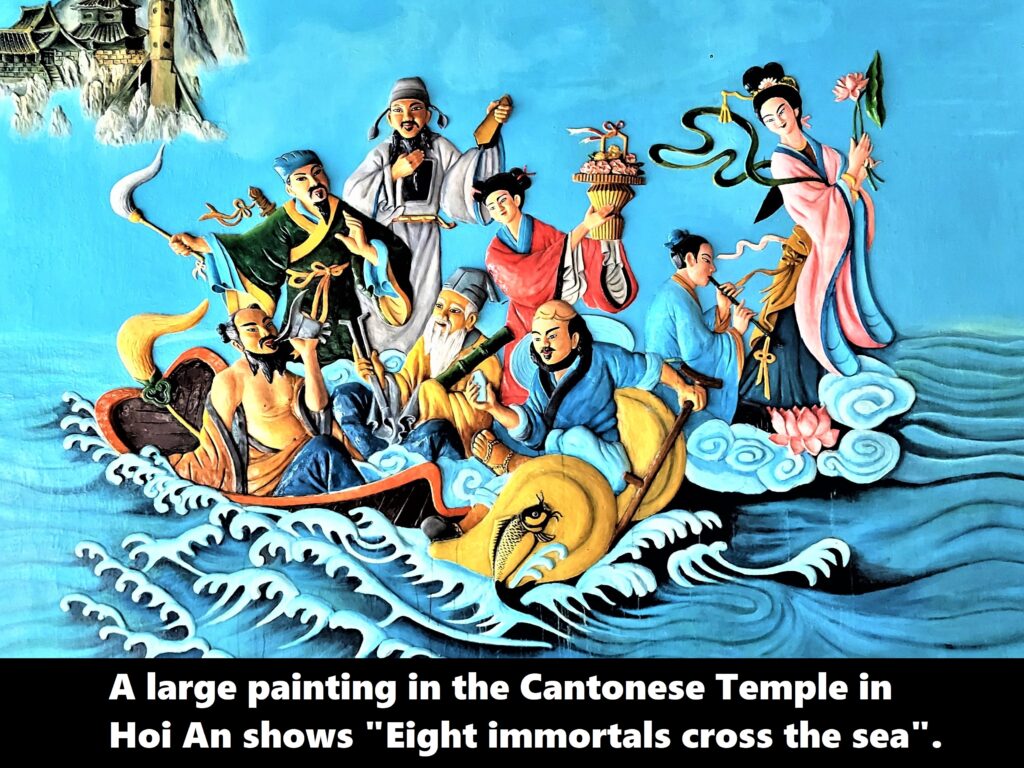
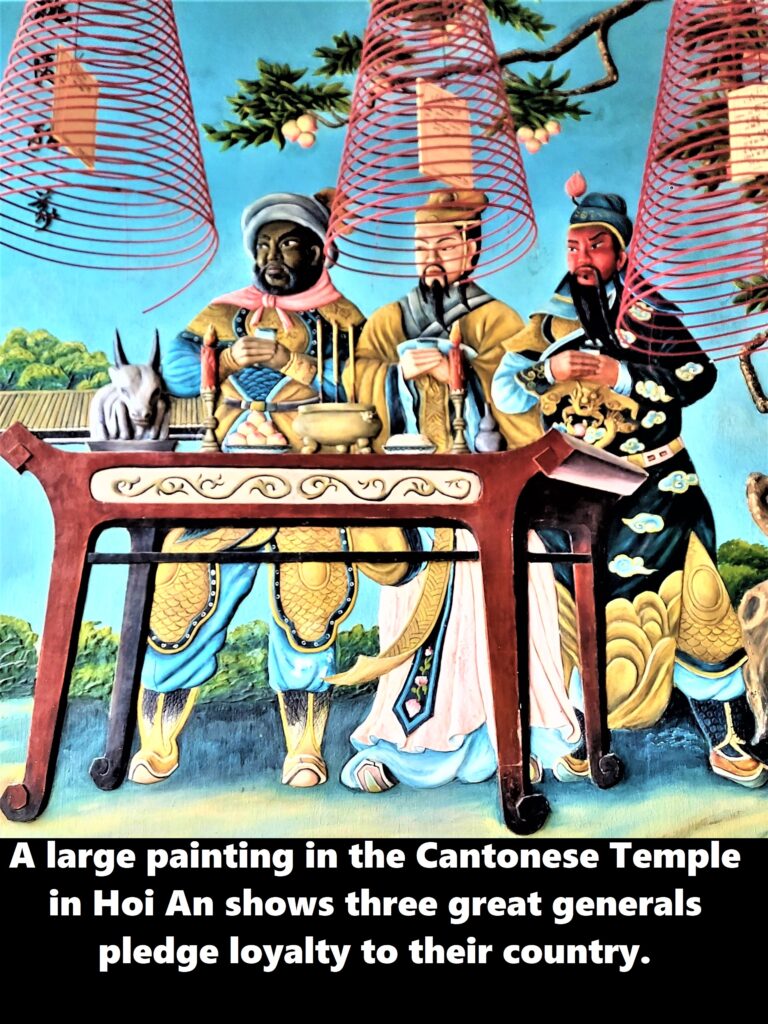
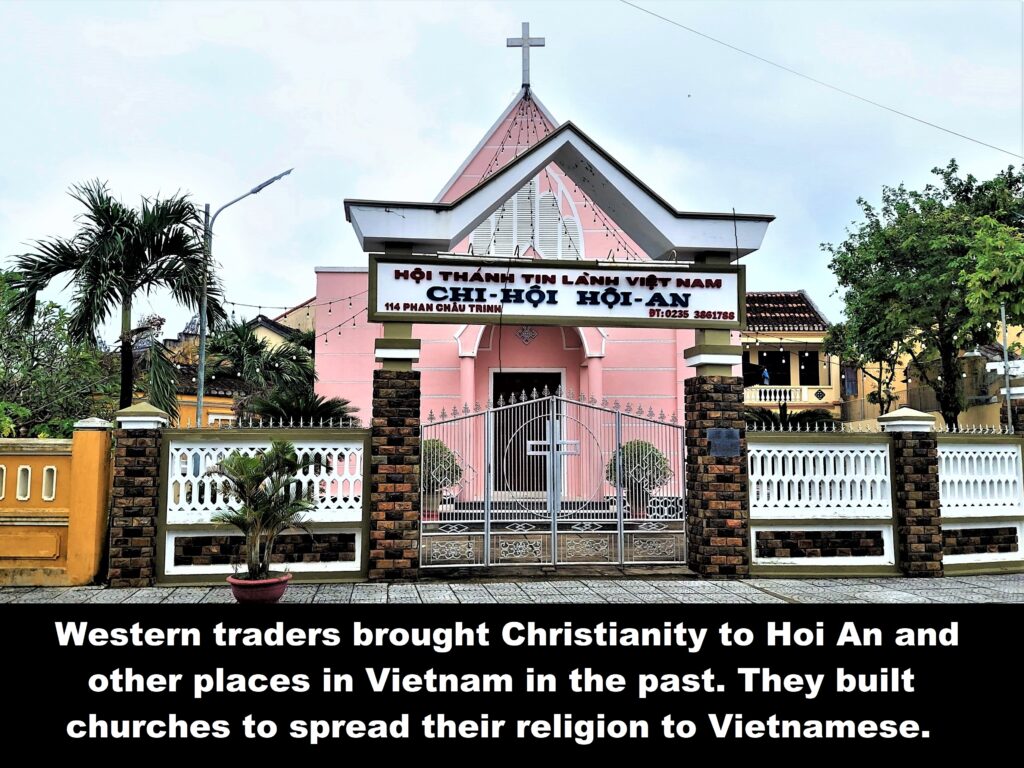
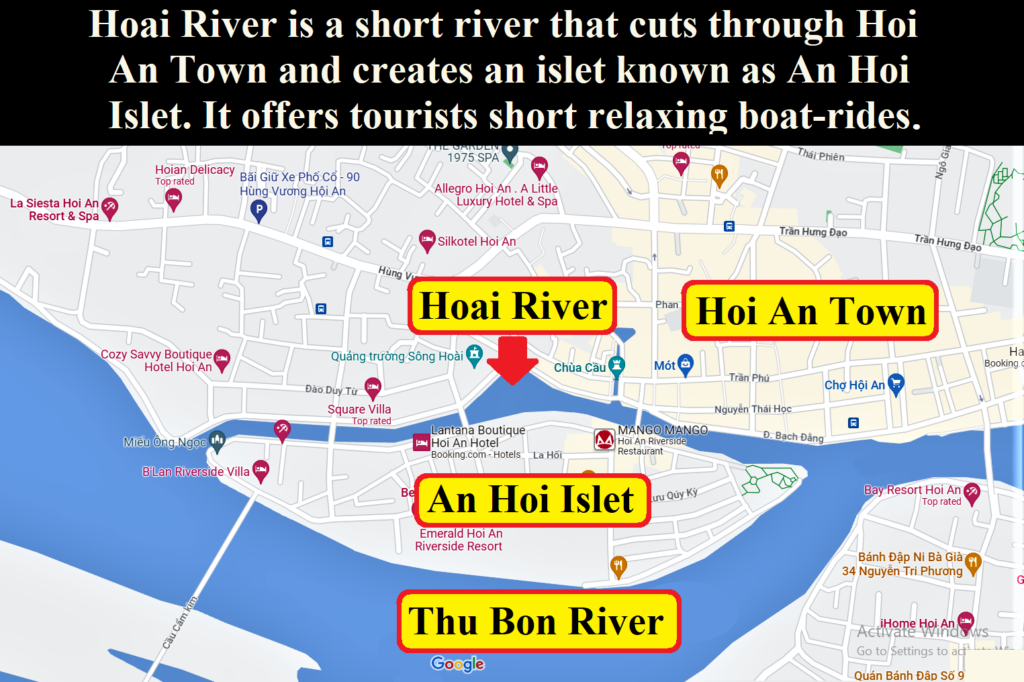
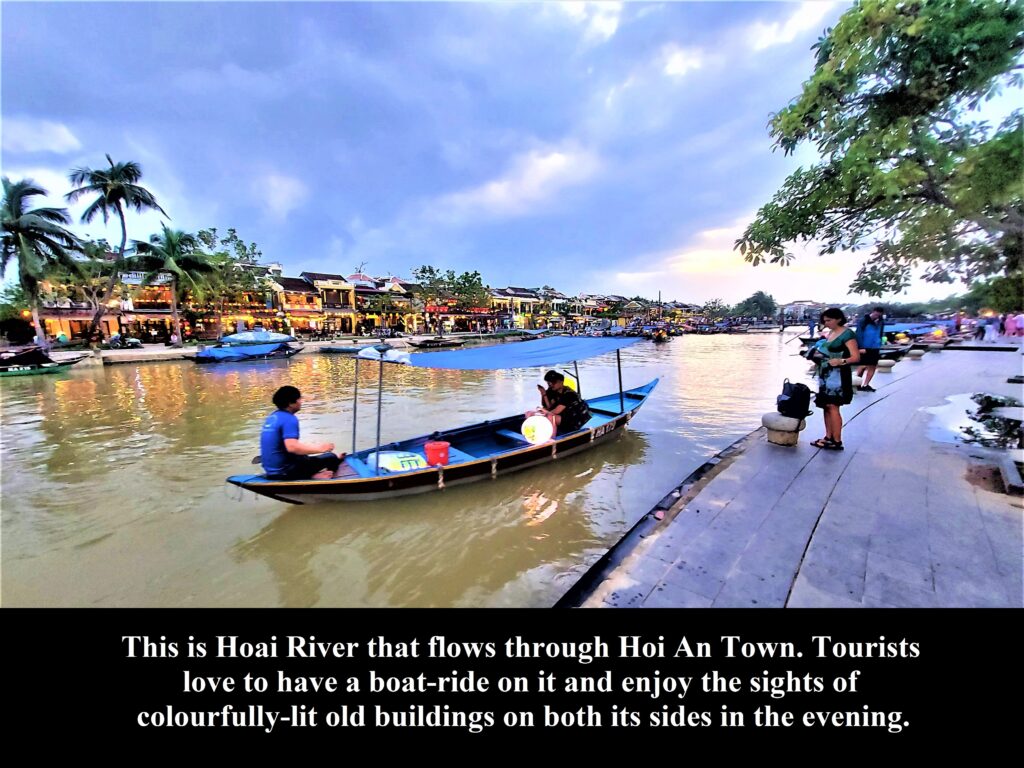
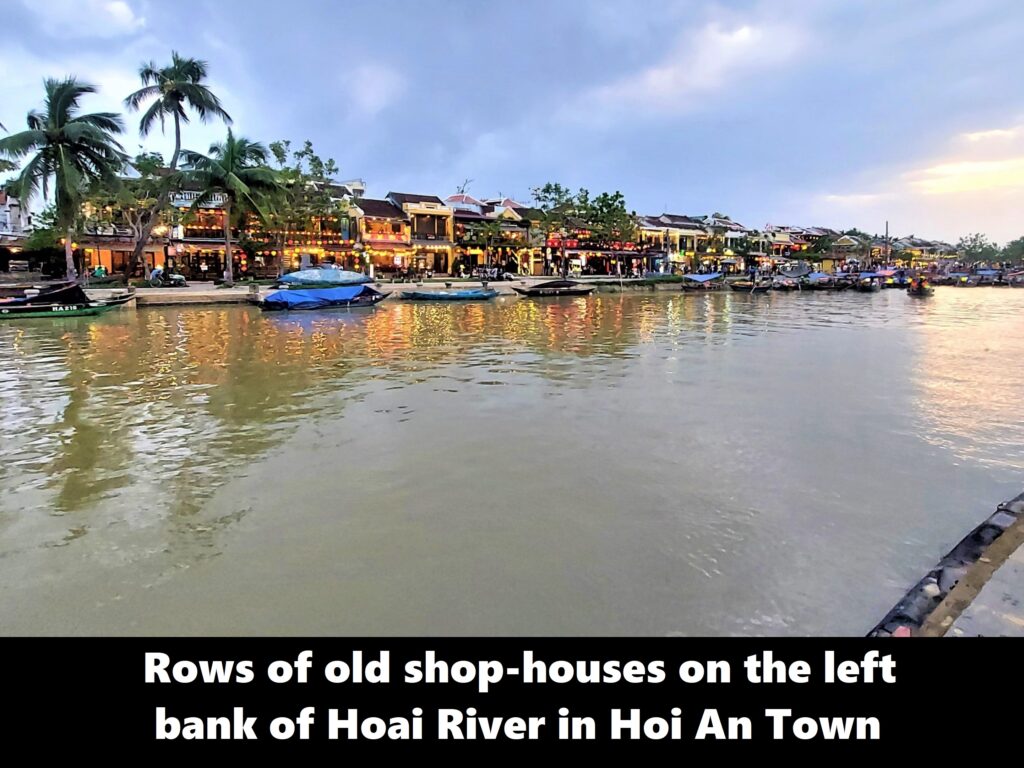
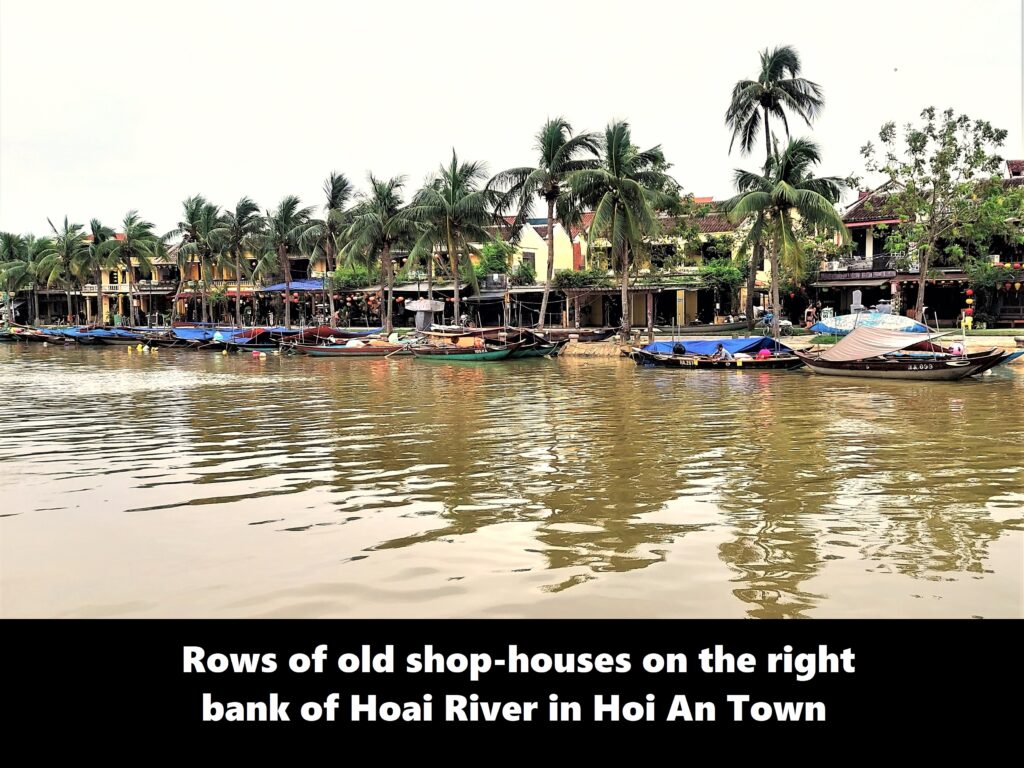
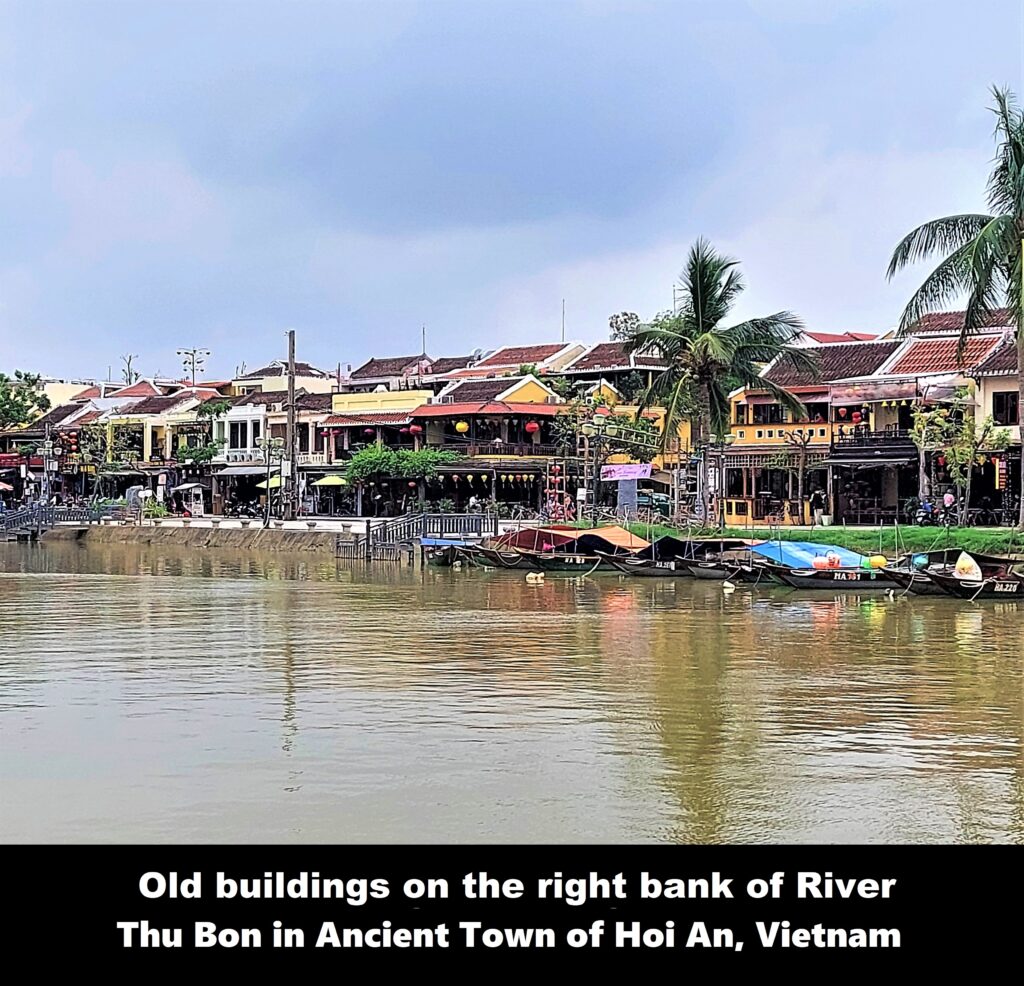
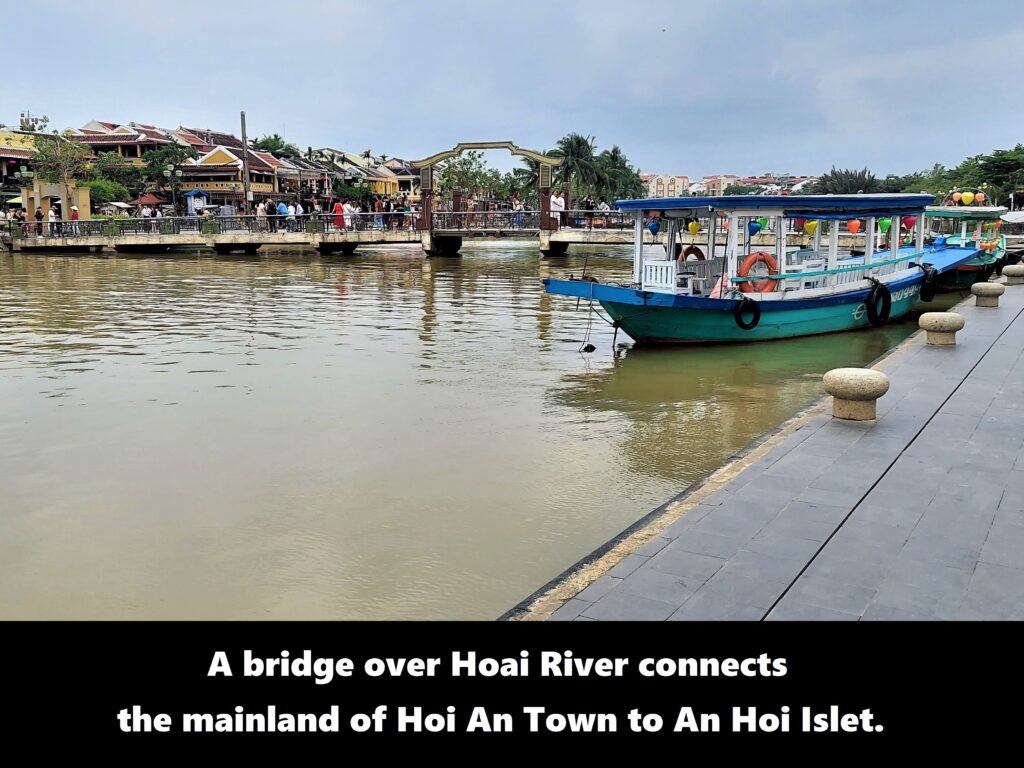
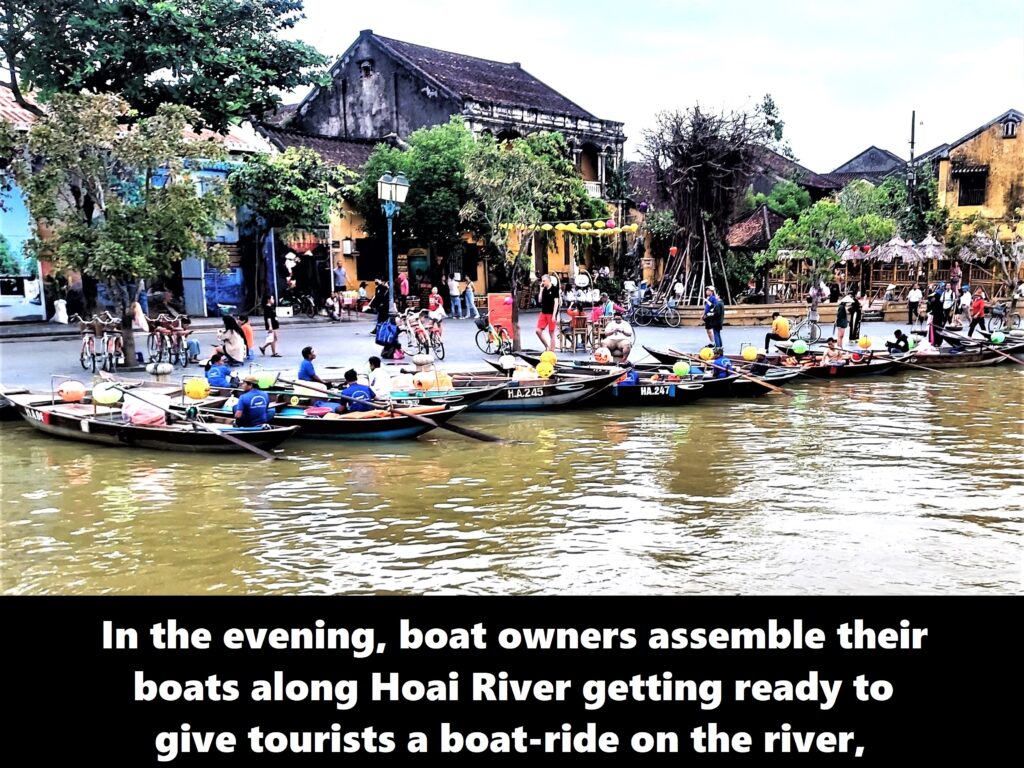
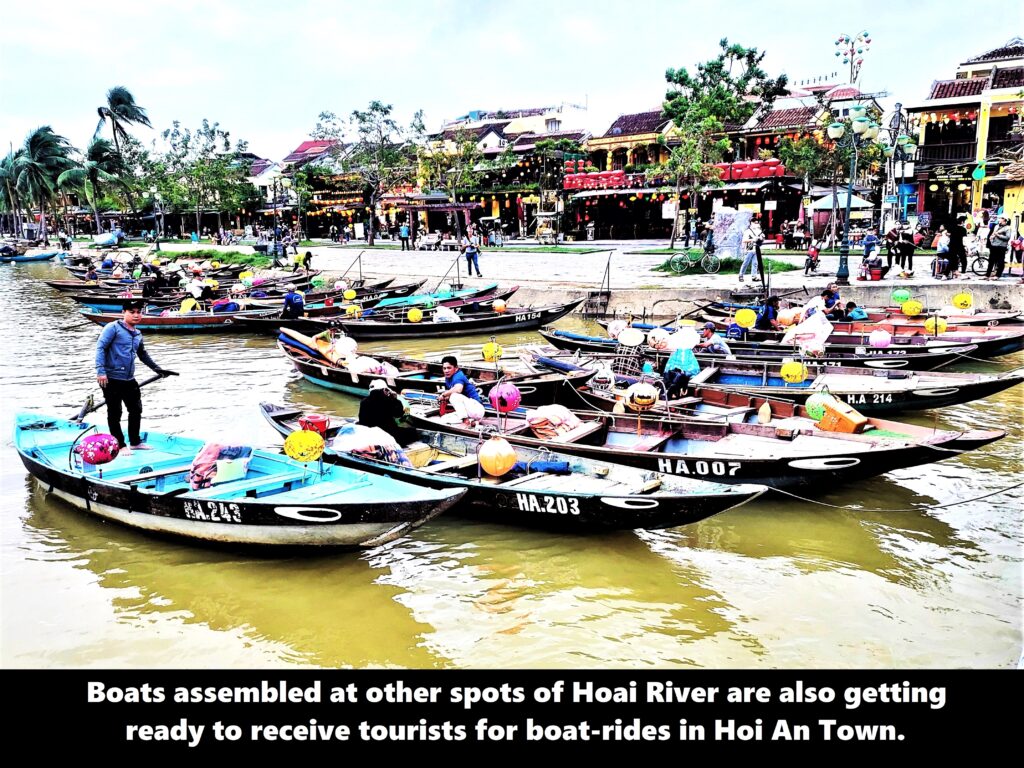
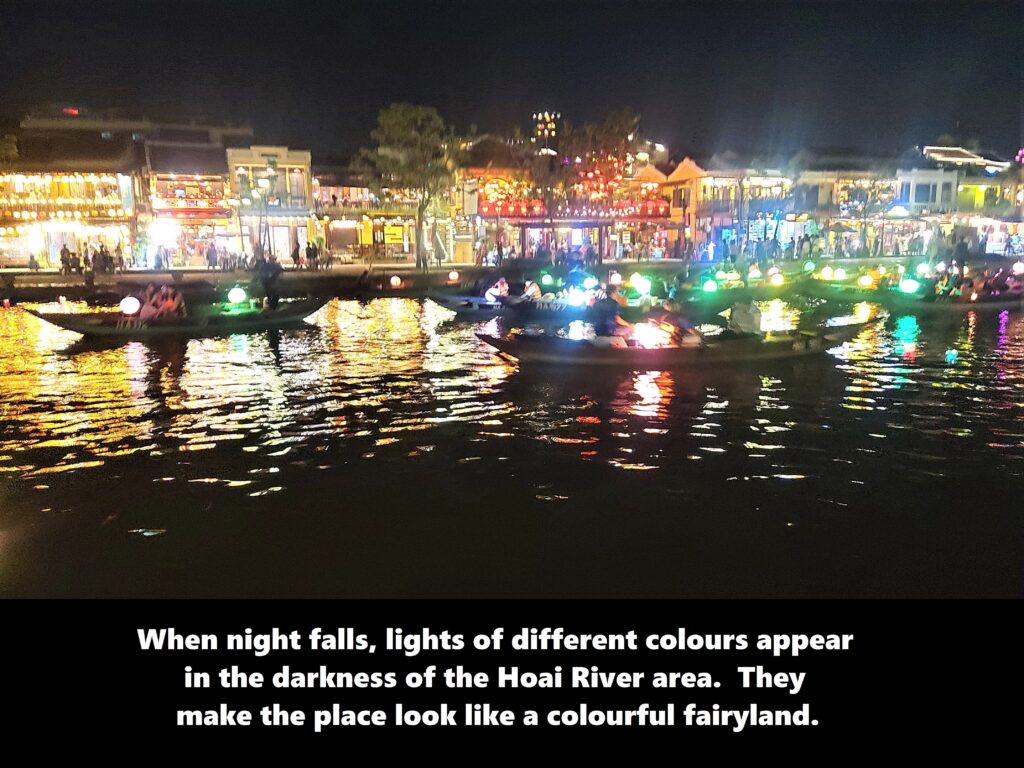
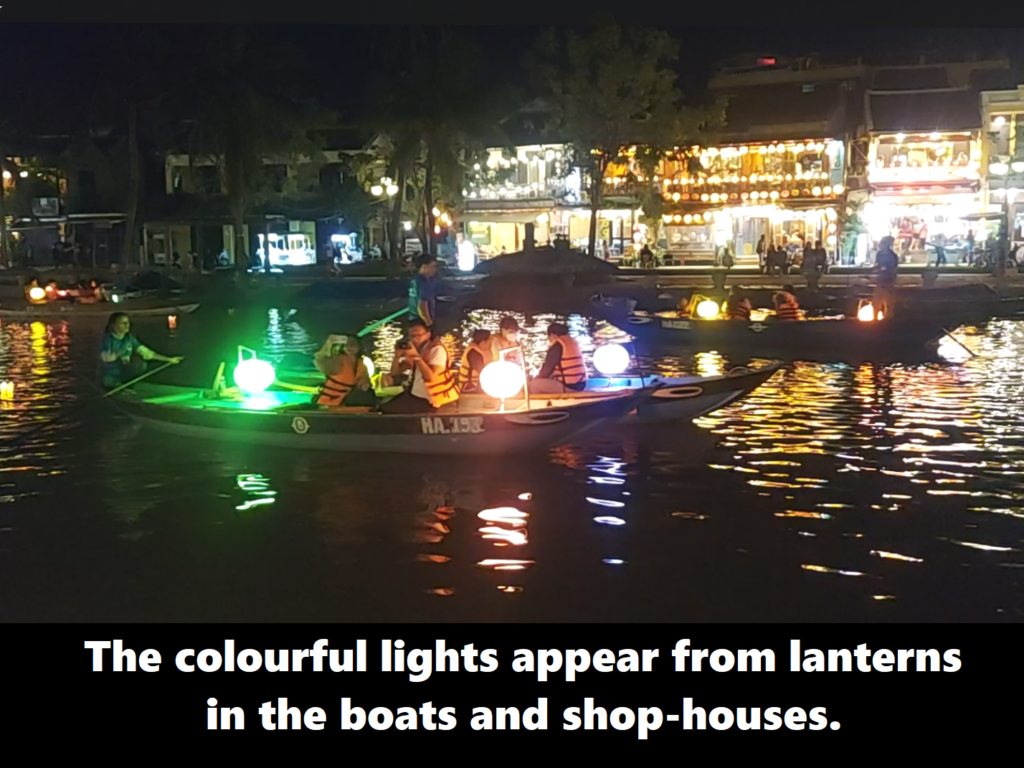
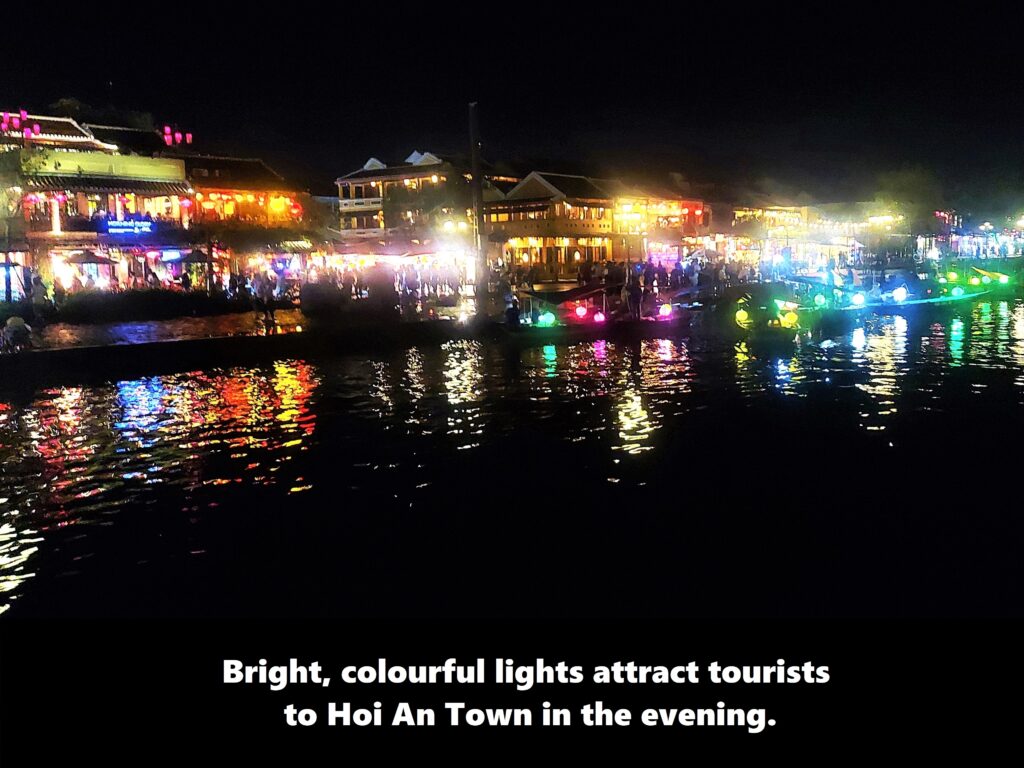
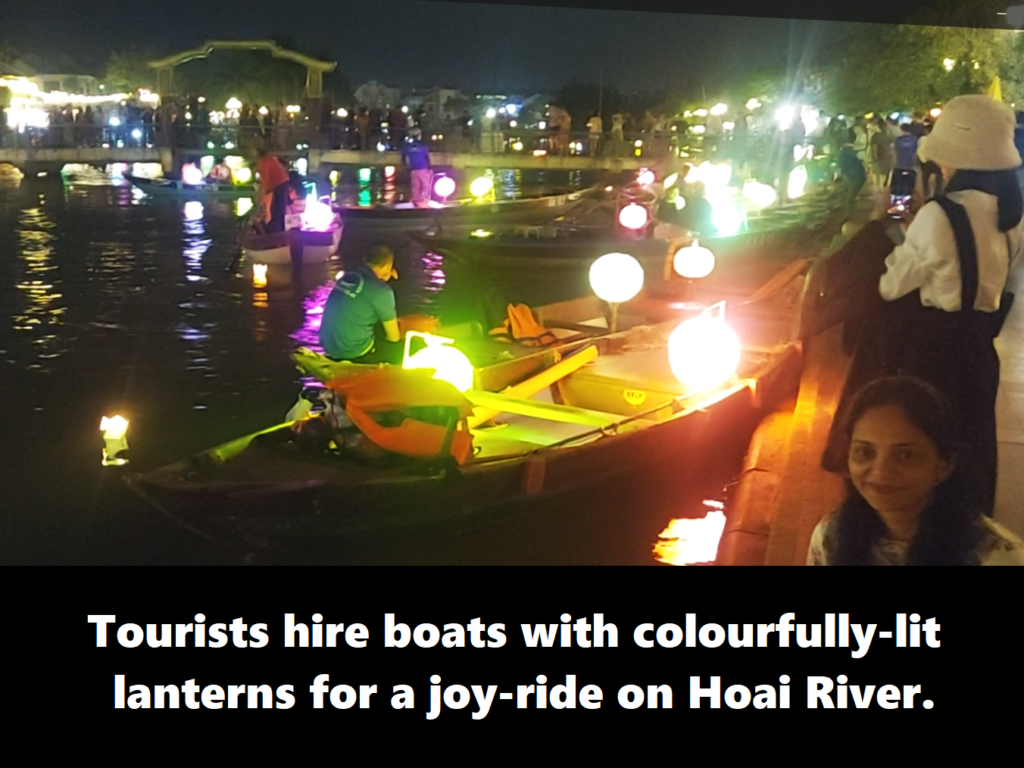
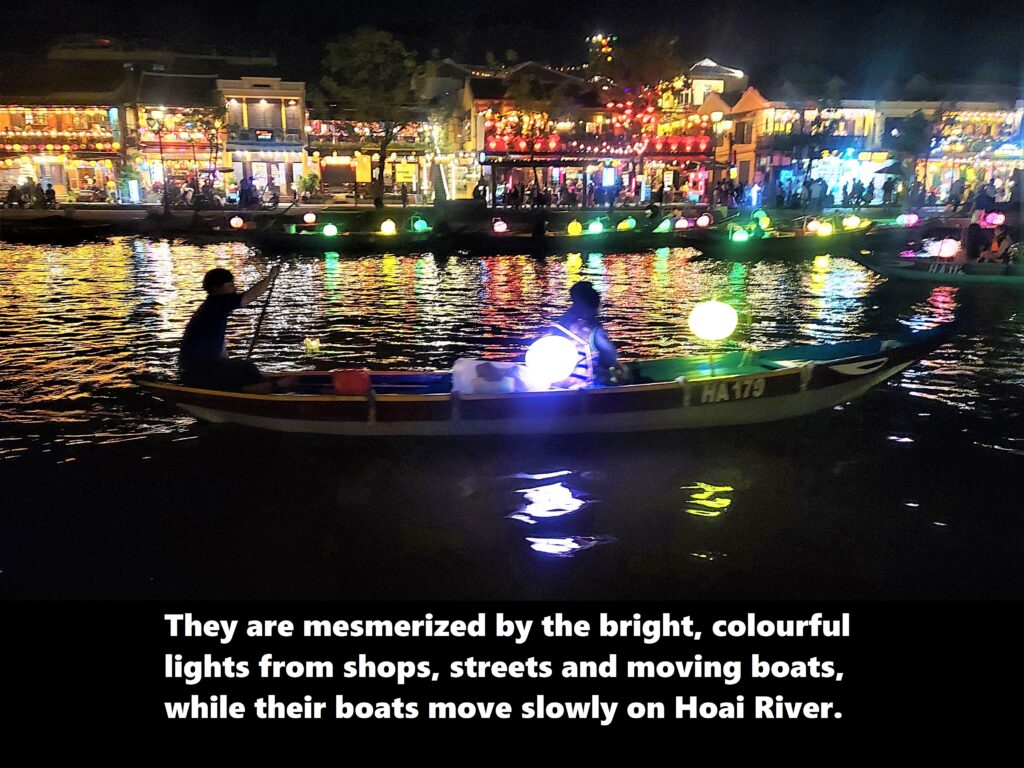
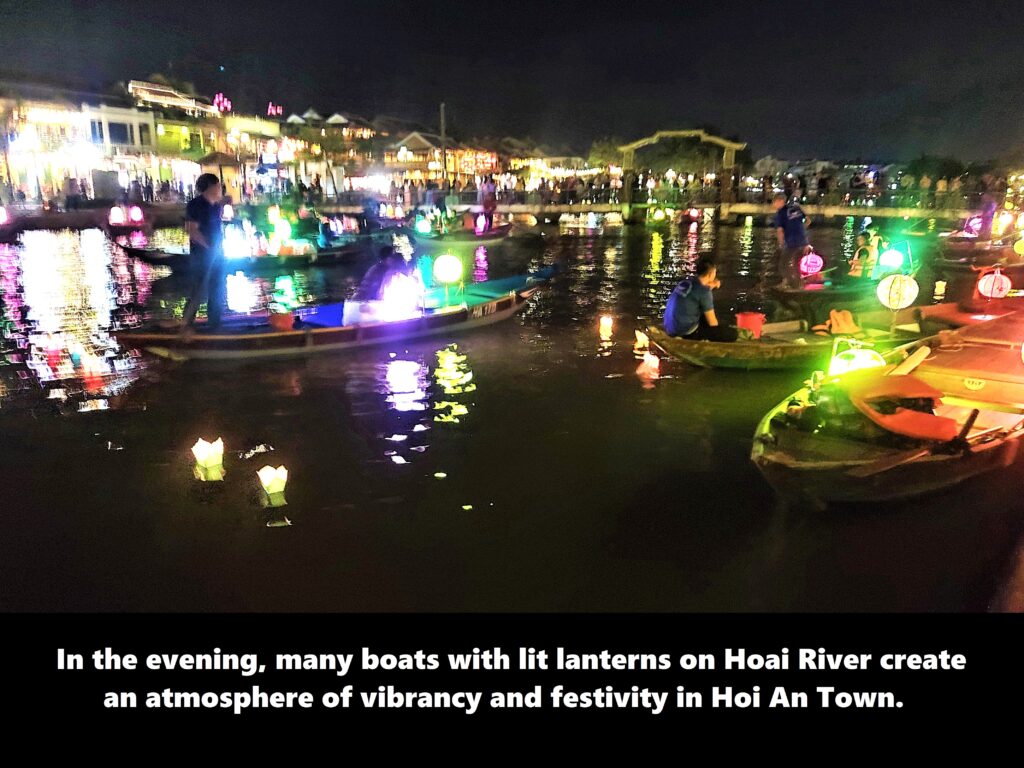
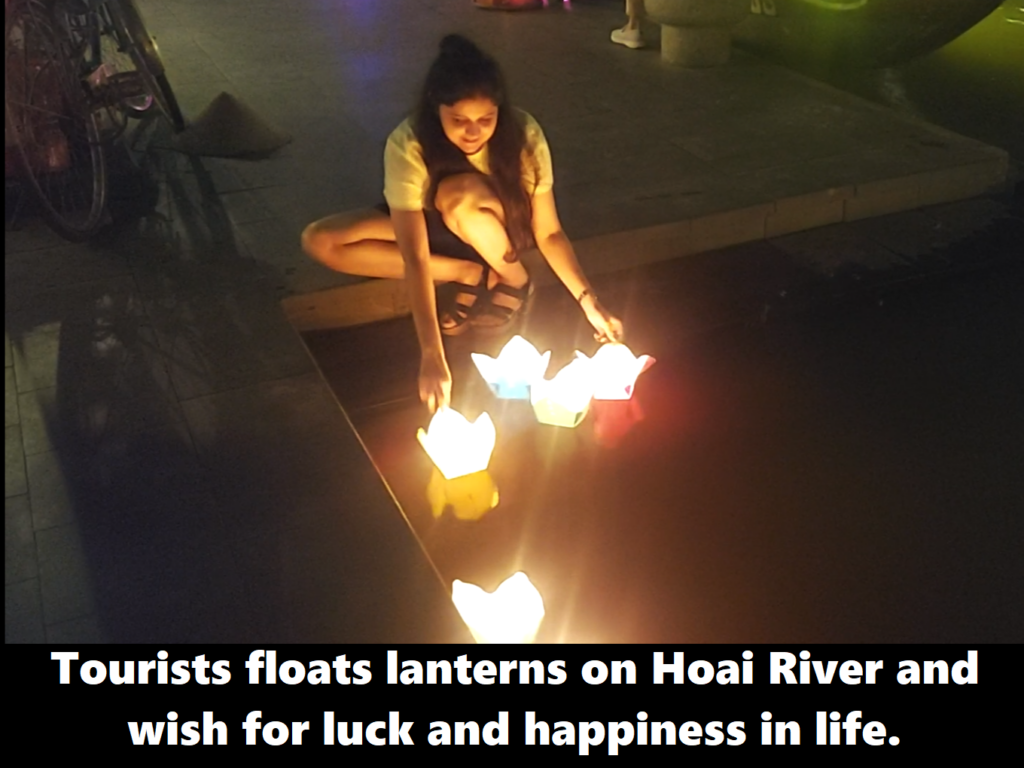
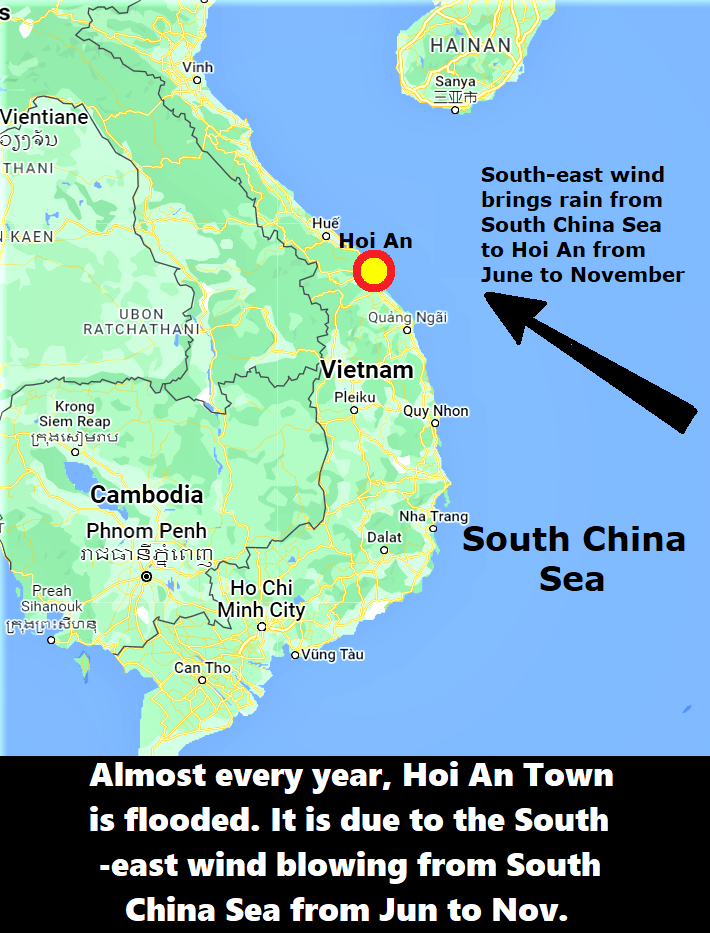
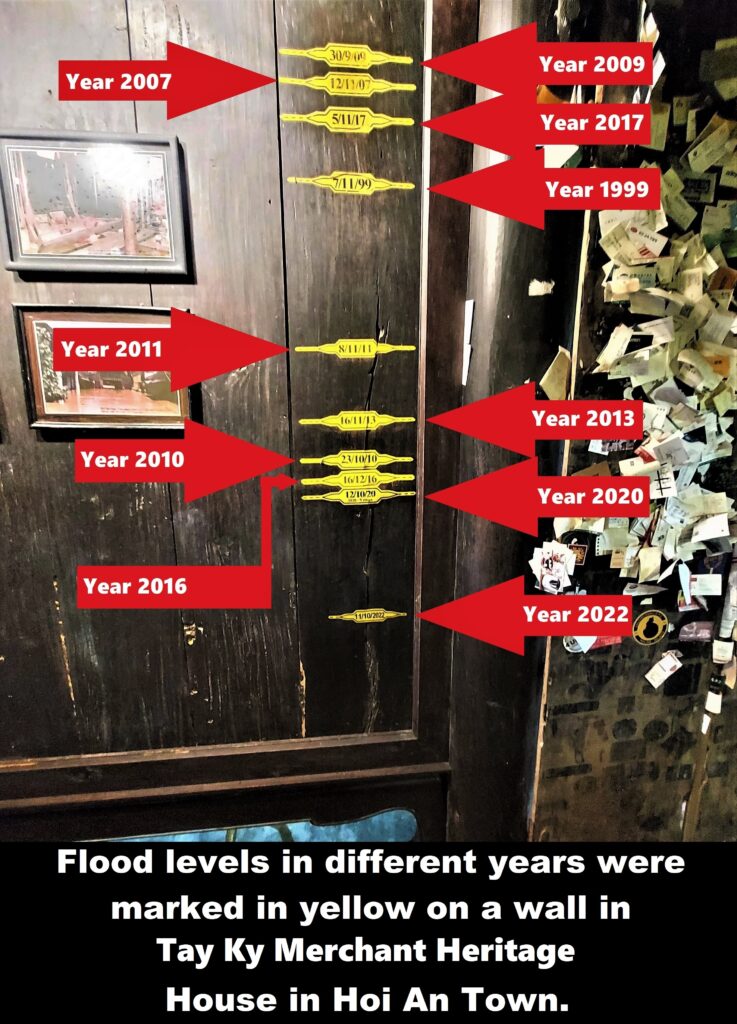
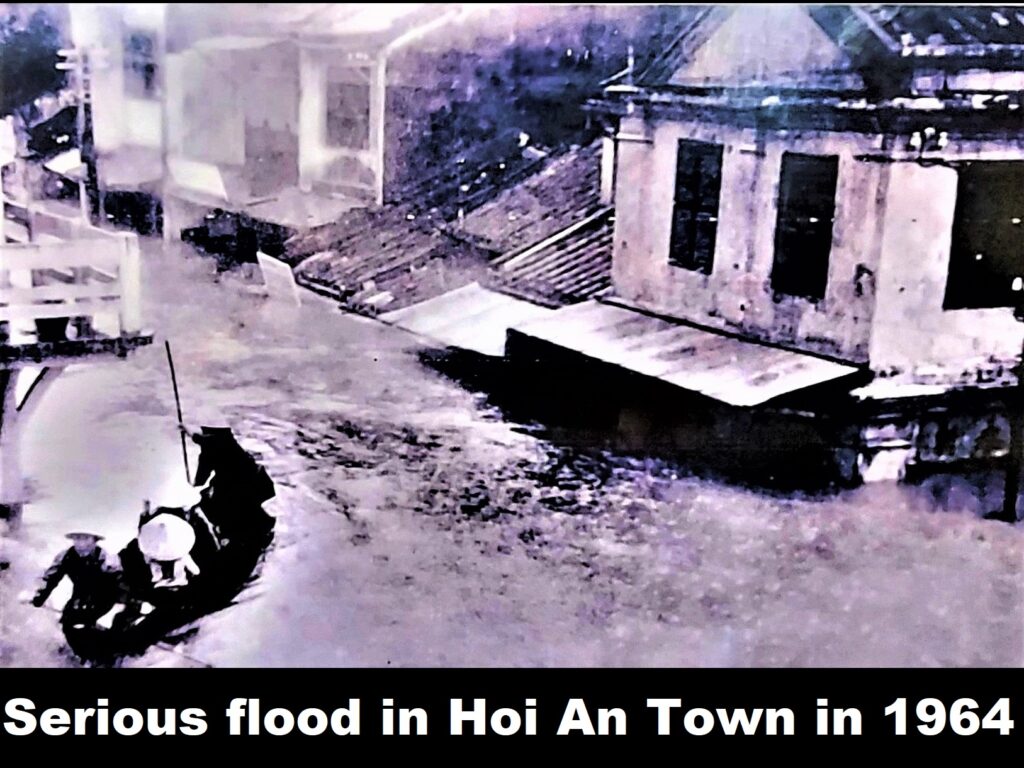
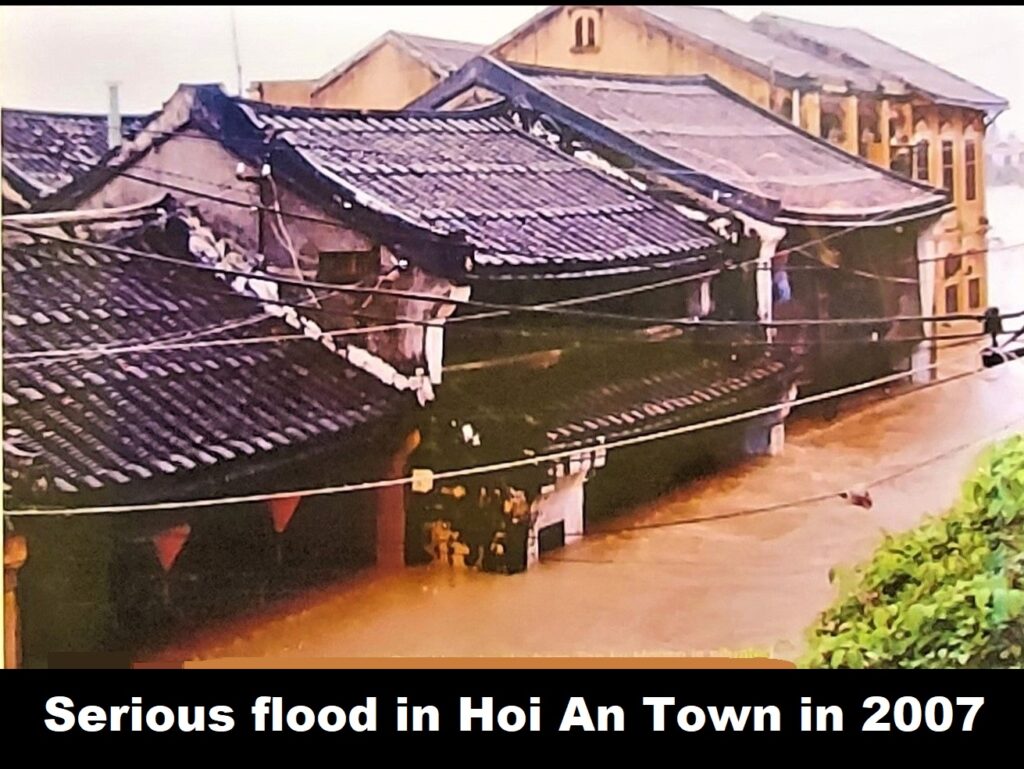
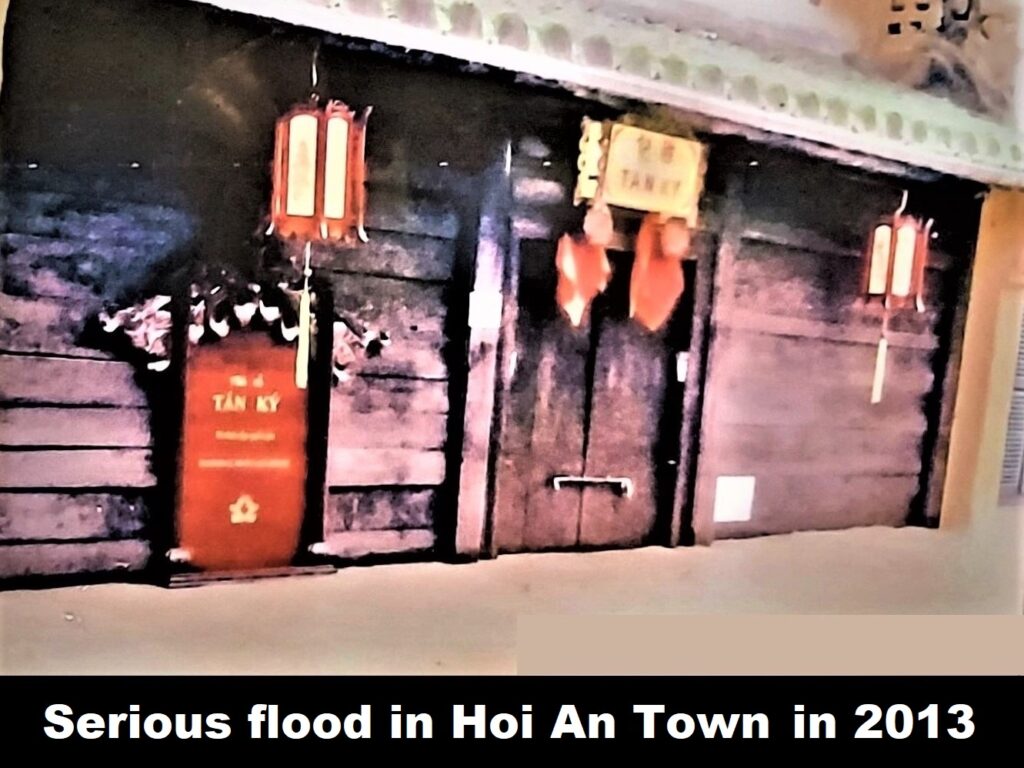
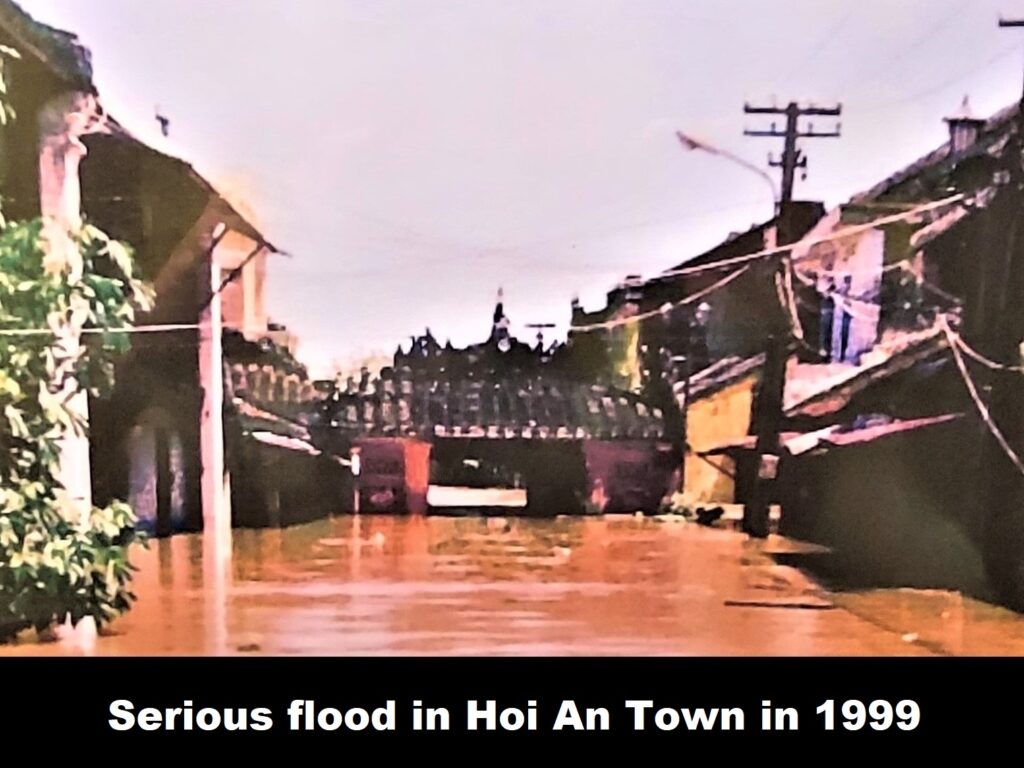
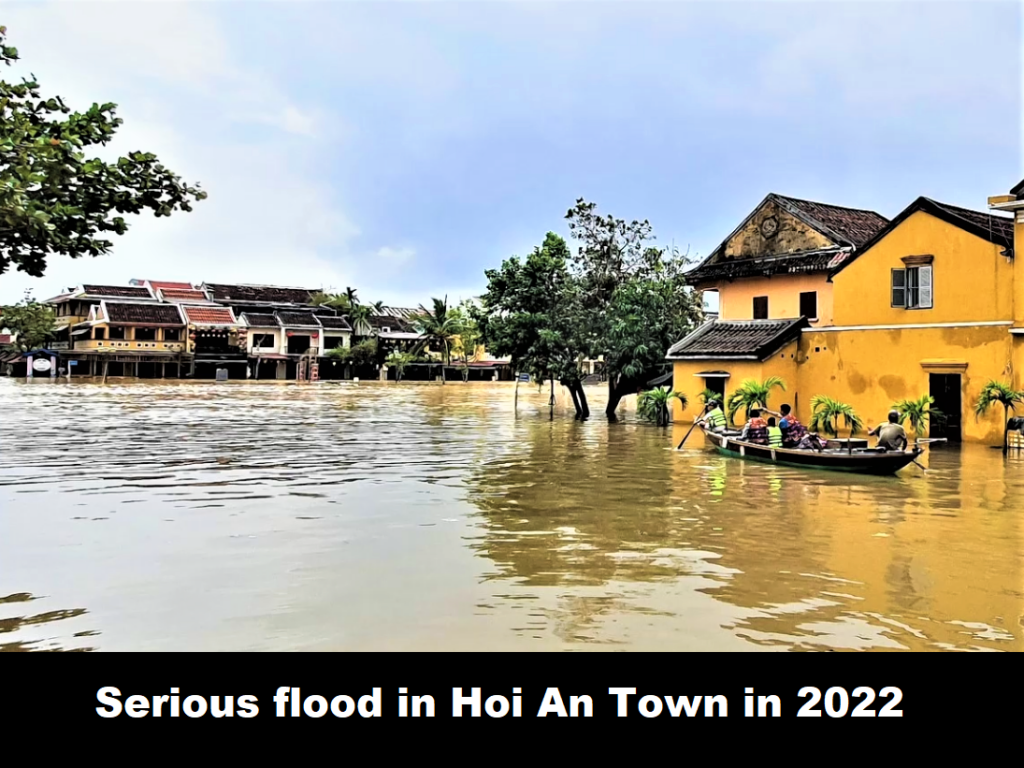
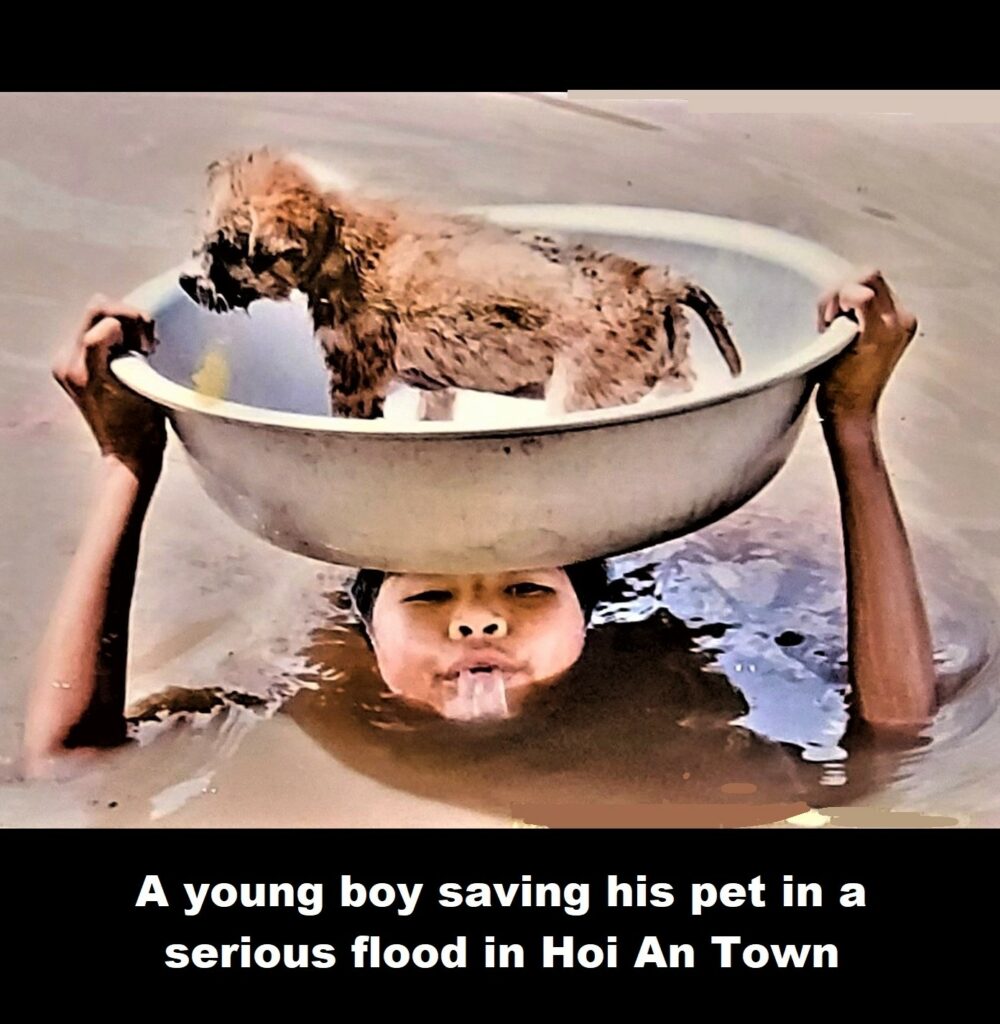
Thank you for your interest in writer’s trip in Hoi An Town on 29 Oct 2022.
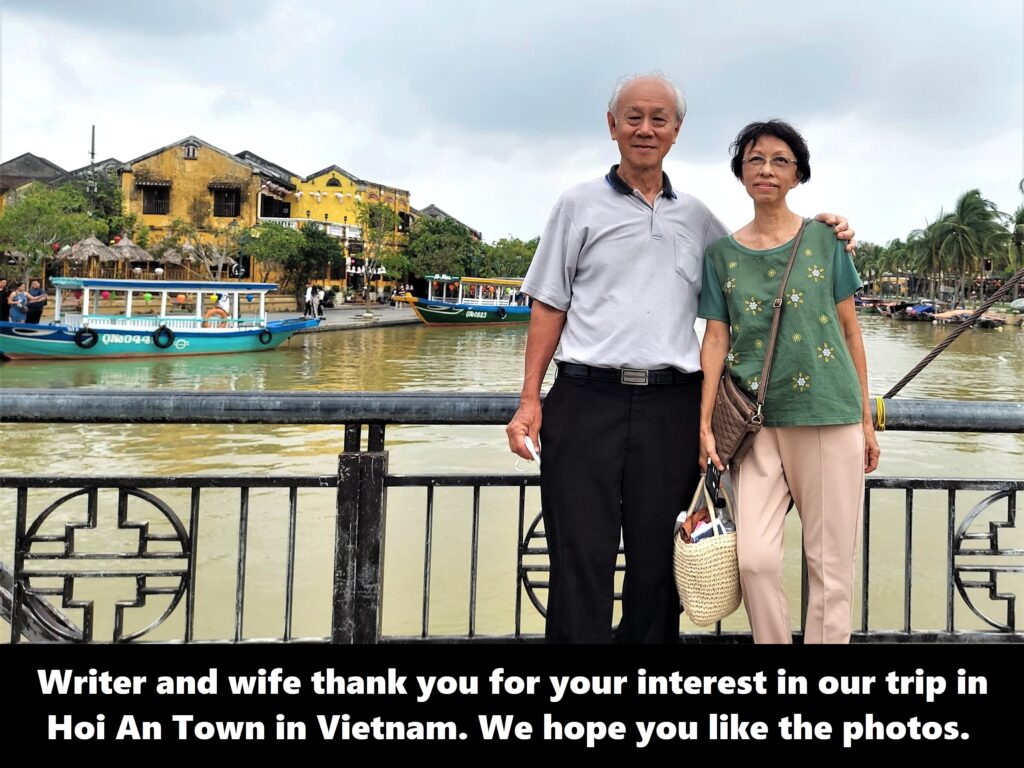
Golden Bridge of Vietnam
Golden Bridge is the latest tourists’ attraction in Vietnam since 2018.
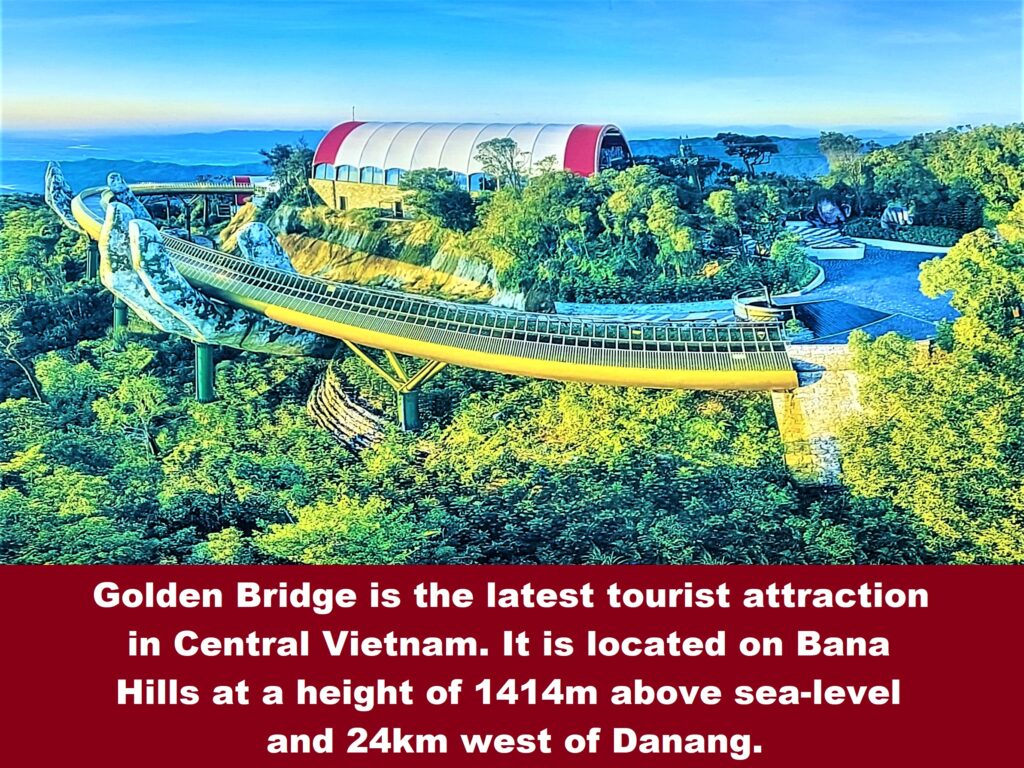
The bridge is held up by two hands of a “giant”.
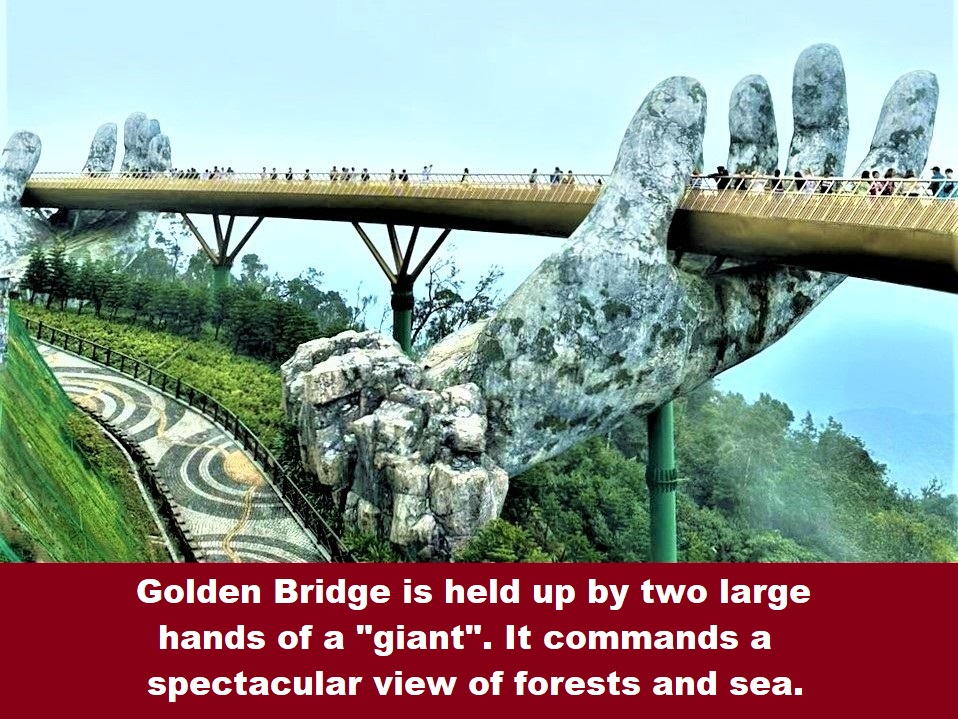
The map below shows the location of Golden Bridge on Bana Hills that is 24 km west of Danang in Vietnam.
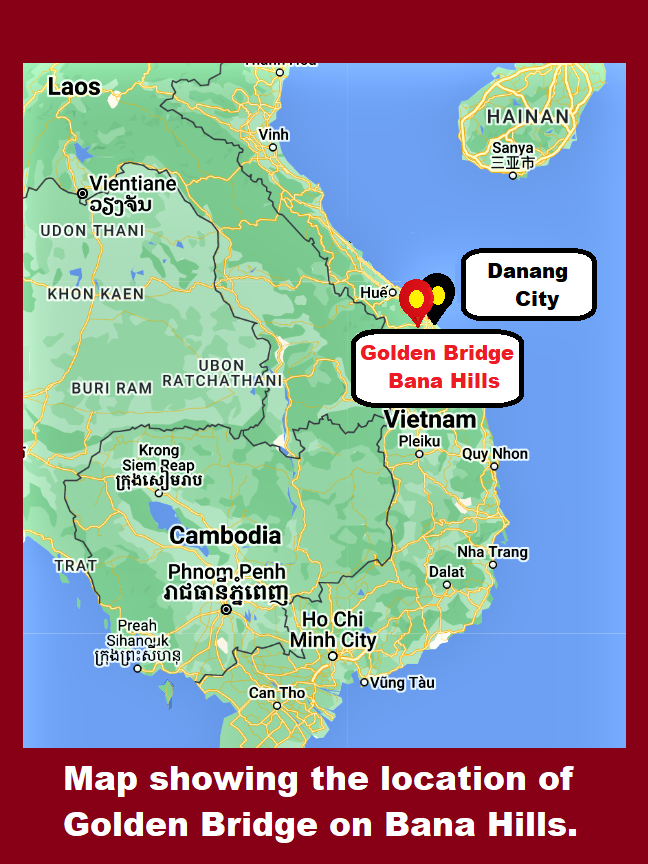
Writer and wife at the main cable-car station, Hoi An Station, at the foot of Bana Hills, Vietnam, on 30 Oct 2022.
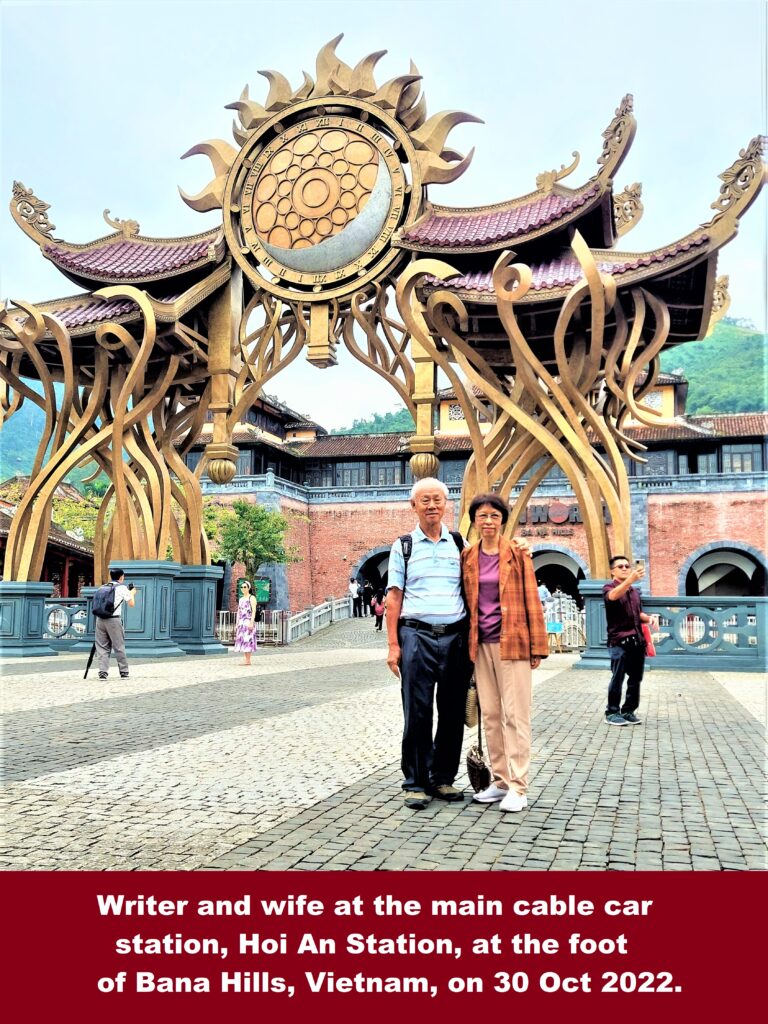
They boarded this cable-car to ascend to 1414m above sea-level to visit the famous bridge, Golden Bridge, on Bana Hills.
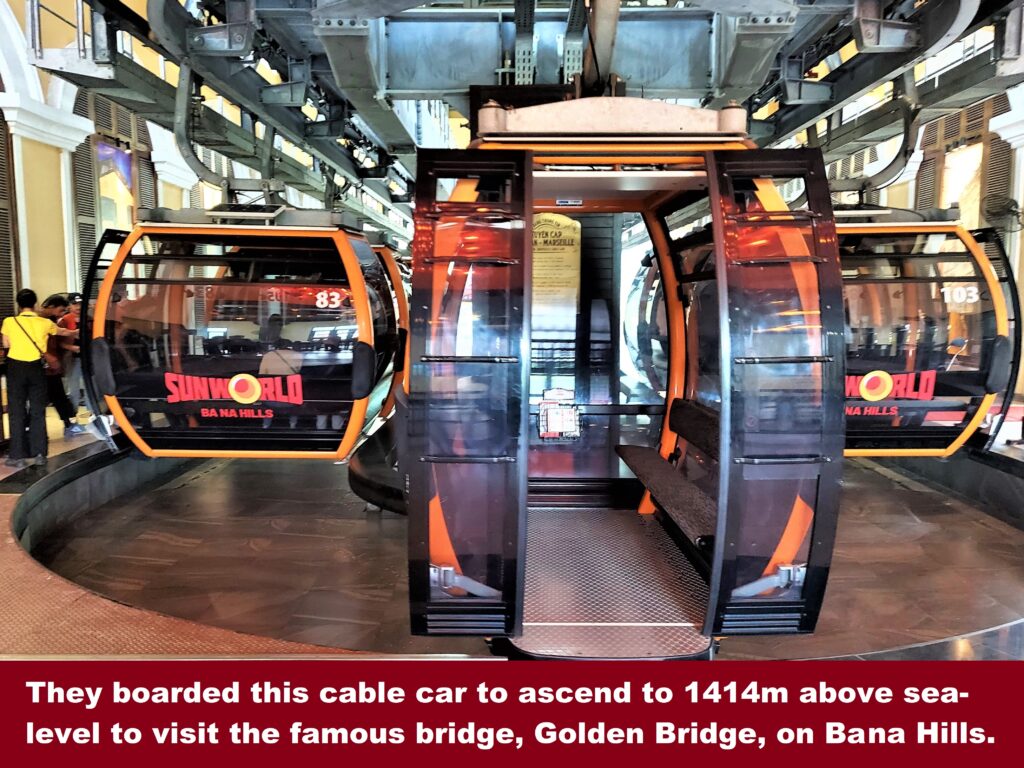
While ascending Bana Hills for 20 mins, they had breathtaking views of forests and sea in the distance.
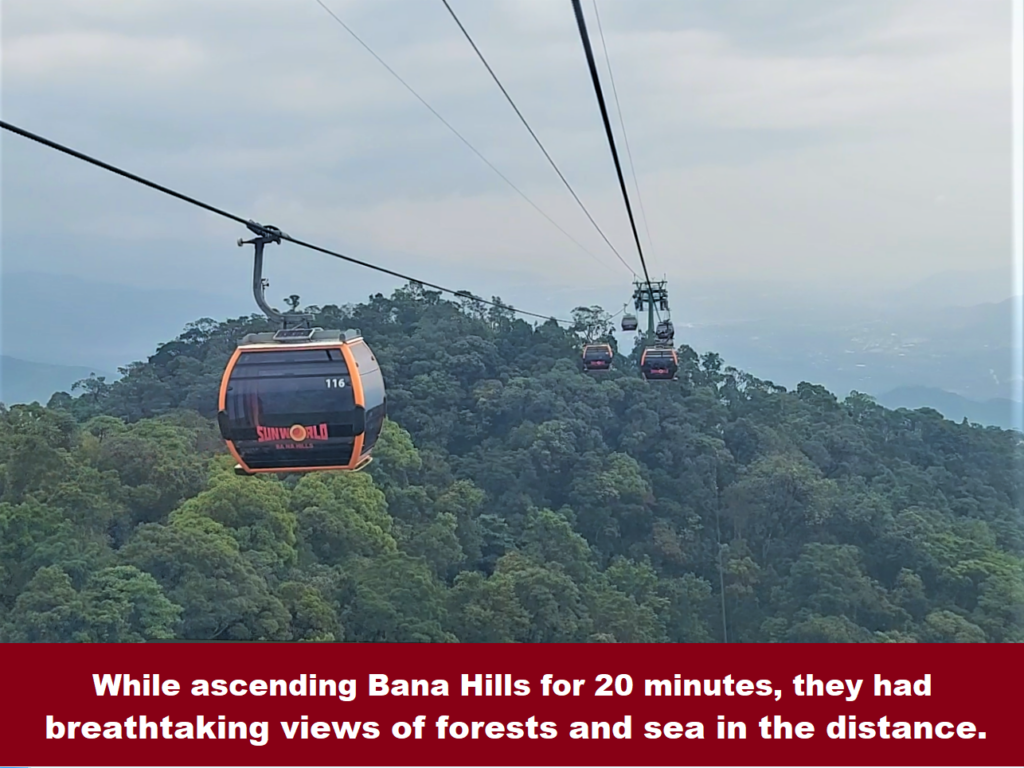
Soon they reached the next cable-car station, Marseille Station, where they alighted and and walked to Golden Bridge.
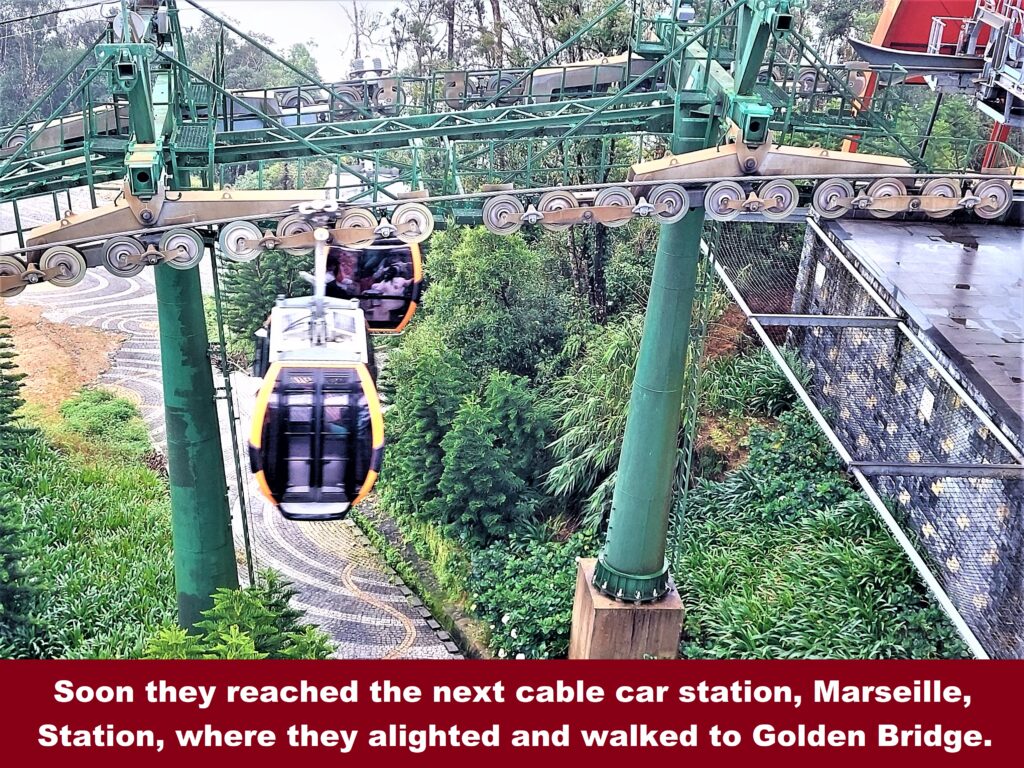
They saw many tourists on the bridge enjoying the spectacular sights of Bana Hills. The bridge is known as Golden Bridge as its railings are golden in colour.
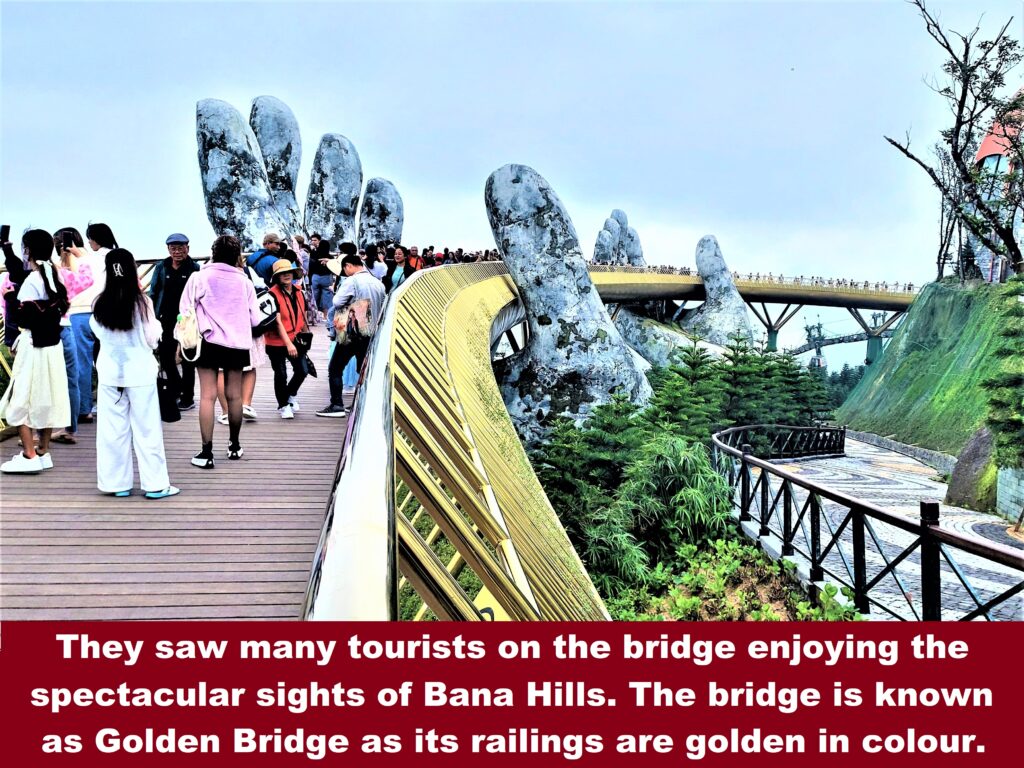
Tourists came in droves to see the unique Golden Bridge and enjoyed the breathtaking views of Bana Hills in Vietnam.
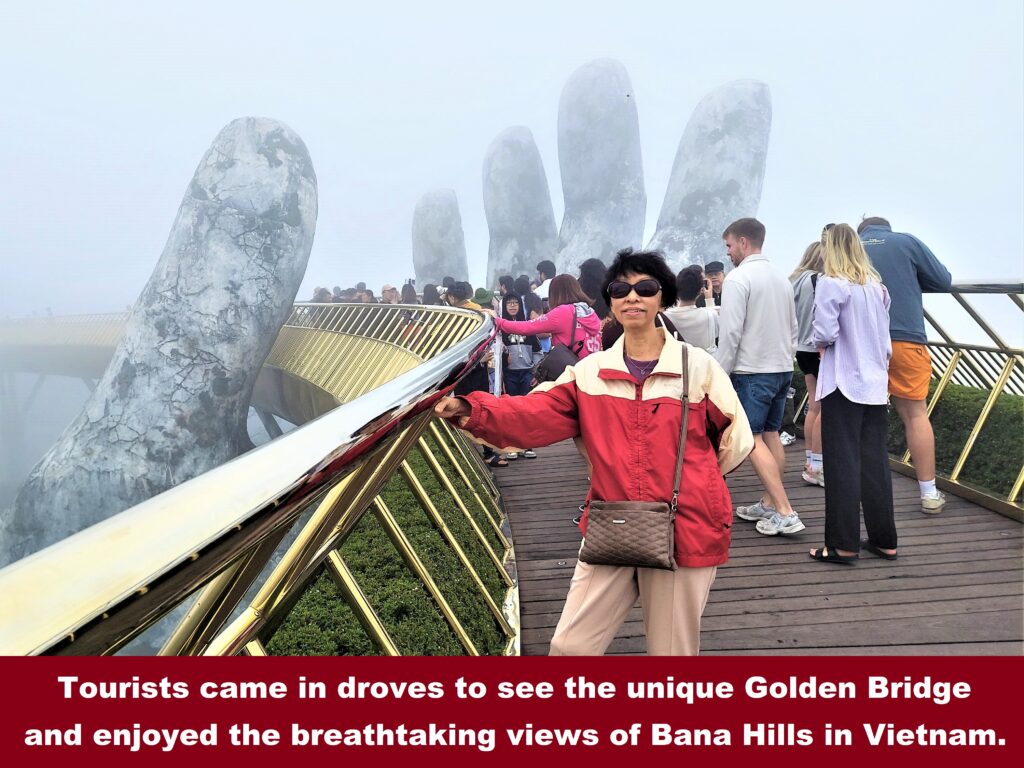
Golden Bridge is supported by two hands of a “giant”. This photo below shows the right hand of the “giant” holding up the bridge.
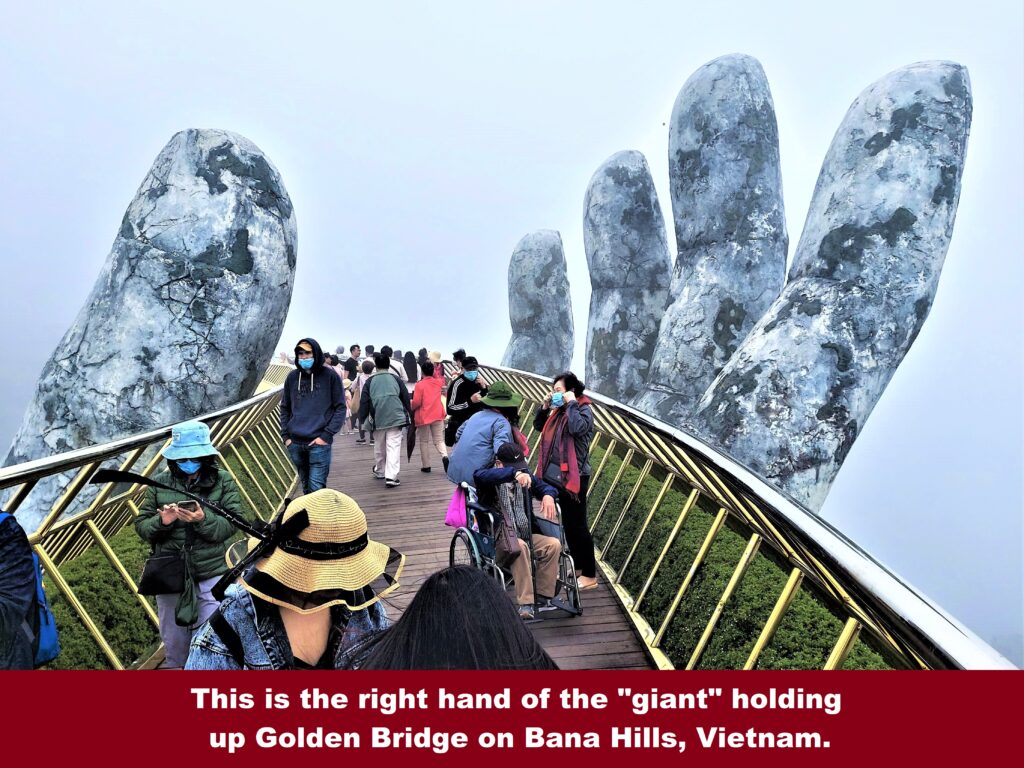
This photo below shows the left hand of the same “giant” holding up the bridge.
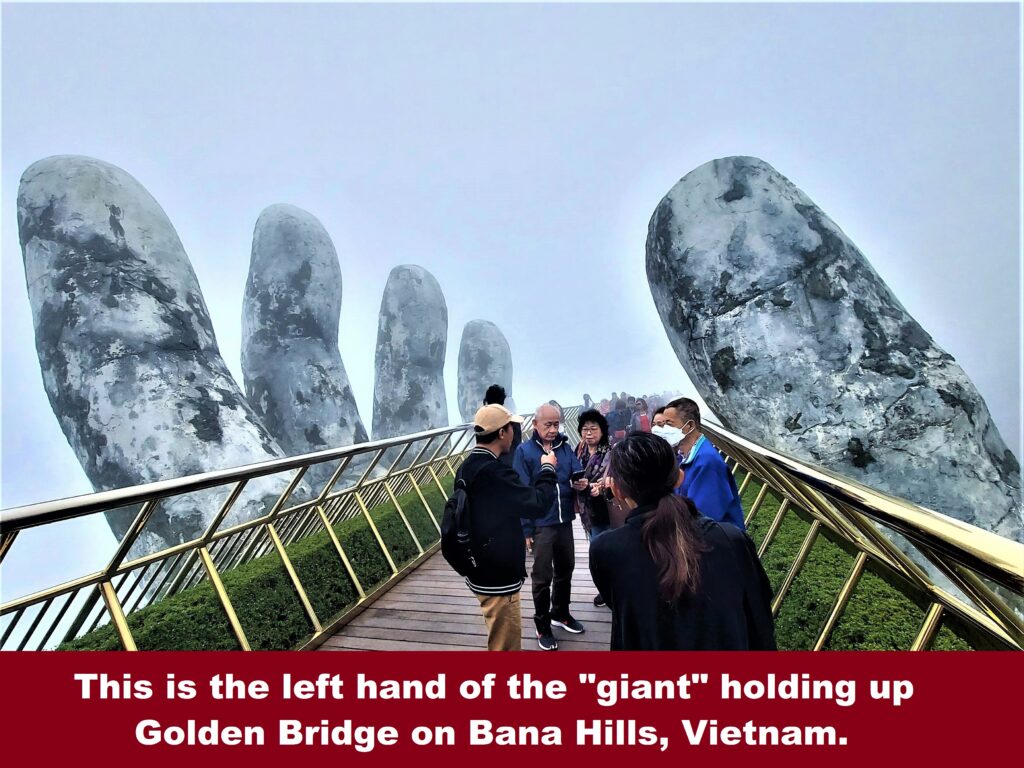
Tourists on Golden Bridge will enjoy the spectacular view of Bana Hills and beyond.
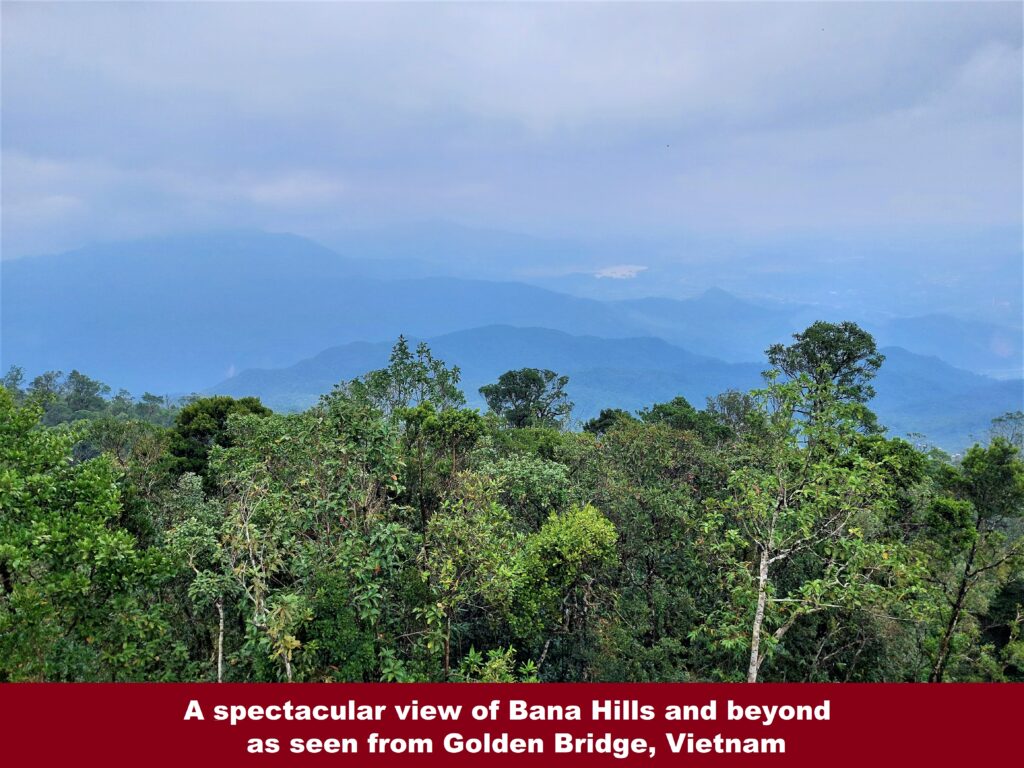
Another spectacular view of Bana Hills and beyond as seen from Golden Bridge.
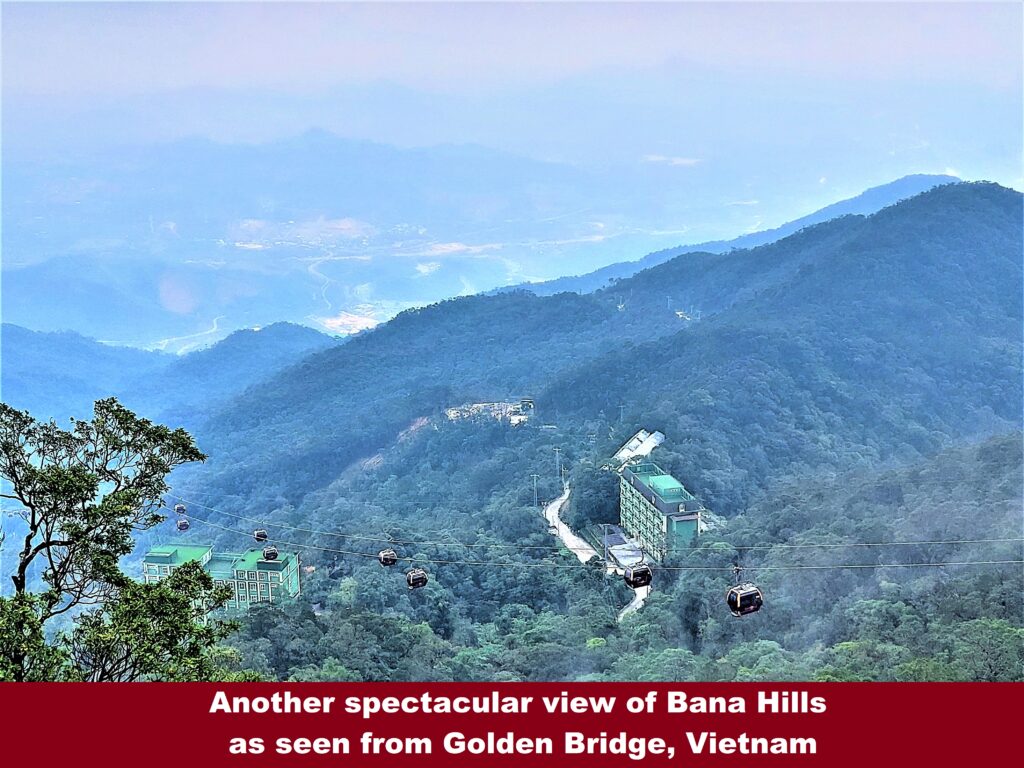
The weather in Bana Hills is unpredictable. One moment the place is bright, another moment it is misty and visibility is very poor.
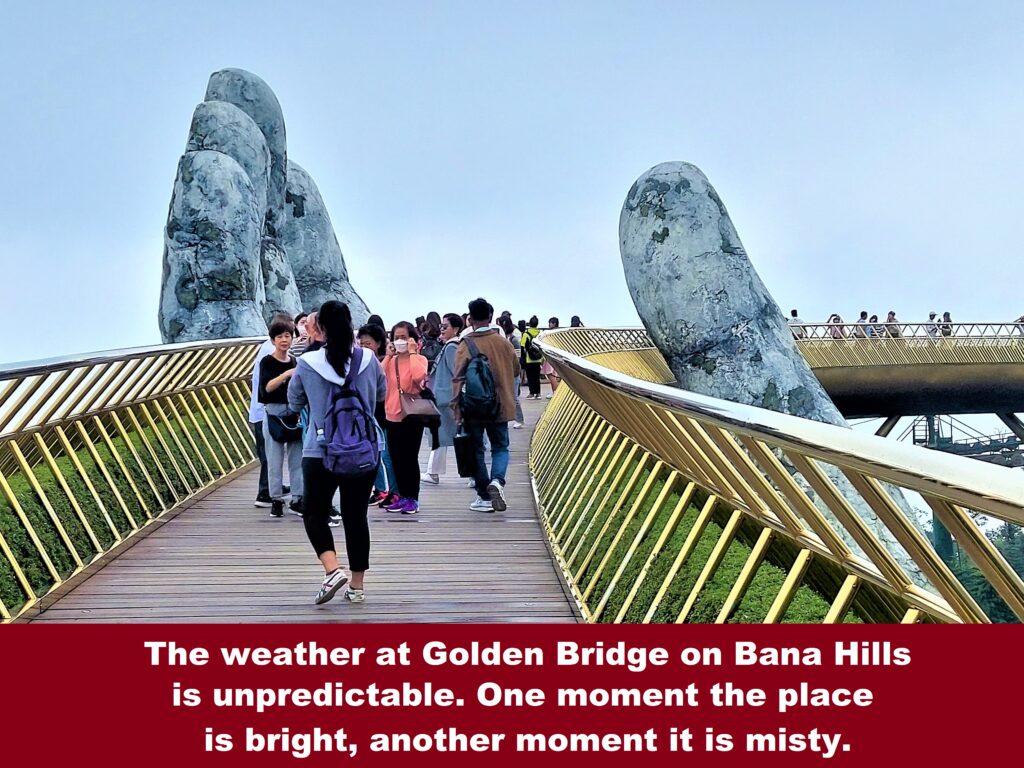
Photo below shows very poor visibility when Golden Bridge is shrouded in thick mist.
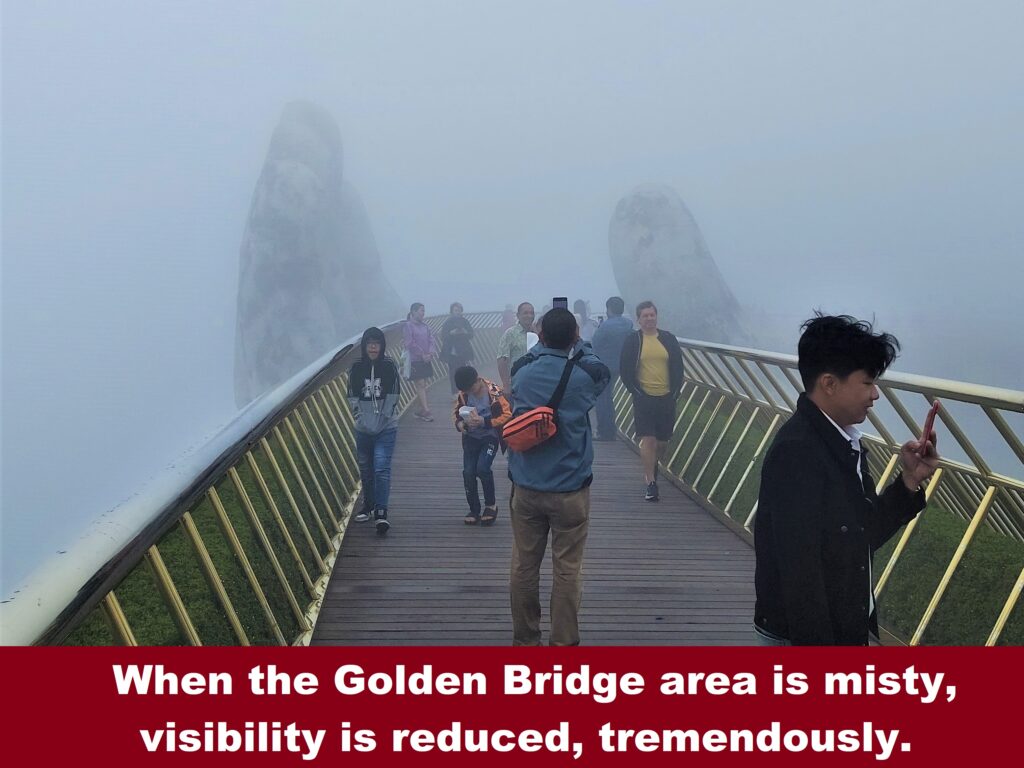
The spot with Golden Bridge in the background is tourists’ favourite place for taking photos for remembrance.
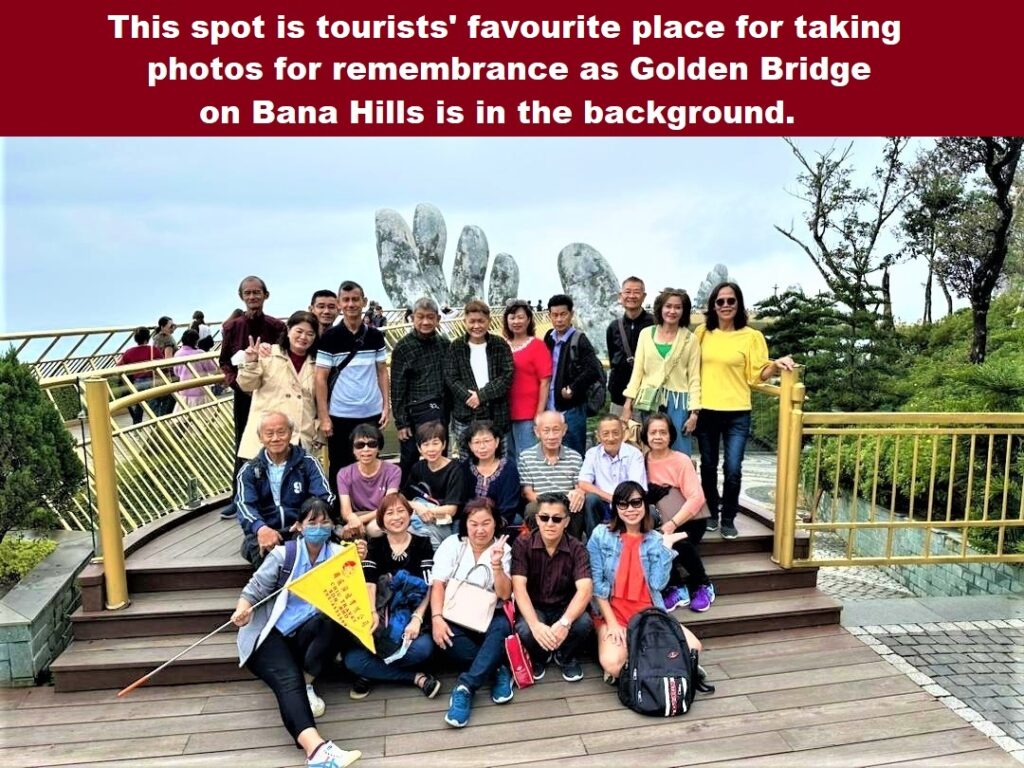
Writer and wife visited the famous bridge, Golden Bridge, on Bana Hills in Vietnam on 30 Oct 2022. It is a memorable visit to them.
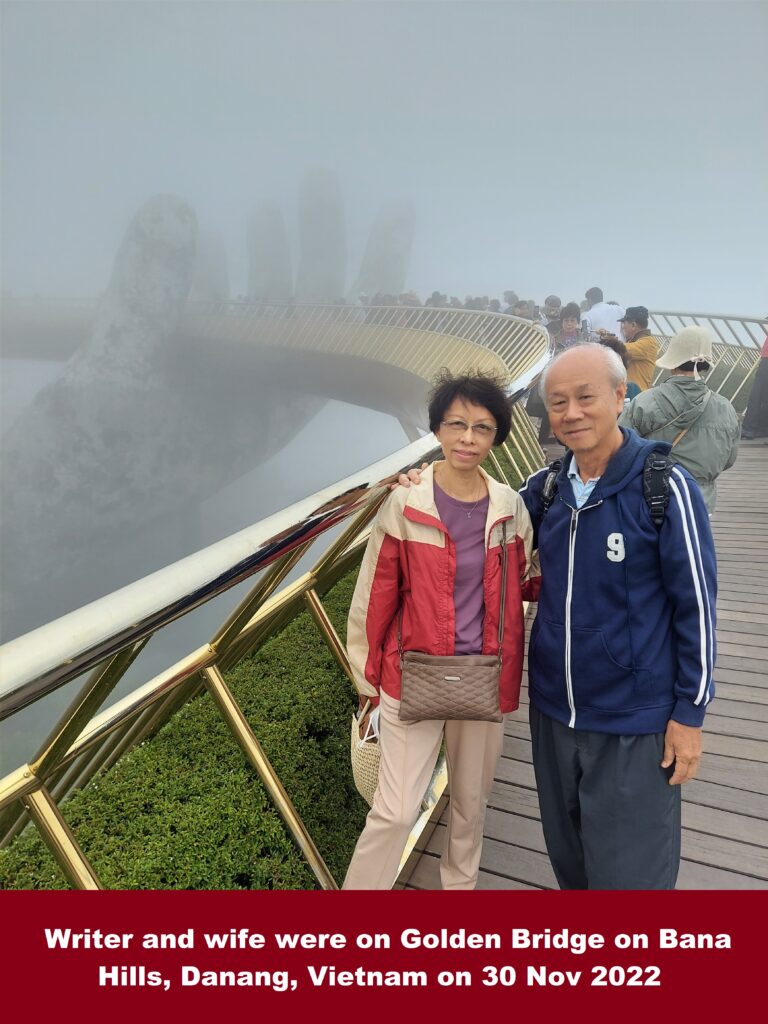
Hue Imperial City, Vietnam
Nguyen Dynasty was the last Vietnamese dynasty. Its emperors ruled Vietnam for 143 years from 1802 until 1945.
Gia Long was the first emperor of Nguyen Dynasty. He ruled Vietnam from 1802 until 1820. The last emperor was Bao Dai who ruled the country from 1926 until 1945.
The dynasty made Hue in Central Vietnam its capital where the Hue Imperial City was established for emperors to rule and live.
A map below shows the location of Hue in Vietnam.
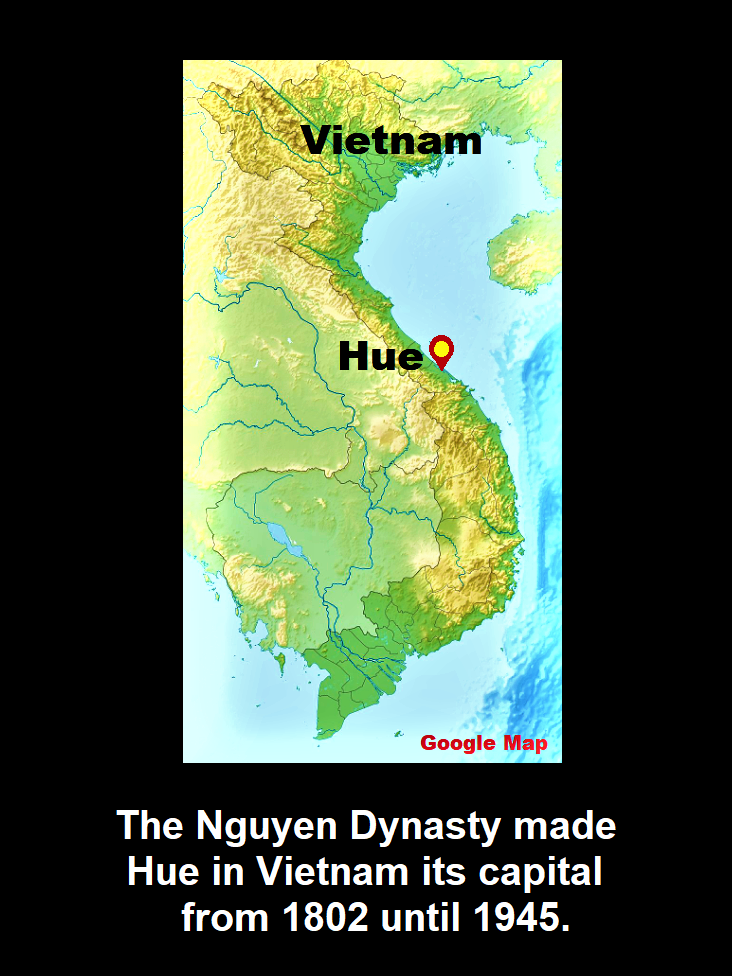
13 Vietnamese Emperors ruled Nguyen Dynasty from 1802 until 1945.
The photo below shows the hierarchy of emperors of the Nguyen Dynasty from 1802 to 1945.
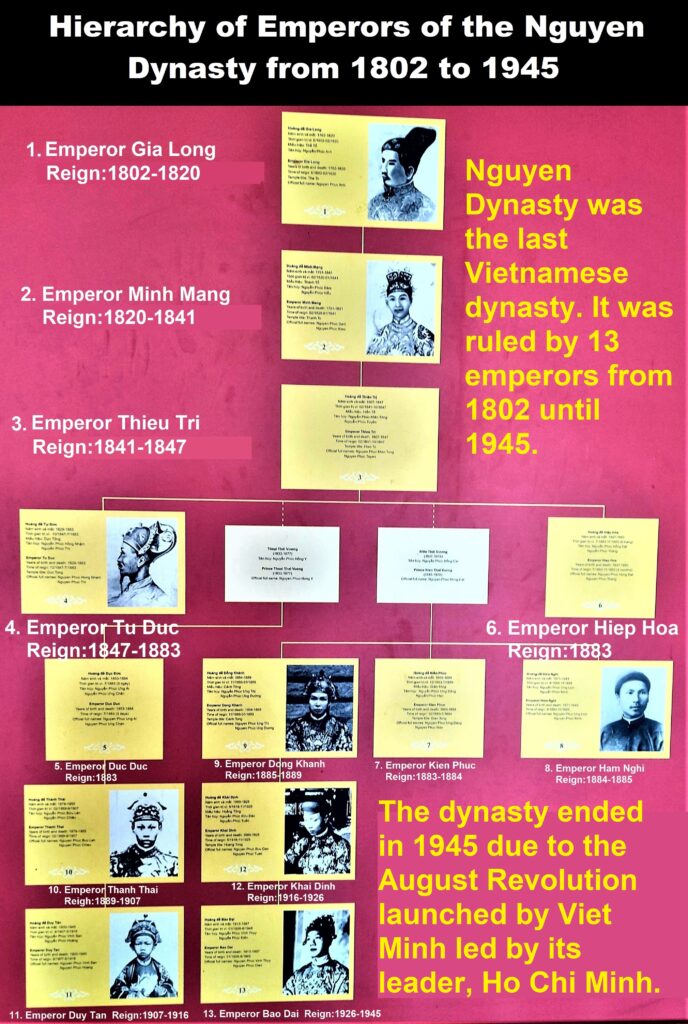
The emperors lived in Hue Imperial City. The photo below shows the layout of the Emperors’ domain.
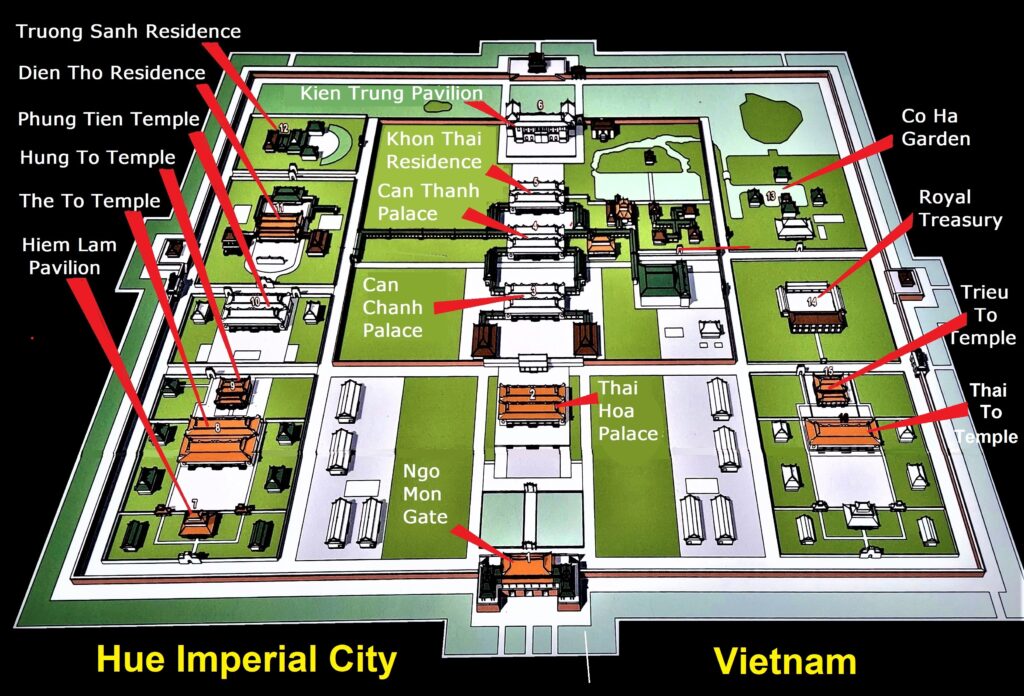
The Imperial City was protected by a large fortress which was surrounded by a moat.
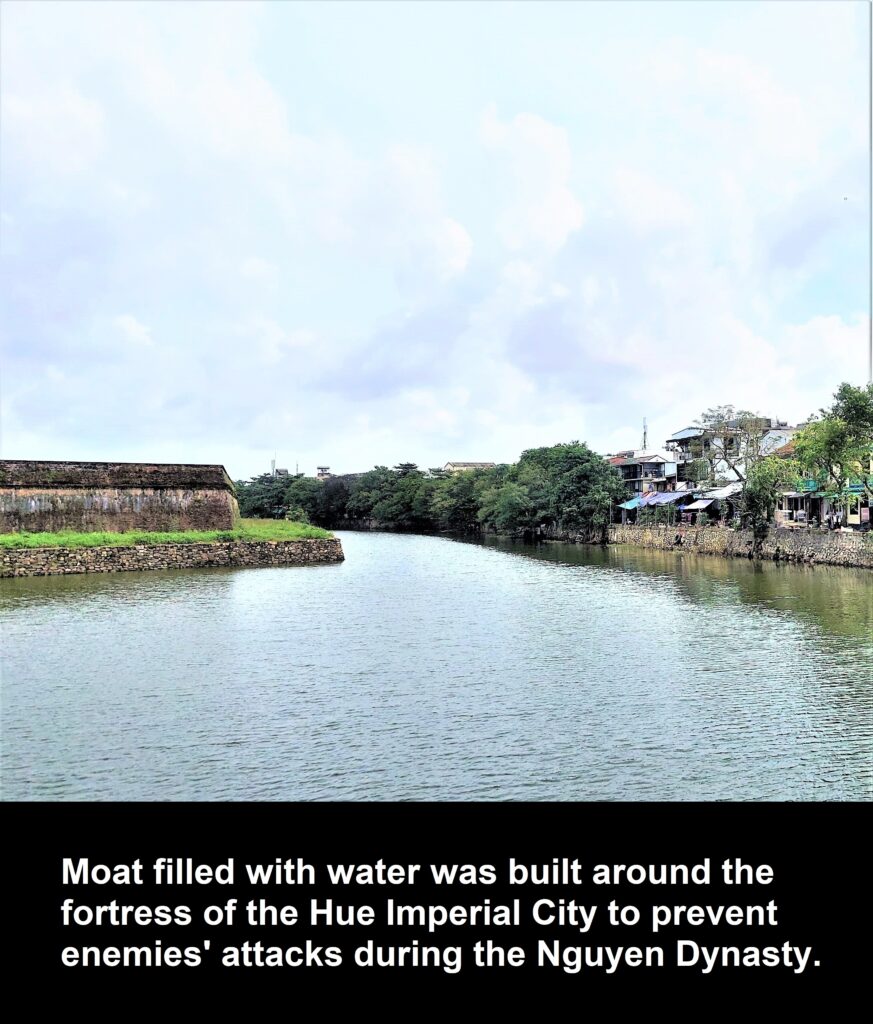
Gates were built to enter the fortress.
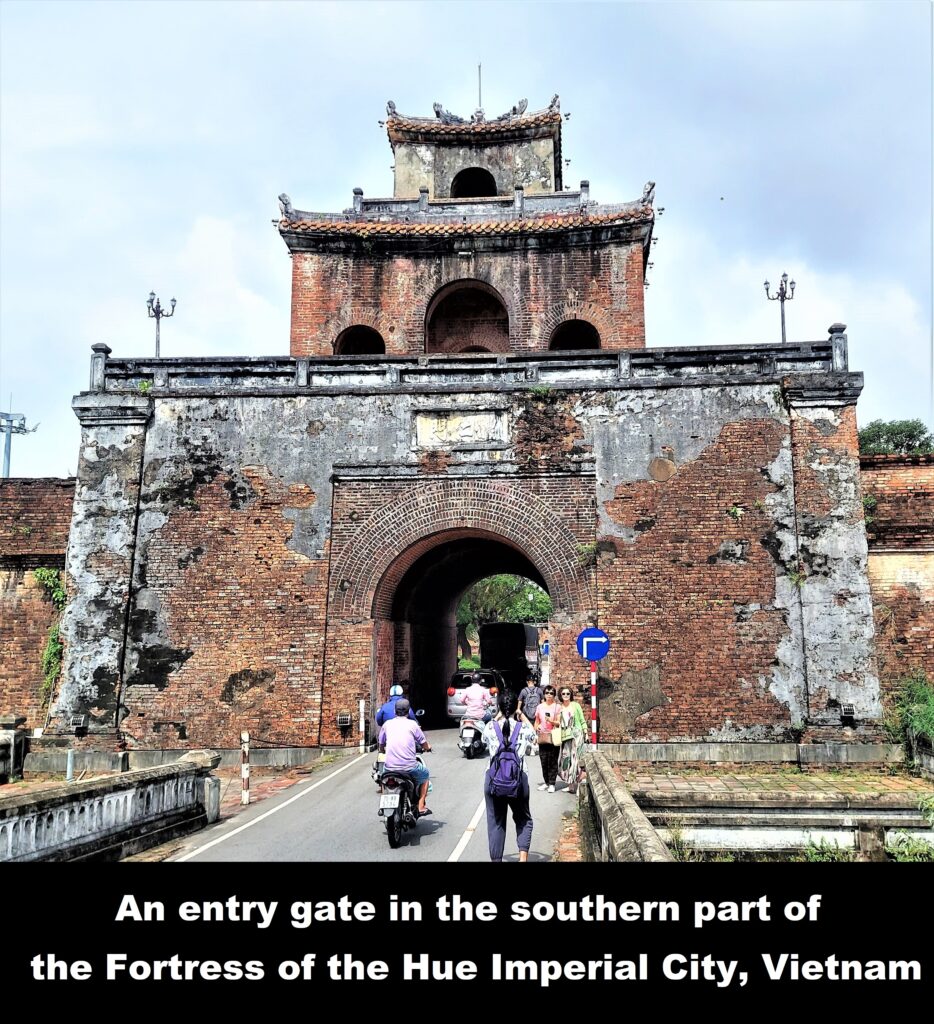
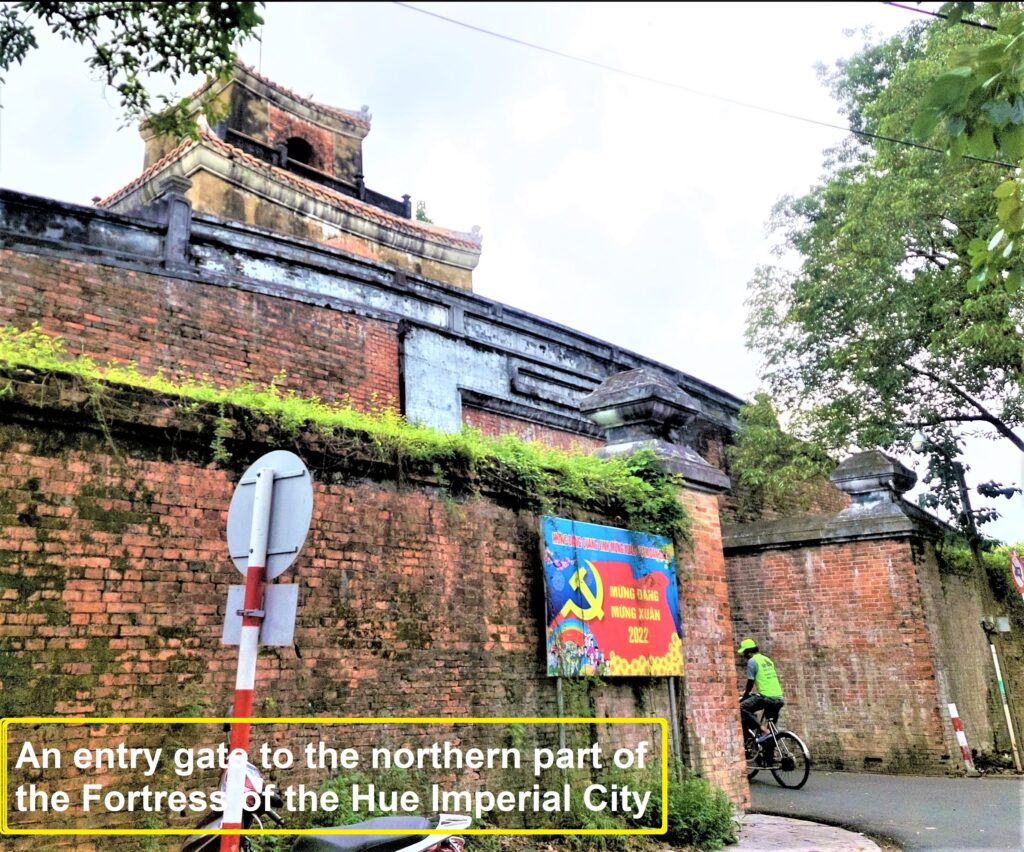
The fortress had some bastions for defensive fires in several directions.
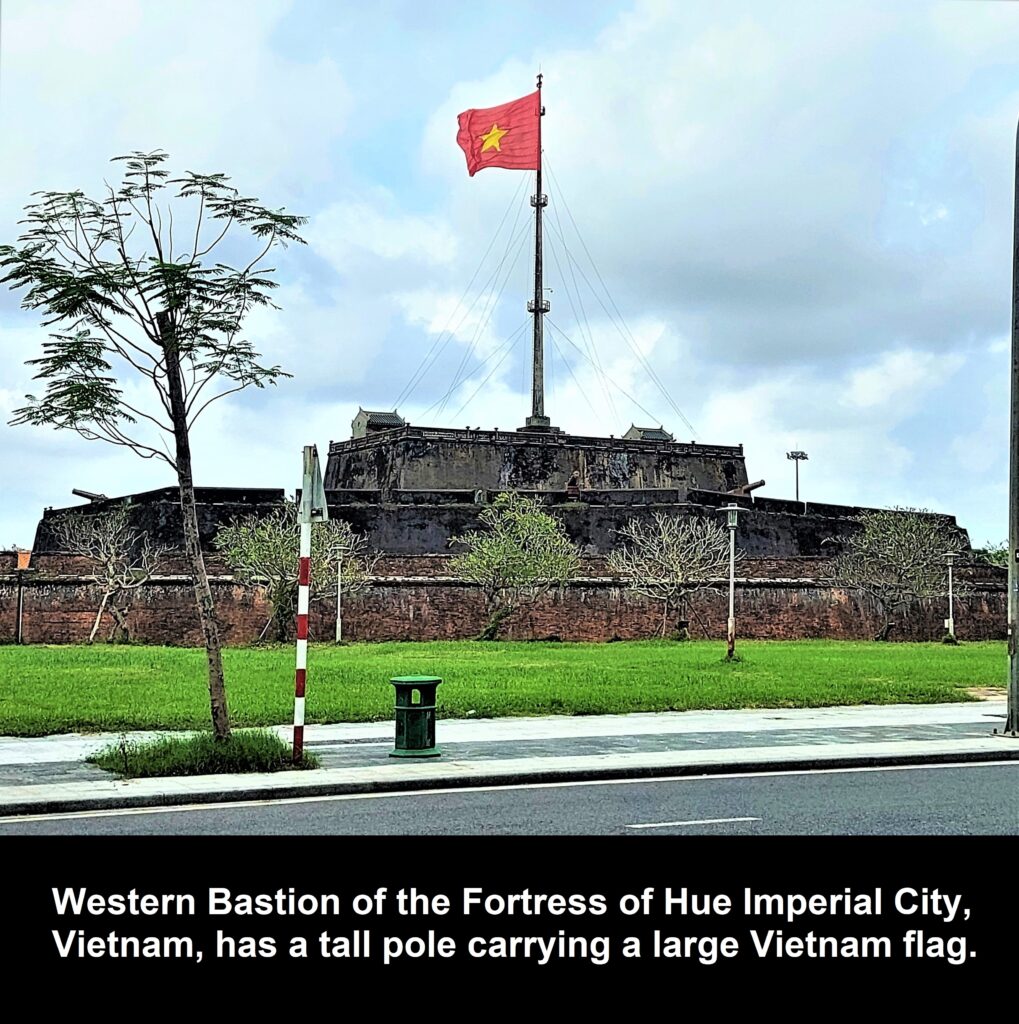
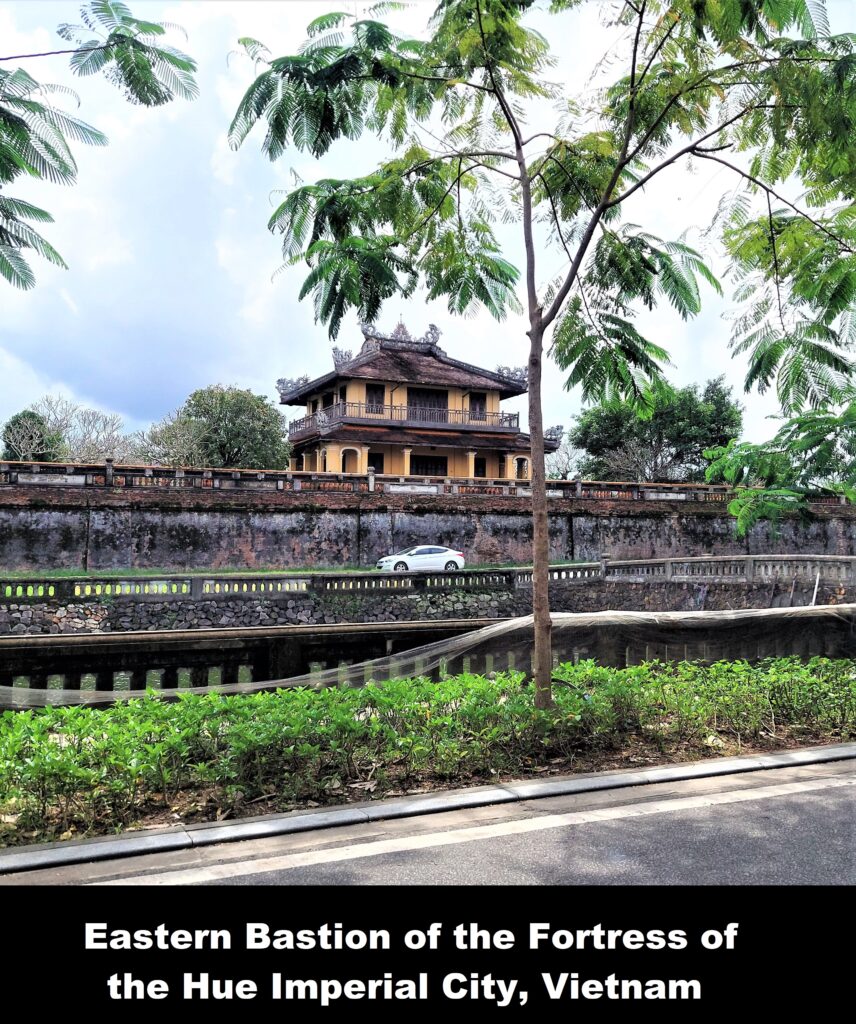
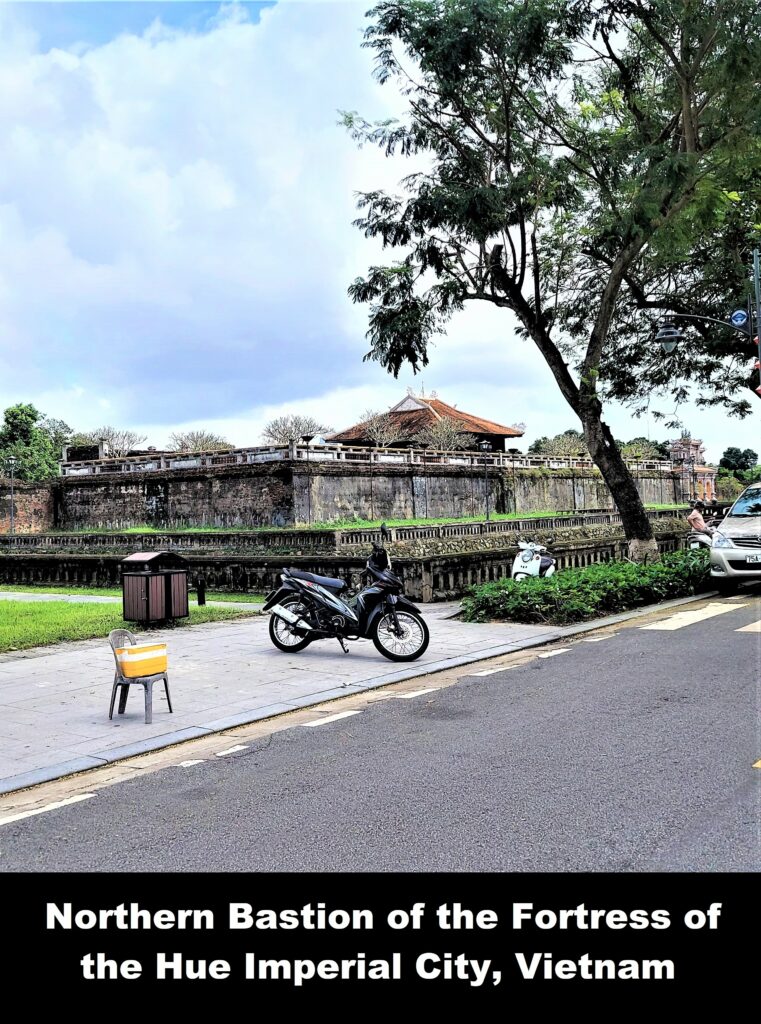
The main entrance to the Imperial City is an impressive gate and is a popular spot where tourists will take a photo for remembrance.
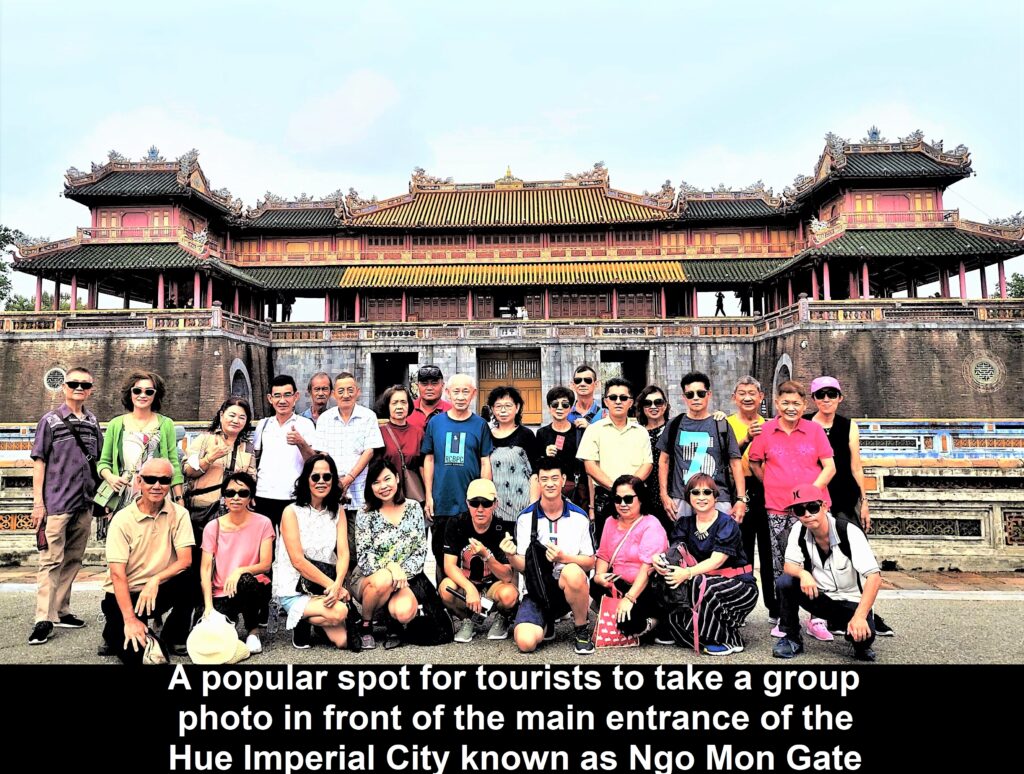
The Imperial City is inside the fortress where the ex-emperors’ office and residence were in a special area known as the Purple Forbidden City.
Unfortunately, some buildings were destroyed in Vietnam War(1955-1975).
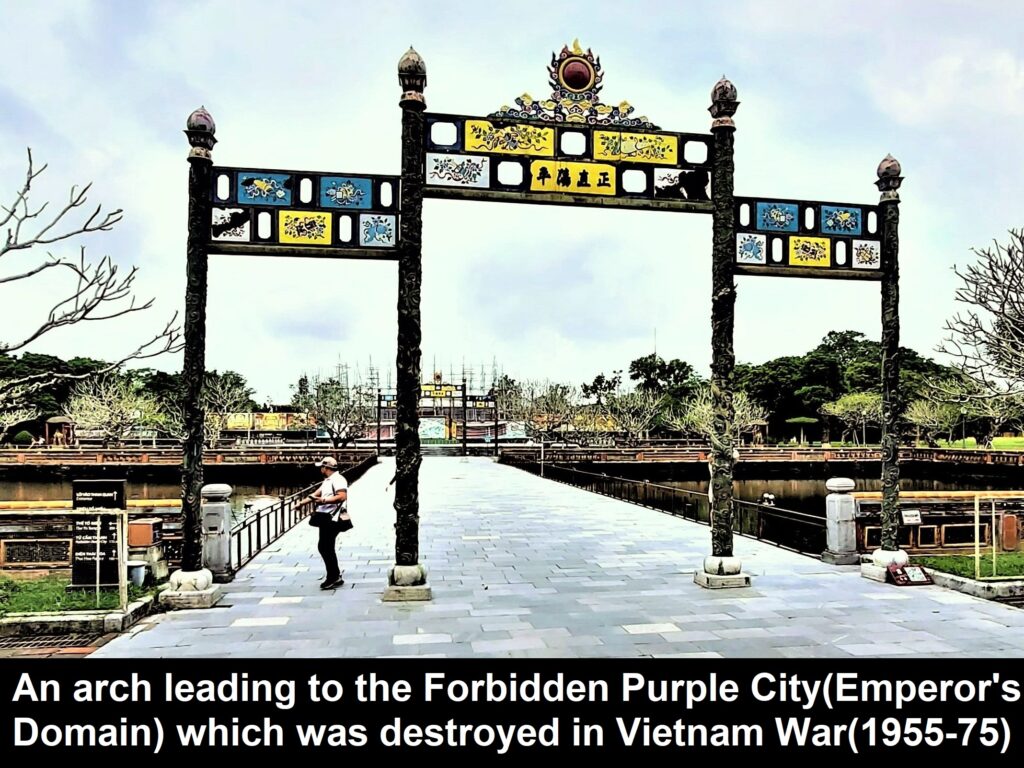
Ten emperors of Nguyen Dynasty were honoured in a large temple, The To Temple, in the Imperial City.
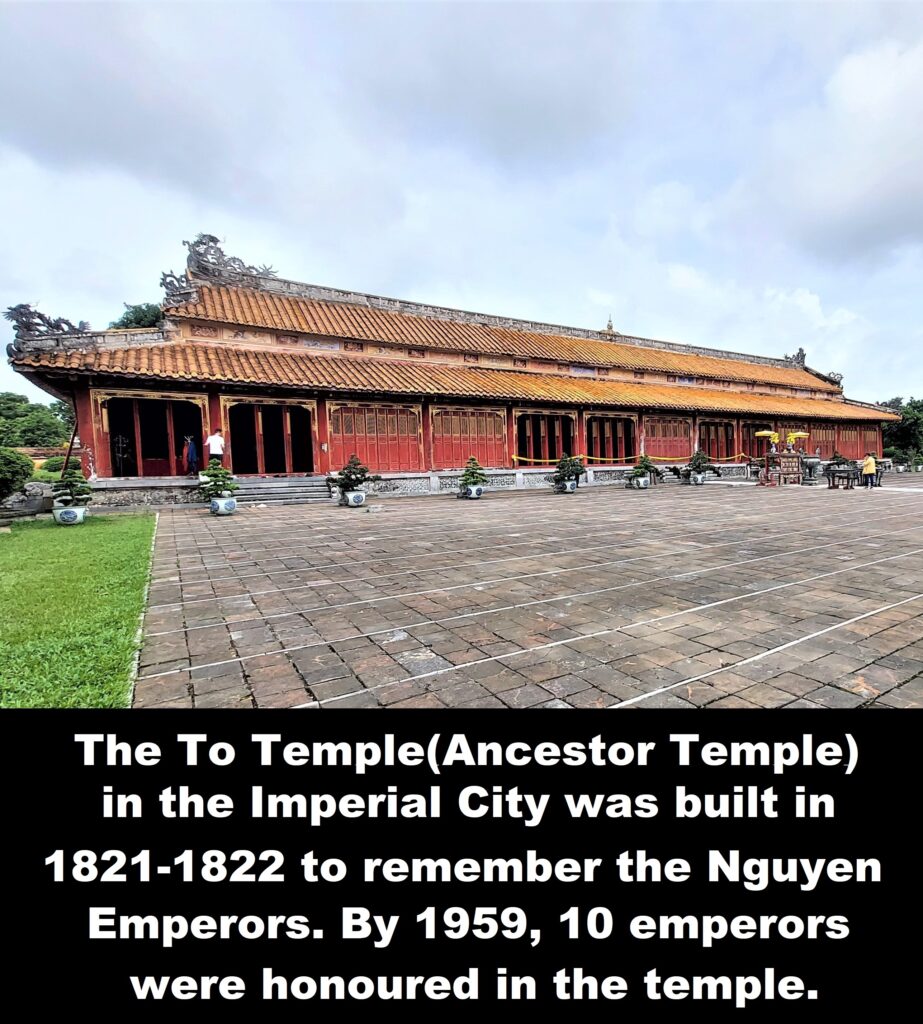
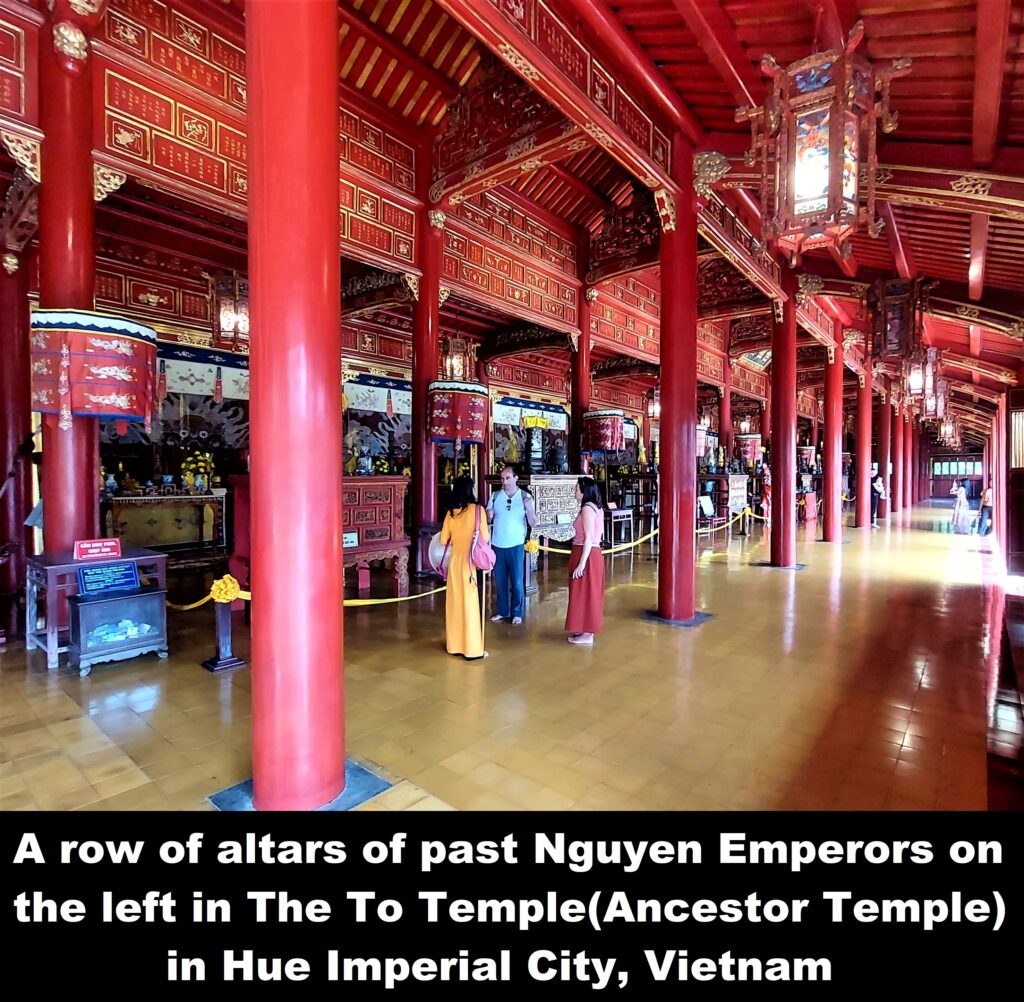
The following photos show the altars of the first four emperors in the temple.
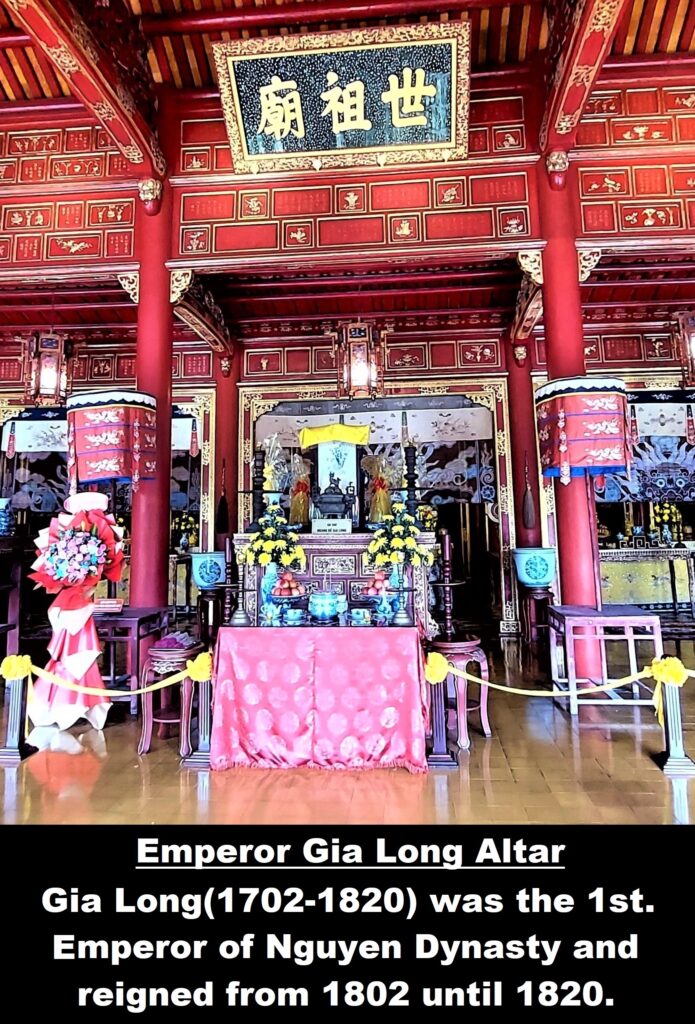
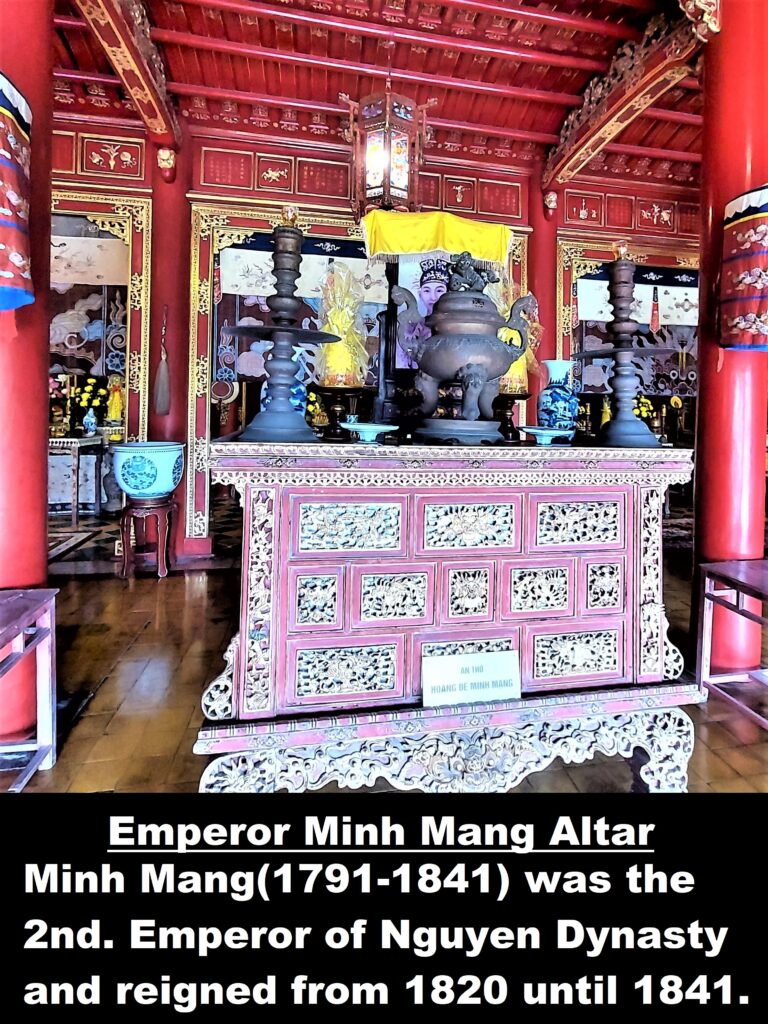
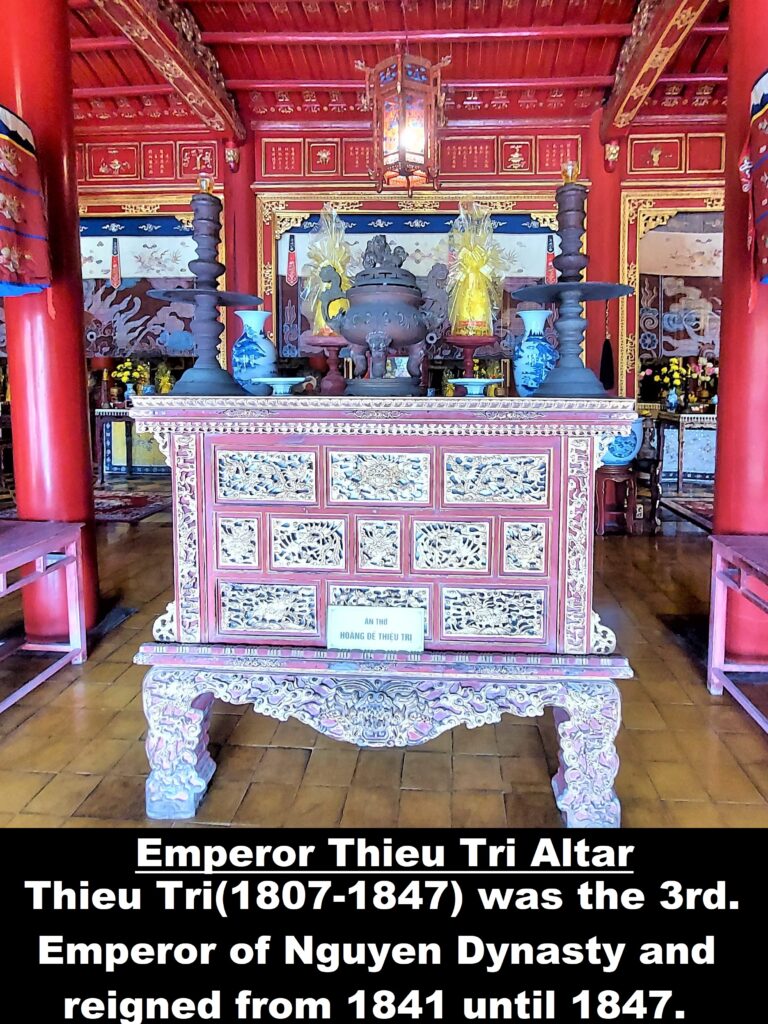
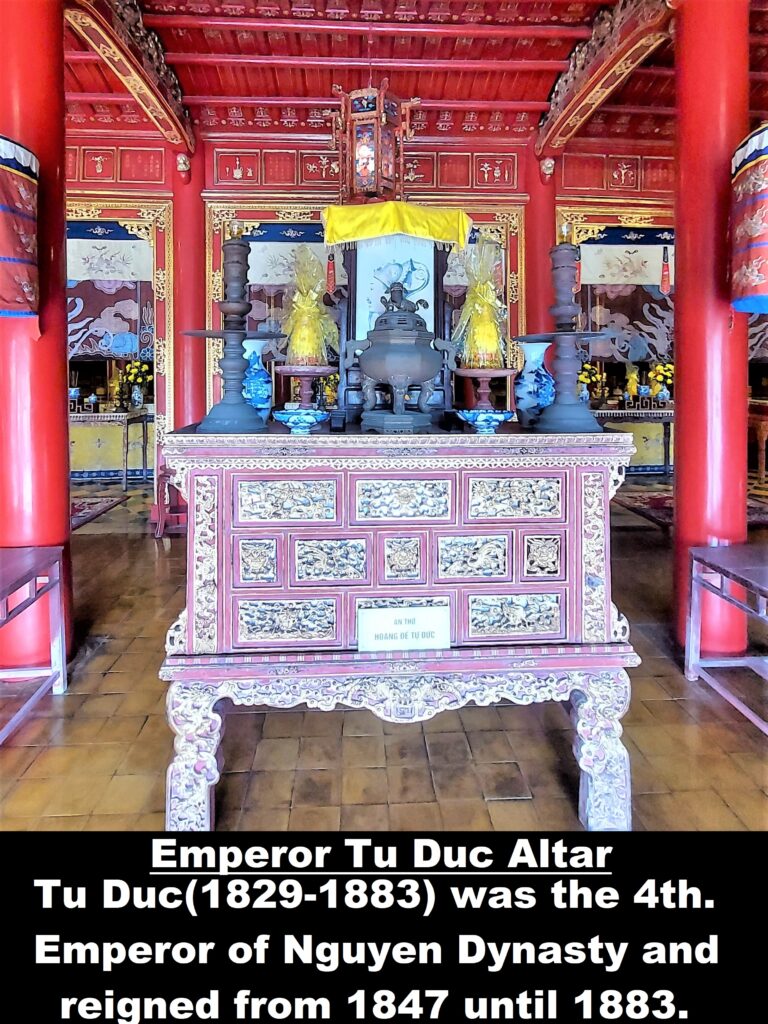
A place outside that temple is reserved for visitors to worship the ex-Nguyen emperors.
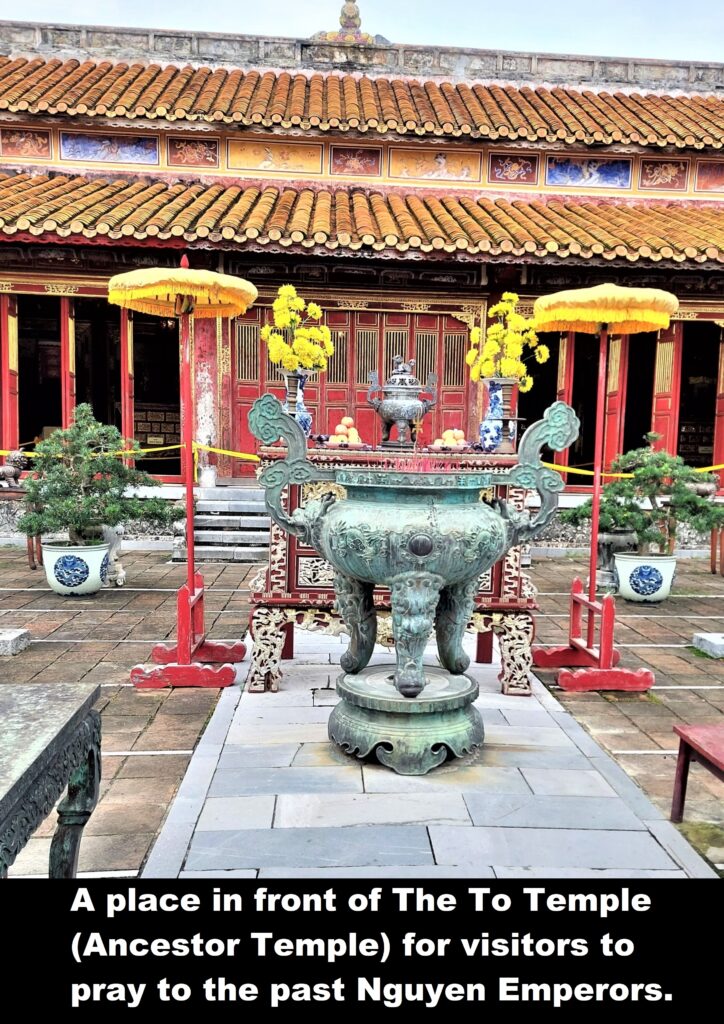
A 3-storey pavilion, Hien Lan, was built facing The To Temple. It had nine large bronze urns to honour nine ex-Nguyen emperors.
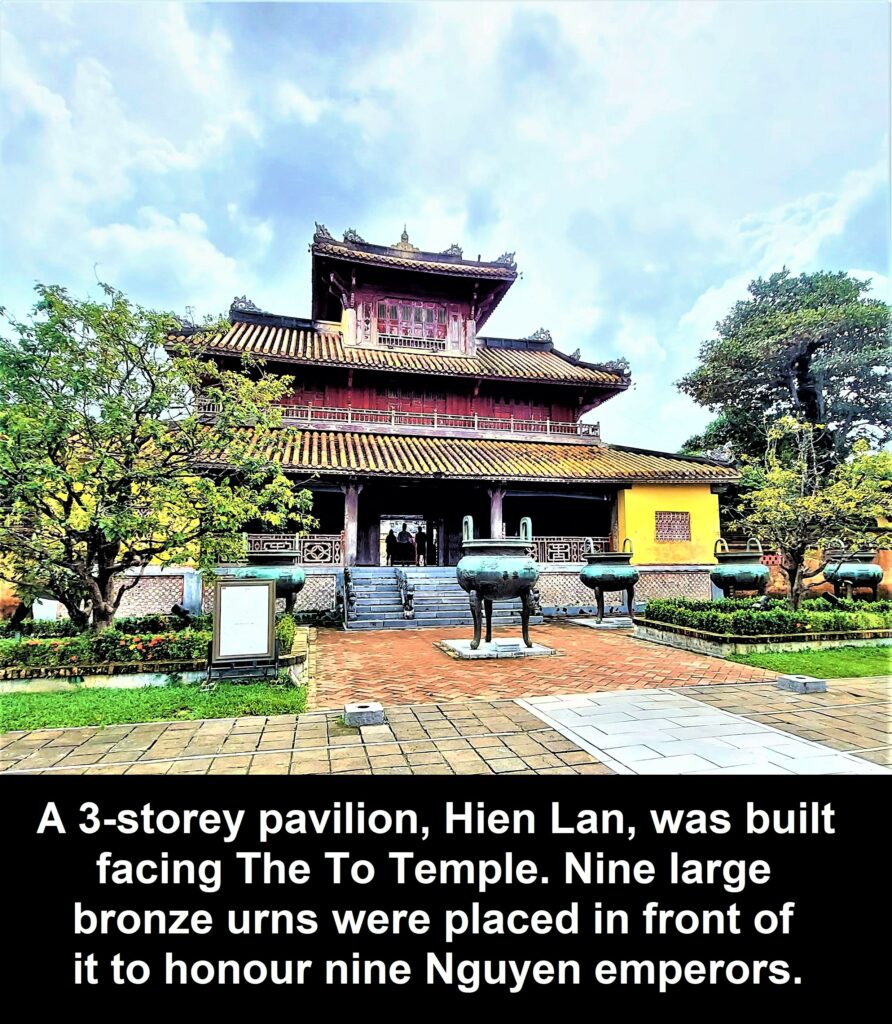
Many ornate gates were built in Hue Imperial City. Some are shown in the photos below.
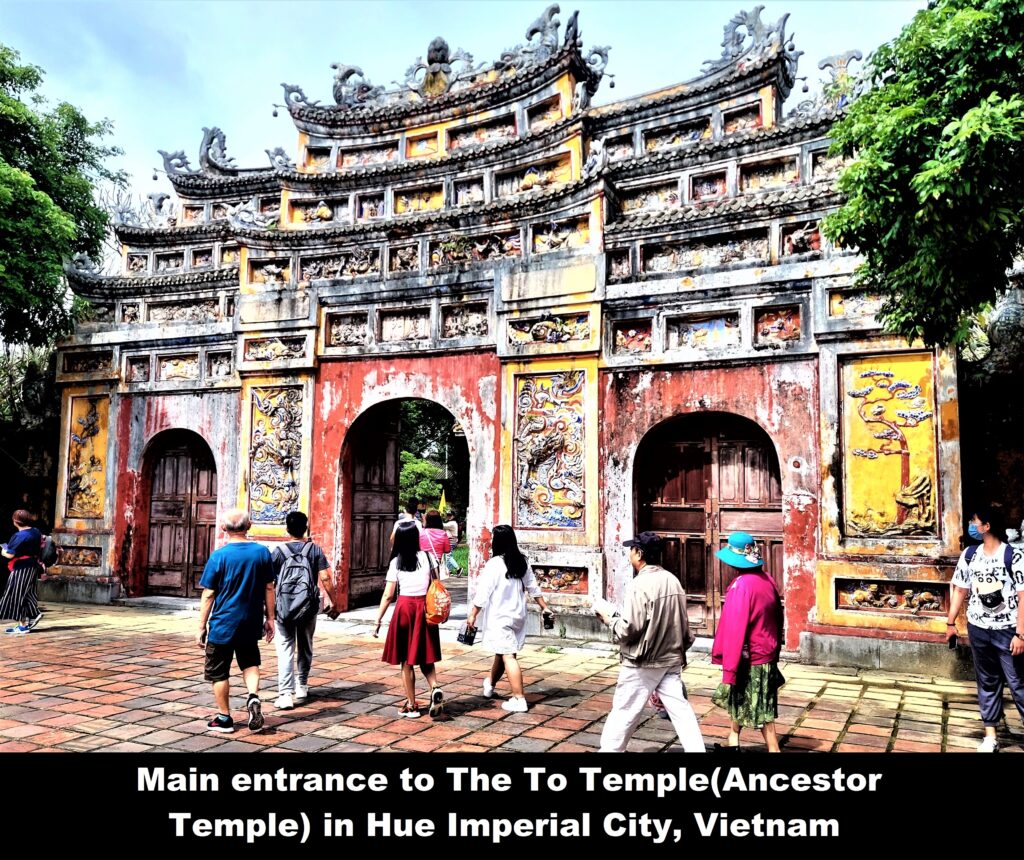
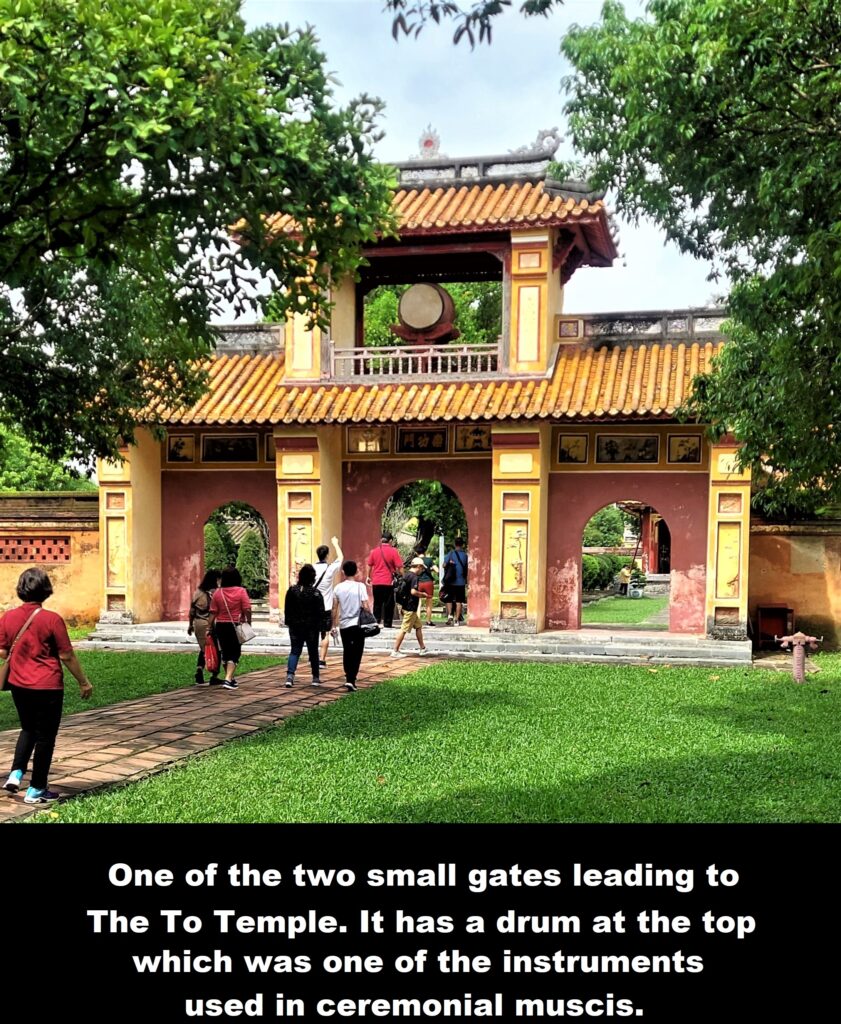
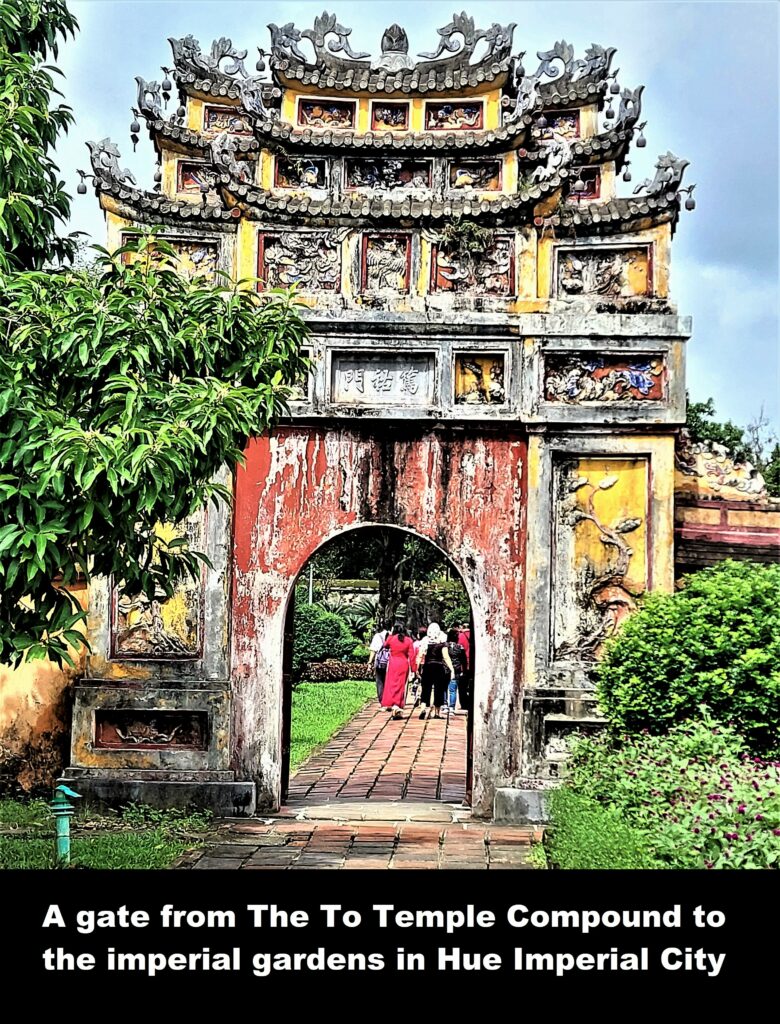
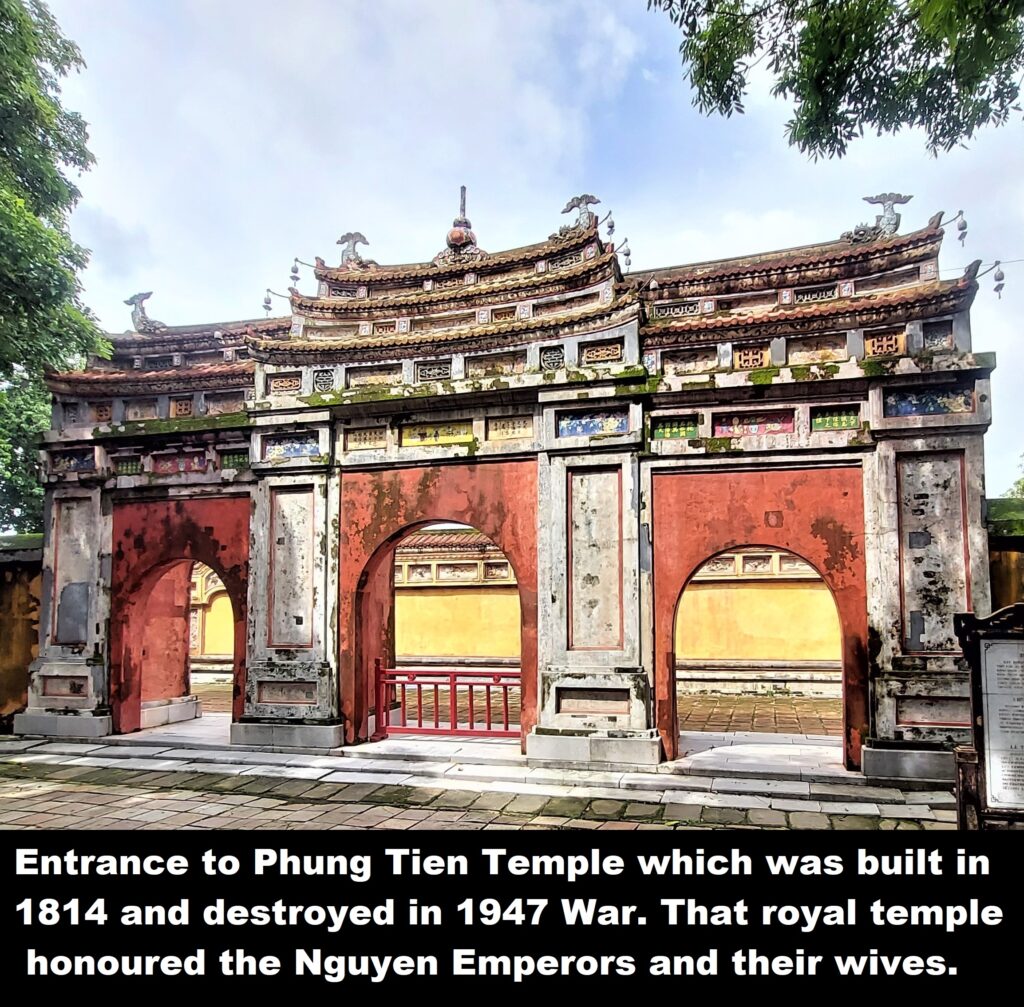
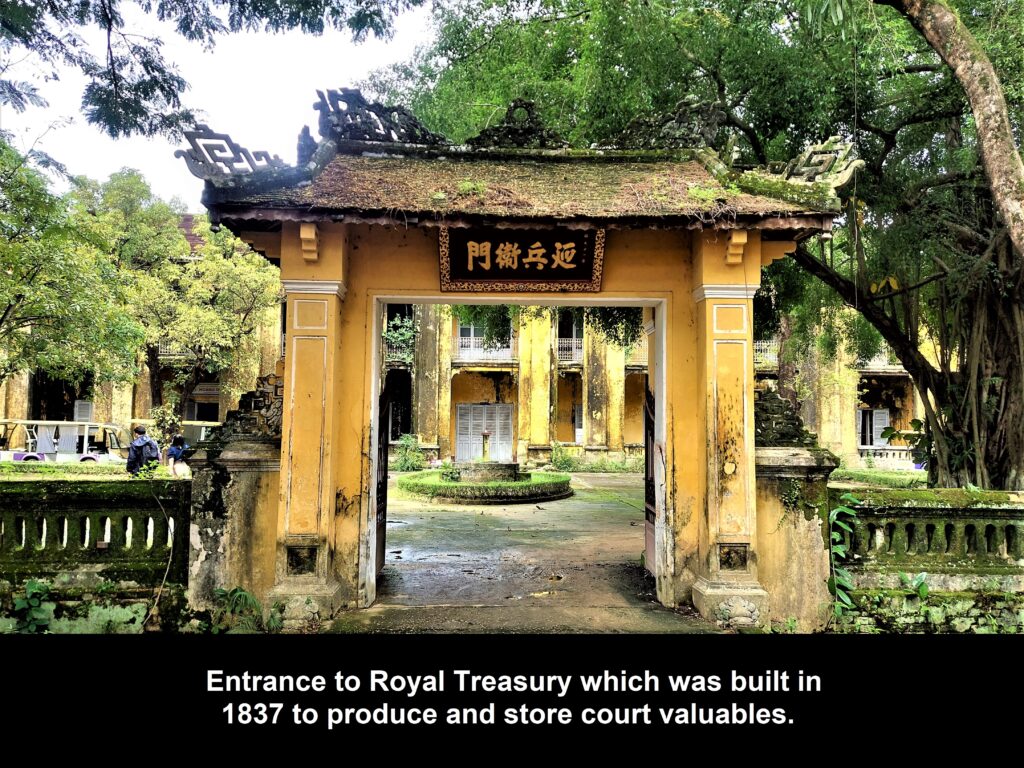
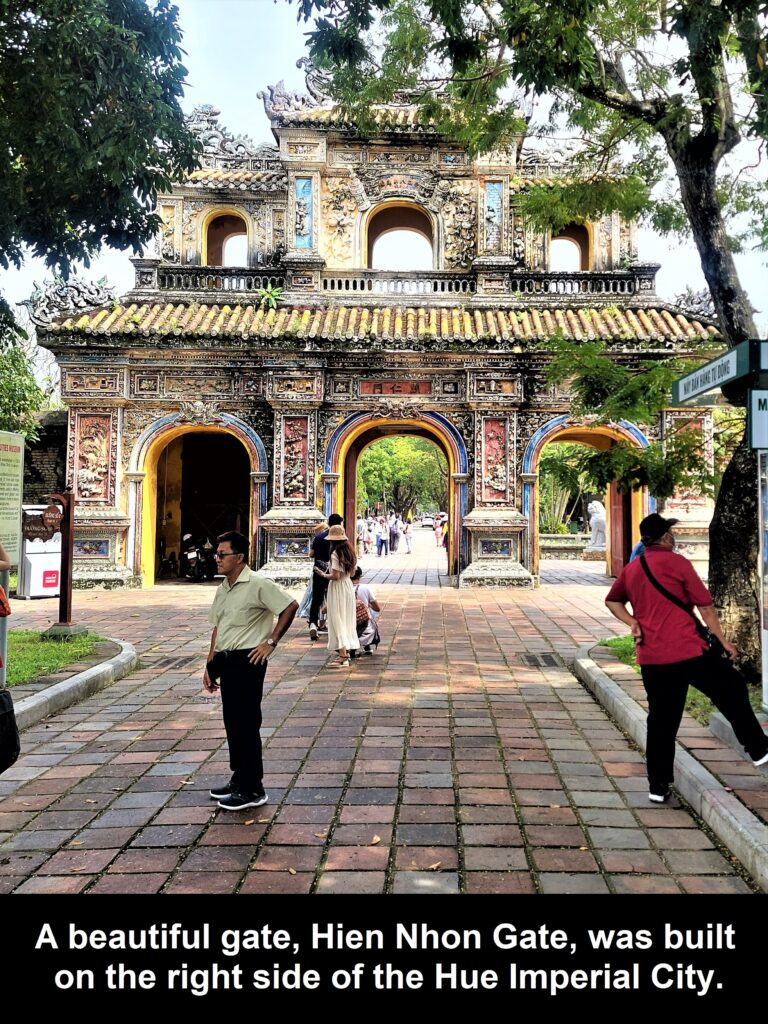
There are two temples near Hien Nhon Gate. One which is known as Trieu Mieu Temple was built to dedicate to the Lord Nguyen Hoang’s parents whereas the other one, Thai Mieu Temple, was built to honour the cults of nine ex-Nguyen emperors.
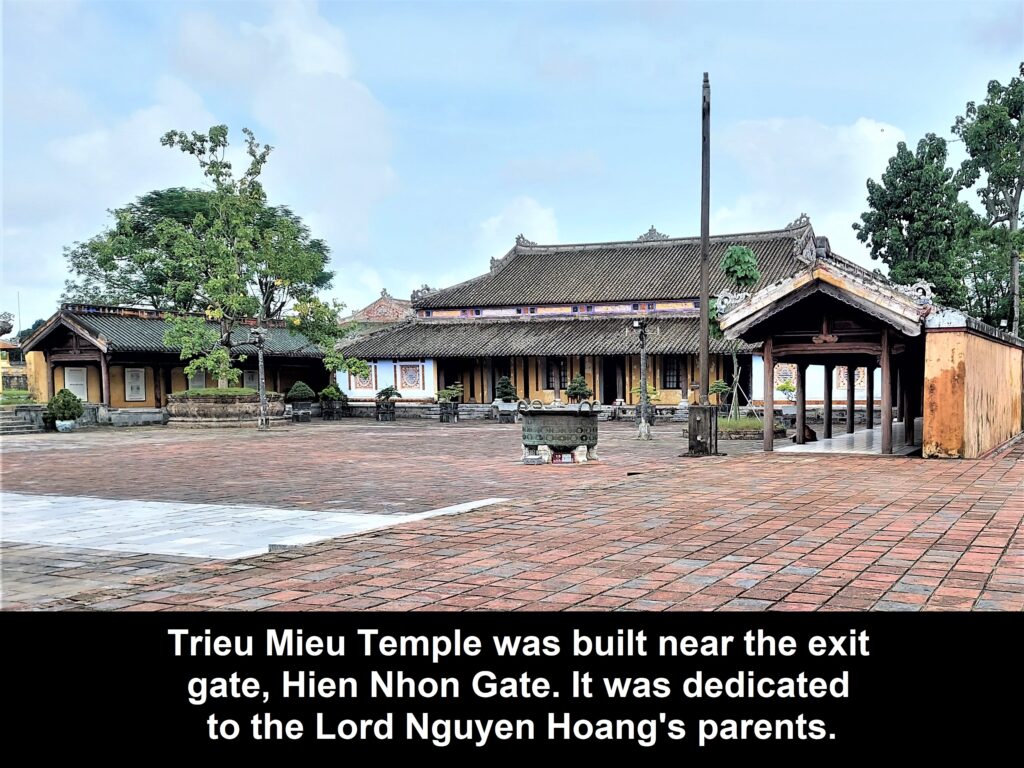
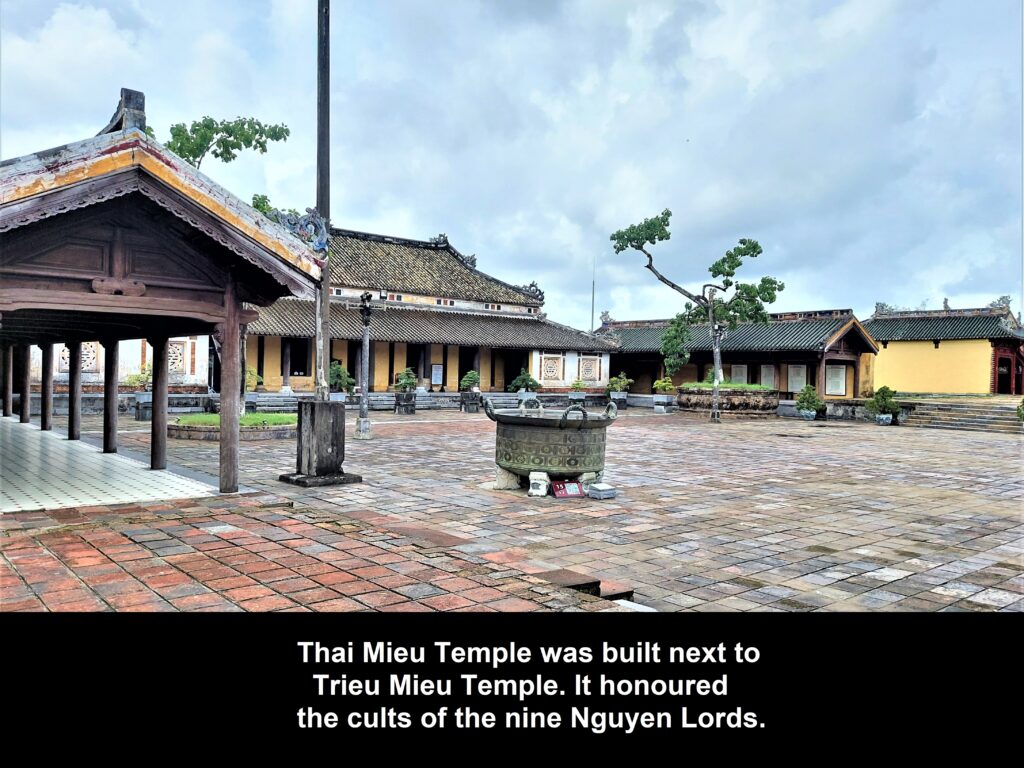
A shed outside Hue Imperial City and in the fortress compound houses four large bronze cannons left behind by Tay Son Dynasty(1778-1802).
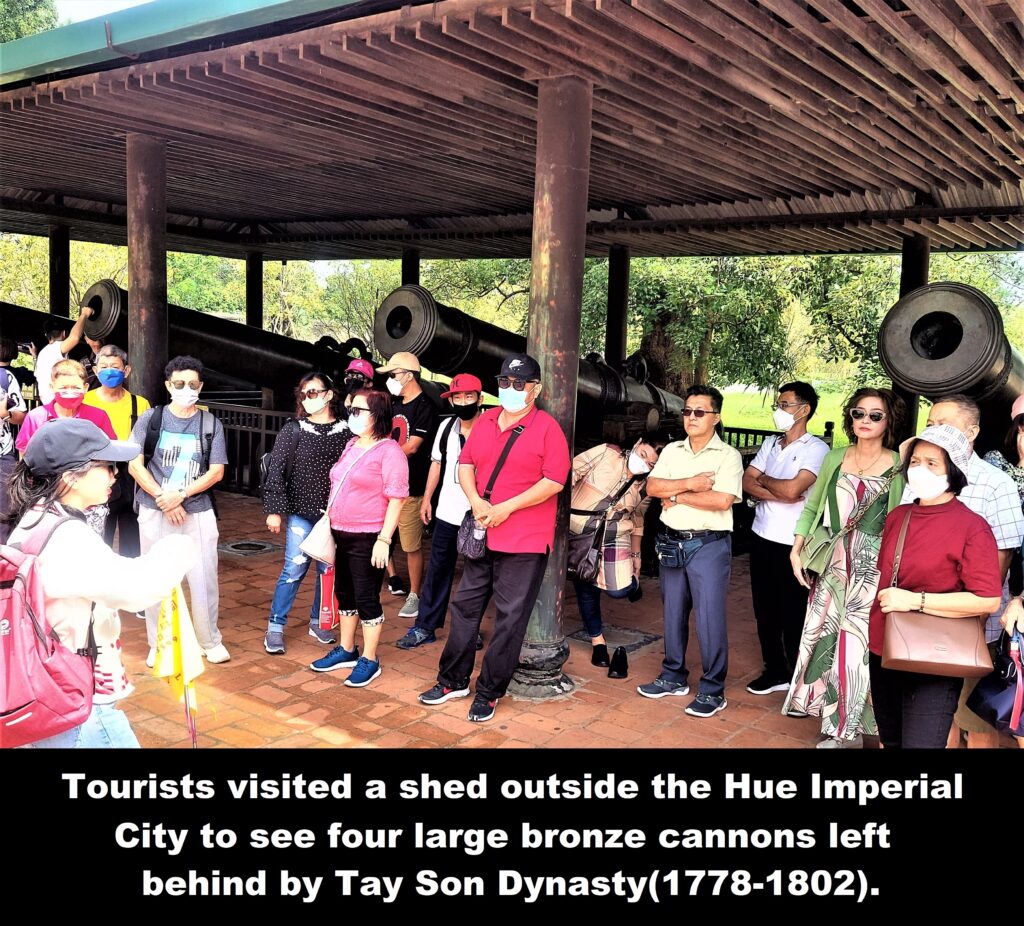
Each cannon is 5.1m long and weighs more than 10 tons.
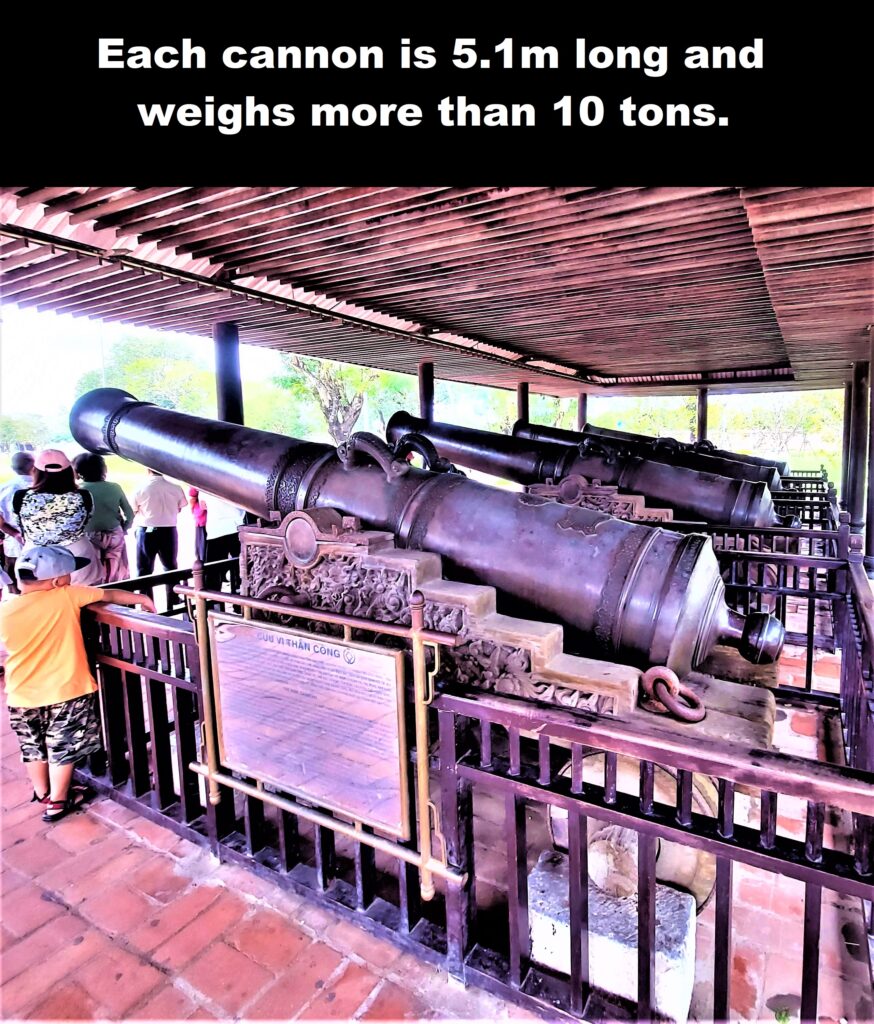
The writer, Choo Chaw, visited the Hue Imperial City of the Nguyen Dynasty(1802-1945) on 28 Oct 2022 and hope you have learned about the Nguyen Imperial City in Hue, Vietnam.
Writer’s List of Visited Countries
Writer’s List of Visited Countries:
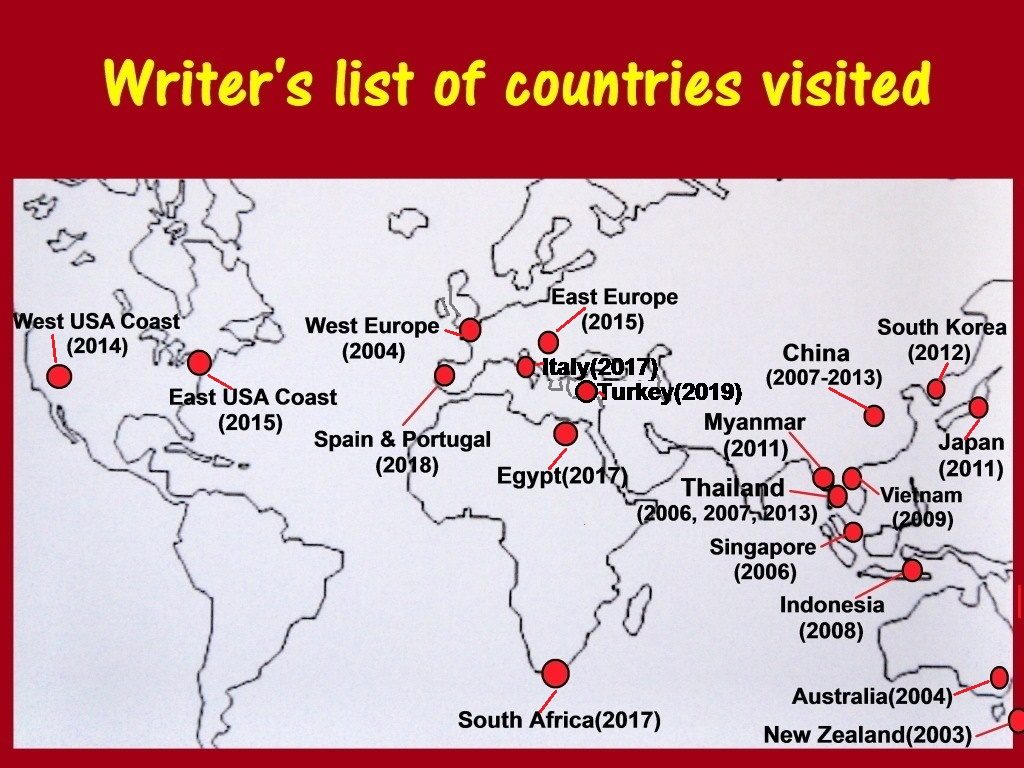
(Click on the name of a country or city below and read about the writer’s tour in the country or city.)
Australia Travel:
Part I: Melbourne/Mornington Peninsula/Phillip Island),
China Travel:
i. Beijing, Tianjin, Chengde Travel:
Part II: Beijing, Tianjin, Chengde
ii. China Relatives & Ancestral Places(Fujian Province)
Part I: Parents’ China Relatives
Part II: Hanjiang, Meizhou Island
iii. Hong Kong Travel
iv. Macau Travel
v. Shanghai Travel
Part I: Hangzhou, Suzhou, Wuxi, Nanjing
Part II: Nanjing Bridge, Shanghai City, Shanghai Expo, Hangzhou
vi. Shenzhou, Hezhou, Quilin, Zhaoqing Travel
Part II: Quilin, Yangshuo, Zhaoqing, Shenzhen
vii. Taiwan Travel
Part II: Checheng, Kaohsiung, Taichung, Sanyi, Yehliu, Jioufen
viii. Yunnan Travel
Part I: Kunming, Jiu Xiang, Shilin, Dali
ix. Zhangjiajie Travel:
Part I: Tianmen, Zhangjia jie, Wulingyuan, Tianzi, Yuangjiajie
Part II: Dragon King Cave, Shaoshan, Changsha, Macau
x. China Expedition 2013:
Egypt Travel
Part I :Salah el Din Citadel, Muhammad Ali Mosque, Tahrir Square and Egyptian Museum
Part II :Valley of the Kings, Hatshepsut Temple and Colossi of Memnon
Part III :Hot Air Balloons and Karnak Temple Complex
Part IV :Papyrus Paper-Making, Luxor Temple and Esna Lock
Part V :Edfu Temple, Kom Ombo Temple and Galabia Party
Part VI :Abu Simbel Temples and Nubian Village(Elephantine Island)
Part VII :Unfinished Obelisk, Aswan High Dam and Philae Temple
Part VIII:Ahmed Hamdi Tunnel, Moon Beach(Ras Sudr), and St. Catherine
Part IX :Mount Sinai, Catherine’s Monastery and Sharm el Sheikh
Part XI :Cairo Food, Saqqara Step Pyramid Complex and Memphis
Part XII :Great Giza Pyramid Complex and Khan el Khalil Bazaar
Europe Travel:
i. Eastern Europe Travel
Part VI: Prague(Czech Republic)
ii. Western Europe Travel
Part I: Germany, Switzerland, France
Part II: France, Belgium, Holland, England
Indonesia Travel:
i. Bali Travel
Italy Travel:
Part V(Final): Verona and Milan
Japan Travel:
Part I: Osaka, Kyoto, Hamamatsu
Part II: Owakudani Valley, Mt. Fuji, Tokyo
Myanmar Travel:
Part I: Yangon, Bagan, Mount Popa
New Zealand Travel:
Portugal Travel:
Singapore Heritage Trail Discovery:
Part I: Chinatown, Little India
Part II: Malay Heritage, Civic District
11. South Africa Travel:
Part I: Air Flight from KLIA to Cape Town, Cape Town Shantytowns
Part II: Table Mountain, Malay Quarter, Castle of Good Hope. A & V Waterfront
Part III: Hermanus, Cheetah Outreach, Stellenbosch, Jewel Africa
Part IV: Duiker Island of Seals, Cape Point, Boulders
Part V: Cape Town to Johannesburg, Pilanesberg National Park(Game Drives)
Part VI: Sun City, Union Buildings, Vootrekker Monument
Part VII: Kruger Museum, Church Square, Melrose Museum, Carnivore Restaurant
Final Part: Gold Reef City: Gold Mine Museum
South Korea Travel:
Part II: Sokcho, Everland, Dongdaemum, DMZ, Seoul
Spain Travel:
Thailand Travel:
i. Bangkok, Ayuthaya Travel:
ii. Chiang Mai, Chiang Rai, The Golden Triangle Travel:
Part I: Chiang Mai, Chiang Rai, The Golden Triangle
iii. Phuket Travel:
iv. Part I: Thailand (from China Expedition 2013)
Turkey Travel:
Trojan Horse/Ancient Troy Cities
Hierapolis/Pamukkale Travertine
Uchisar Valley/Kaymakli Underground City
Gerome Valley/Turkish Night Show
Hot Air Balloon/Lake Golu/Anitkabir
Hagia Sophia/Topkapi Palace/Blue Mosque
U.S.A & Canada Travel:
i. East Coast of U.S.A. & Canada
Part I: Philadeiphia, Washington D.C.
Part II: Niagara Falls, Toronto
Part III: Colborne, 1000 Islands, Ottawa
Part VII: Woodbury Common Premium Outlets
ii. West Coast of U.S.A.
Part II: San Francisco, Monterey Bay, Las Vegas
Part V: Premium Outlets(S. California)
Part VII: Hollywood Walk of Fame(Los Angeles)
Part VIII: Universal Studios Hollywood
Part IX: Universal Studios Hollywood Theme Park
15. Vietnam Travel:
Hanoi:
Part II: Hoa Lo, Tam Coc, Hanoi
END
Writer’s List of Foreign Countries Visited
Writer’s list of foreign countries that he has visited
The map below shows the foreign countries I, Choo Chaw(a Malaysian), have visited from 2003 until 2017.
Click on a country below to read about my travel there:
1. AFRICA
a. Egypt Travel
Egypt Travel Part I :Salah el Din Citadel, Muhammad Ali Mosque, Tahrir Square and Egyptian Museum
Egypt Travel Part II :Valley of the Kings, Hatshepsut Temple and Colossi of Memnon
Egypt Travel Part III :Hot Air Balloons and Karnak Temple Complex
Egypt Travel Part IV :Papyrus Paper-Making, Luxor Temple and Esna Lock
Egypt Travel Part V :Edfu Temple, Kom Ombo Temple and Galabia Party
Egypt Travel Part VI :Abu Simbel Temples and Nubian Village(Elephantine Island)
Egypt Travel Part VII :Unfinished Obelisk, Aswan High Dam and Philae Temple
Egypt Travel Part VIII:Ahmed Hamdi Tunnel, Moon Beach(Ras Sudr), and St. Catherine
Egypt Travel Part IX :Mount Sinai, Catherine’s Monastery and Sharm el Sheikh
Egypt Travel Part X :Sharm el Sheikh
Egypt Travel Part XI :Cairo Food, Saqqara Step Pyramid Complex and Memphis
Egypt Travel Part XII :Great Giza Pyramid Complex and Khan el Khalil Bazaar
South Africa Travel Part I: Air Flight from KLIA to Cape Town, Cape Town Shantytowns
South Africa Travel Part II: Table Mountain, Malay Quarter, Castle of Good Hope. A & V Waterfront
South Africa Travel Part III: Hermanus, Cheetah Outreach, Stellenbosch, Jewel Africa
South Africa Travel Part IV: Duiker Island of Seals, Cape Point, Boulders
South Africa Travel Part V: Cape Town to Johannesburg, Pilanesberg National Park(Game Drives)
South Africa Travel Part VI: Sun City, Union Buildings, Vootrekker Monument
South Africa Travel Part VII: Kruger Museum, Church Square, Melrose Museum, Carnivore Restaurant
South Africa Travel Final Part: Gold Reef City: Gold Mine Museum
2. AUSTRALIA & NEW ZEALAND
Part I: Melbourne/Mornington Peninsula/Phillip Island),
3. ASIA
a. China Travels
i. Beijing, Tianjin, Chengde Travel
Part II: Beijing, Tianjin, Chengde
ii. China Relatives & Ancestral Places(Fujian Province)
Part I: Parents’ China Relatives
Part II: Hanjiang, Meizhou Island
iii. Hong Kong Travel
iv. Macau Travel
Part I: Hangzhou, Suzhou, Wuxi, Nanjing
Part II: Nanjing Bridge, Shanghai City, Shanghai Expo, Hangzhou
vi. Shenzhou, Hezhou, Quilin, Zhaoqing Travel
Part II: Quilin, Yangshuo, Zhaoqing, Shenzhen
vii. Taiwan Travel
Part II: Checheng, Kaohsiung, Taichung, Sanyi, Yehliu, Jioufen
viii. Yunnan Travel
Part I: Kunming, Jiu Xiang, Shilin, Dali
Part I: Tianmen, Zhangjia jie, Wulingyuan, Tianzi, Yuangjiajie
Part II: Dragon King Cave, Shaoshan, Changsha, Macau
b. Indonesia Travels
i. Bali Travel
c. Japan Travel
Part I: Osaka, Kyoto, Hamamatsu
Part II: Owakudani Valley, Mt. Fuji, Tokyo
Part I: Yangon, Bagan, Mount Popa
Part I: Chinatown, Little India
Part II: Malay Heritage, Civic District
Part II: Sokcho, Everland, Dongdaemum, DMZ, Seoul
g. Thailand Travel:
ii. Chiang Mai, Chiang Rai, The Golden Triangle Travel
Part I: Chiang Mai, Chiang Rai, The Golden Triangle
iii. Phuket Travel
iv. Part I: Thailand (from China Ezpedition 2013)
h. Vietnam
Part II: Hoa Lo, Tam Coc, Hanoi
4. Europe:
Part I: Germany, Switzerland, France
Part II: France, Belgium, Holland, England
Part VI: Prague(Czech Republic)
c. Italy Travel
Italy Travel Part I: Rome and Vatican City
Italy Travel Part II : Rome(continued)
Italy Travel Part III: Pisa and Florence
Italy Travel Part V(Final): Verona and Milan
d. Spain & Portugal
Spain Travel Part III: Salamanca
Portugal Travel Part IV: Porto
Portugal Travel Part V: Lisbon
Spain Travel Part VII: Cordoba
Spain Travel Part VIII: Granada
Spain Travel Part IX: Valencia
Spain Travel Part X(Final): Barcelona
5. U.S.A. & Canada
Part I: Philadeiphia, Washington D.C.
Part II: Niagara Falls, Toronto
Part III: Colborne, 1000 Islands, Ottawa
Part VII: Woodbury Common Premium Outlets
Part II: San Francisco, Monterey Bay, Las Vegas
Part V: Premium Outlets(S. California)
Part VII: Hollywood Walk of Fame(Los Angeles)
Part VIII: Universal Studios Hollywood
Part IX: Universal Studios Hollywood Theme Park
THE END (Home)
Italy Travel Part I: Rome and Vatican City
Filed under: Uncategorized
Italy Travel Part I: Rome and Vatican City
Italy is a popular tourists’ destination that is rich in history and culture. She has many interesting cities where old, monumental buildings built in Gothic, Classical, Medieval, Baroque and Neoclassical architectural styles still exist.
Italy Tour of 7 Cities
Tour-Group and Tour-Manager
My wife and I joined a group of 20 Malaysians under a Golden Destinations(Malaysia) tour manager, Jenny, and travelled to Italy for a five-day land tour of 7 cities, namely Rome, Vatican City, Pisa, Verona, Florence, Venice and Milan.
Map of Italy showing Cities to be Visited
Writer and Wife
Tour-Manager, Jenny
Day 1 Thursday, 2 November 2017
Air Flight to Italy
On the first day we left KLIA(Malaysia), travelled to Hong Kong and then to Rome in Italy. The air-flight was long taking about 15 hours.
Day 2 Friday, 3 November 2917
Visiting Rome and Vatican City on Day 2
Rome Tour Guide, Christina
When we arrived in Rome, Italy, on the 2nd. day, a Polish coach-driver, Bart, brought us to some historical places in Rome and later to other cities in northern Italy for a total of 5 days.
Bart, the Coach-Driver
Map of Italy showing the location of Rome and Vatican City
Jenny, our tour-manager, led us to the historical places in Rome and they were as follows:
Monument of Victor Emmanuel II
The first place we visited was one in the centre of Rome City where we saw the massive Monument of Victor Emmanuel II(1820-1878). It was built in honour of Emmanuell II for unifying Italy in 1861 and becoming her first king. It was built by several well-known sculptors in the 1885-1925 period.
Pantheon
Then we walked to Venezia Square where a Roman temple was built in 113-125 A.D periodk. Now it is a Catholic church dedicated to “St. Mary and Martyrs”. The front of the church is supported by 12 Cornithian columns and a rotunda with a dome is behind them.
Tombs of Kings
Tombs of two Italian kings, Victor Emmanuel II(1820-1878) and Umberto I(1844-1900), are displayed in the building. The tomb of Umberto I’s wife, Margerit(1851-1926), is inside, too.
Piazza della Rotunda
Outside Pantheon is a square known as Piazza della Rotunda which has an obelisk and fountain.
Colosseum in Rome
From Pantheon we walked to a historical site where Italy’s iconic Roman amphitheatre was built. Known as Colosseum, it was built in the 72-80 A.D. period by two Roman Emperors, first Vespasian and later, Titus. Built for gladiators’ contests and public spectacles, it could accommodate 65 000 spectators.
Christina, the Colosseum Tour-Guide
At the Colosseum we met our local tour-guide, Christina, who showed us around the amphitheatre.
Fall of the Western Roman Empire
The Colosseum ceased to be used for gladiators’ contests and public spectacles in the early Medieval Period or Middle Ages(5-15th. Century) after the fall of the Western Roman Empire. Then it was used for such purposes as a cemetery, workshops and for housing.
Earthquake
In 1349, a strong earthquake damaged the southern part of the Colosseum and it was repaired later.
Colosseum in Ruin
Owing to weathering, erosion and neglect for over a 1000 years, the Colosseum is in ruin, but millions of visitors continue going to Rome to see the legacy of the Roman Empire every year.
Colosseum Decorations Were Stolen
Since the Colosseum was not used after the fall of the Western Roman Empire in the 4th. Century, marble statues and stucco decorations were all stolen; leaving the amphitheatre bare with ugly holes in the walls.
Colosseum’s Wooden Floor of Arena
The wooden floor of the Arena of the Colosseum soon rotted and was removed, exposing the underground rooms and passageways.
Arch of Constantine
Next to the Colosseum stands a triumphal arch known as Arch of Constantine. It was built in 315 A.D. to commemorate Constantine I(272-337)’s victory in the Battle of Milvian in 312 A.D.
(Arch of Triumph in Paris built in the 1806=1836 period, looks similar to this smaller Roman triumphal arch in Rome. The former was erected in honour of those who fought and died for their country in the French Revolutionary and Napoleonic wars.)
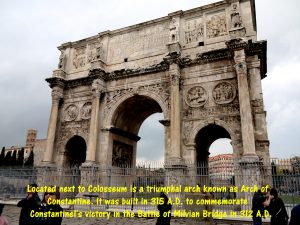
Arch of Constantine built in commemoration of Constantine I’s victory in the Battle of Milvian in 312 A.D.
Visiting Vatican City
Later, we moved on to the world’s smallest country, Vatican City, that is surrounded by the city of Rome. It has a population of about 840 and a small area of 44 hectares which is equivalent to 82 football fields.
She has the largest Catholic church in the world known as St. Peter’s Basilica that was built in the 1506-1626 period.
The church is dedicated to St. Peter(one of Jesus Christ’s apostles and the first pope) and the burial site of St. Peter. It is a popular place for pilgrimage and liturgical functions.
Rain and Long Queue
When we arrived at the church, St. Peter ‘s Basilica, it was drizzling and we had to join a long queue to enter the church. According to our tour manager, Jenny, we were lucky that we queued for about an hour before we entered the church. She had to queue for three hours the last time she brought a tour group there!
“Pieta”
When we entered the church, the first thing that caught my eyes on the right was a marble sculpture known as “Pieta”.
“Pieta” is a masterpiece created by a famous Italian sculptor, Michelangelo Buonorroti(1475-1564), from 1498 until 1499. It depicts Virgin Mary holding her dead son, Jesus Christ, on her lap after his crucifixion.
More sculptures, monuments, paintings and statues of previous popes, founders of religious orders, etc. can be seen in the church.
Other Basilicas
On the floor of the nave are markers showing the comparative sizes of other basilicas in other places.
The Holy Door
There is a special door known as “The Holy Door” made of bronze in the northernmost entrance of St. Peter’s Basilica in Vatican City. It depicts the life of Jesus Christ.
The door is cemented shut and only opened for Jubilee Years of the church. The Catholics believe that if they go through the door during the Jubilee Years, they may be granted the plenary indulgences.
Change of Guards at St. Peter’s Basilica
Coming out of the church at 5 p.m. I was fortunate to watch the change of the Swiss guards at the entrance adjacent to the church. The ceremony lasted for 5 minutes.
The guards are Swiss citizens. Their duty is to protect the pope and the church. They wear a colourful uniform which has vertical blue, red, orange and yellow stripes.
Victoria Terma Hotel
In the evening we left the church, went for dinner and retired to our rooms at Victoria Terma Hotel that is a few kilometres from Rome City.
Italy Travel Part I: Rome and Vatican City
Italy Travel Part II : Rome(continued)
Italy Travel Part III: Pisa and Florence
Italy Travel Part V(Final): Verona and Milan
Italy Travel Part II: Rome
Italy Travel Part II: Rome(continued)
Day 3 Saturday, 4 November 2017
Map Showing the Location of Rome
Visiting Rome(continued)
In the morning we left Victoria Terma Hotel and went to visit two more places in Rome City before we left for Pisa and Florence in the north.
Trevi Fountain, Rome
The first iconic landmark we visited in the morning was a well-known Baroque fountain, Trevi Fountain. It was built in the 1752-1762 period by several sculptors with the facade of Poli Palace as its backdrop.
Coins in Fountain-Pool
Visitors believe that if they throw coins into the fountain-pool after making one, two or three wishes their wish or wishes may be granted. Everyday many visitors throw about 30oo euro worth of coins into the water. The money collected is for subsidizing a supermarket for the poor.
Spanish Steps
Having spent a short time at Trevi Fountain, we left and took a long walk to another place of interest known as Spanish Steps.
The Spanish Steps has 135 steps from the Spanish Square below to a Roman Catholic church, Trinita dei Monti, on top of Pincia Hill. The steps were built to link the Bourbon Spanish Embassy below with the church on the hill.
Spanish Square
In the Spanish Square there is a small fountain known as “Fountain of Ugly Boat”.
At about 11 a.m. we were lucky to hear a band on the Spanish Steps playing Italian music.
Trinita dei Monti Church
The Roman Catholic church located on Pincia Hill is known as Trnita dei Monti Church. It was built to replace the old one that was constructed by King Louis XII in 1502 to celebrate his victory in the Battle of Naples. This church was consecrated in 1585.
Roman Obelisk
In front of the church is a Roman obelisk that was moved there in 1789.
Journey to Florence
Soon we left Rome for Florence in the north. On the way we stopped at two places. The first place was a shop, Autogrill Service Area in Val di Chiana, where we stopped to buy Italian food products for our loved ones back home(Malaysia).
Shopping at Autogrill, Val di Chiana
At 3.30 p.m. we arrived at the shop, Autogrill. It was a pleasure to shop at this well-stocked place and the tour members were spoiled for choice. Besides, the shop-assistants were friendly and helpful.
After spending an hour at the shop, we moved on.
Pierotucci Leather Factory
In the evening we arrived at a leather factory known as Pierotucci Leather Factory near Florence City.
Established in 1972, it produces genuine leather bags, jackets and accessories. Besides producing its own designs, it also produces those of others such as Dunhill, Valentino, Bally, Fratelli Rossetti, Cole-Haan and Hugo Boss.
Leather Craftsmen
When we arrived at the factory, we were led into a workshop where expert craftsmen worked. As the workers had left the factory, a lady explained how a craftsman made a handbag. Then we were led to a showroom where many kinds of leather goods were displayed for sale.
“Authentic Florentine Steak”
A few of us bought some items and then left for dinner at a L’ema restaurant nearby to savour the “Authentic Florentine Steak”. Unfortunately, I could not finish the meat as it was too “rubbery”.
Photo Session
At the restaurant I took the opportunity to take photos of the happy tour members and myself for remembrance.
Hotel President, Prato
After the dinner we left and went to stay at a hotel, Hotel President, in Prato that is near Florence. We would be going to Pisa to see Leaning Tower of Pisa the following day.
Italy Travel Part I: Rome and Vatican City
Italy Travel Part II : Rome(continued)
Italy Travel Part III: Pisa and Florence
Italy Travel Part V(Final): Verona and Milan
Italy Travel Part III: Pisa and Florence
Italy Travel Part III: Pisa and Florence
Day 4: Sunday, 5 November 2017
Visiting Leaning Tower of Pisa, Pisa
Rain in Pisa
In the morning we left our hotel. Hotel President near Florence and went west to Pisa. On arrival at Pisa, we walked in the rain from the coach parking area to Cathedral Square which was a few hundred metres away.
Pickpockets
On the way we came across some foreigners selling umbrellas and ponchos. They forewarned us that there were several pickpockets around, trying to steal tourists’ money. As we were walking to the square, we looked out for one another. Luckily, none of us fell prey to the pickpockets.
Three Monumental Buildings
When we were in the square we saw three prominent monumental buildings, namely Baptistery of St. John, Cathedral of Pisa and a world’s famous leaning tower known as “Leaning Tower of Pisa”.
Baptistery of St. John
Baptistery of St. John is a Roman Catholic church that was built in Romanesque and Gothic architectural styles in the 1152-1363 period.
Cathedral of Pisa
Cathedral of Pisa is in between Baptistery of St. John and the Leaning Tower of Pisa. It was built in Romanesque architectural style from 1063 until 1092 and dedicated to the Assumption of Virgin Mary. Now it is the seat of Archbishop of Pisa
Leaning Tower of Pisa
The well-known tower, Leaning Tower of Pisa, which is about 56 metres high was built in Romanesque architectural style. The builders took almost 200 years(1173-1372) to complete the construction. Unfortunately, the tower tilted slowly to as much as 5.5 degrees while they were building it. It was due to weak foundation on one side of the ground.
Tower Tilting 5.5 Degrees
Later, frantic efforts were carried out to make the tower stand upright. But they could only reduce the leaning angle to about 3 degrees as we are seeing it now. I think it is because of its tilting nature that attracts the attention of millions of tourists every year.
Visiting Florence
Michelangelo Square
In the afternoon we left Pisa and travelled east to Florence City. Before we entered the city, we went to Michelangelo Square on a small hill in the south. Standing at the square in the rain, we saw the beautiful city of Florence.
Bronze Statue of David
In the square we saw a bronze statue of David which is a replica of Michelangelo’s marble statue of David.
Florence Square
When we entered the city centre, the first place we visited was a square known as Florence Square where we met a local guide, Virginia.
Florence Tour Guide, Virginia
In the square, Virginia brought us round and told us about the monumental buildings. some of which are shown below
Cathedral of St. Mary of the Flower
This huge cathedral with a red dome was built in 1296-1436 in Gothic architectural style. It is the largest one in Florence.
Giotto’s Bell Tower
Close to the cathedral and built in Gothic architectural style from 1334 until 1359 is a tall tower, Giotto’s Bell Tower, that is about 85 metres tall. Visitors can climb up 414 steps to the top to see the whole city of Florence.
Baptistery of St. John
Another building near the cathedral is Baptistery of St. John in Romanesque architectural style. It was built in the 1059-1128 period in octagonal shape and has three bronze doors with relief sculptures. One of them was dubbed as “Door of Paradise” by Michelangelo.
Signora Square
Then we walked a short distance to another place known as Signora Square. This square was the political focus of Florence for many years. On one side of the square an equestrian monument of Cosimo I(1519-1574) was erected in 1594.
Cosimo I Monument
Cosimo I was the 2nd. Duke of Florence from 1537 until 1569. The Fountain of Neptune near the monument was under repair.
Palazzo Vecchio
In the square there is a building, Palazzo Vecchio, which houses the town hall and a museum, too. It was built in the 13th. Century to show the importance of Florence and protect the magistrates of the city in times of turbulence.
Statue of David
At the entrance of the building there is a statue of David which is a replica of Michelangelo(1475-1564)’s David statue on one side and statues of Hercules and Cacus by Baccio Bandinelli(1493-1560) on the other side.
Loggia dei Lanzi
Loggia dei Lanzi built in the 15th. Century is an open-air gallery of Renaissance sculptures.
This building at Signora Square displays several beautiful sculptures. The photos below show some of them.
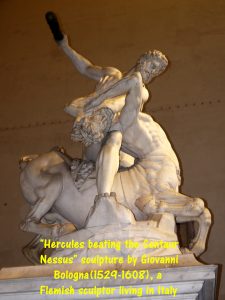
“Hercules beating the Centaur Nessus” by Giovanni Bologna(1529-1608), a Flemish sculptor living in Italy
Uffizi Gallery
Uffizi Gallery is behind Loggia dei Lanzi. It is a famous large museum that has 101 rooms displaying artworks, particularly, from the Italian Renaissance period. It attracts many visitors every year. About 2 million people entered the museum in 2016.
Uffizi Gallery has niches in exterior columns that contain statues of important historical figures, such as Michelangelo Buonarroti, Leonardo da Vinci, Galileo Galilei, and Dante to name a few.
Michelangelo Buonarroti(1475-1564)
Michelangelo was born in Florence, He was a sculptor, painter, architect and poet. His famous sculptures include “David” and “Pieta”.
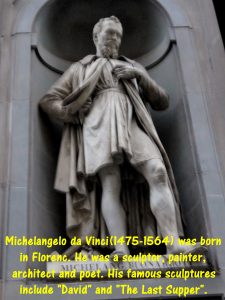
Michelangelo Buonarroti(1475-1564) was born in Florence. He was a sculptor, painter, architect and poet. His famous sculptures include “David” and “Pieta”.
Leonardo was an Italian polymath who had many areas of interest such as sculpture, painting, invention and astronomy. His famous paintings include “Mona Lisa” and “The Last Supper”.
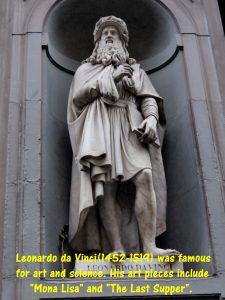
Leonardo da Vinci(1452-1519) was an Italian polymath who had many areas of interest. His famous paintings include “Mona Lisa” and “The Last Supper”.
Galileo Galilei(1564-1642)
Galileo was also an Italian polymath who was interested in astronomy, physics, engineering, natural philosophy and Mathematics.
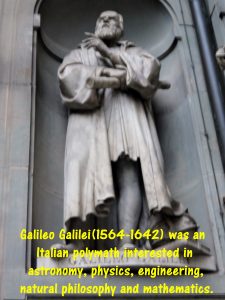
Galileo Galilei(1564-1642) was an Italian polymath interested in astronomy, physics, engineering, natural philosophy and Mathematics.
Dante Alighieri(1265-1321)
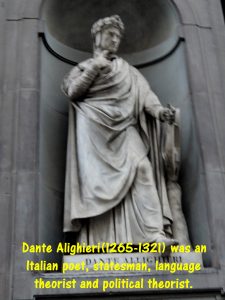
Dante Alighieri(1265-1321) was an Italian statesman, poet, language theorist and political theorist.
Ponte Vecchio(Old Bridge)
Ponte Vecchio is a 30 metre-long stone-bridge that spans River Arno. The first bridge was built in the Roman times. It had been destroyed by flood a few times and then reconstructed.
Shops have been built on the bridge selling jewellery and souvenirs to tourists.
Basilica Santo Croce
In the evening we left the old bridge, Ponte Vecchio, and walked for several minutes to a restaurant for dinner. On the way we came across a white cathedral, Basilica Santa Croce(Basilica of the Holy Cross), that housed the tombs of many influential Italians, including those of Michelangelo and Galileo. So it is also known as the Temple of the Italian Glories.
Built in the 1294-1385 period. it is the main principal Franciscan church and a minor basilica of the Roman Catholic church.
Hotel President, Prato, Florence
After dinner we went back to our hotel, Hotel President in Prato, to rest.
The following day, we left Florence for Venice.
Italy Travel Part I: Rome and Vatican City
Italy Travel Part II : Rome(continued)
Italy Travel Part III: Pisa and Florence
Italy Travel Part V(Final): Florence and Milan
Italy Travel Part IV: Venice
Italy Travel Part IV: Venice
Day 5: Monday, 6 November 2017
Journey from Florence to Venice
We left the Florence hotel, Hotel President, in the morning and travelled to Venice in the northeast of Italy.
Map of Italy showing the location of Venice
Venice
Venice is built on more than 100 islands in a lagoon. The islands are separated by canals, straddled by over 400 bridges. A causeway, Bridge of Liberty(Ponte della Liberta), connects the mainland to a small island of Venice.
Causeway
In the afternoon we arrived at the island of Venice after crossing the causeway from the mainland. Then we boarded a boat that took us to another but larger island, San Marco Island(St. Mark Island).
Spectacular Views
While sailing to San Marco Island we saw a few large cruise ships and spectacular views of old medieval buildings, hotels and churches on some islands.
Photographing
While sailing to the island, we took the opportunity to take some photos of ourselves in the boat for remembrance. Below are a few of them.
San Marco Island of Venice
After a 20 minute boat-ride, we sighted San Marco Island with a prominent bell tower known as St. Mark’s Bell Tower. The view was stunning.
Soon we arrived and disembarked at the jetty of San Marco Island.
Waterfront of San Marco Island
The waterfront is wide and about 1 metre above sea-level. Hence, it is prone to flooding whenever the tide is high. But tables kept on the waterfront are ready to be used by visitors if it is flooded.
Tables were used earlier by visitors queuing up to enter St. Mark Cathedral in San Marco Square.
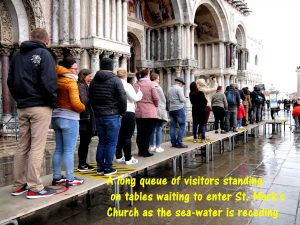
Visitors standing on tables to prevent their feet from getting wet in flooded San Marco Square, Venice
Flood in Venice
A flood occurred in Venice on the following day after our visit.
Venetian Buildings
On the waterfront there are several rows of old Venetian buildings. Among them are Doge’s Palace(Palazzo Ducale) and a prison separated by a narrow canal.
Doges of Venice
Doges of Venice were chief magistrates and leaders with supreme authority of the former Republic of Venice. They were elected for life. Venice was under their rule from 697 until 1797 when France under Napoleon Bonaparte(1769-1821) captured it.
Doge’s Palace(Palazzo Ducale)
Doge’s Palace built in Gothic architectural style and established in 1340 was the residence of the Doge of Venice until 1797 when France took over Venice. Later, the palace was taken over by Austria when Venice was ruled by Austria. In 1866 Venice became part of Italy.
Since 1923 it has become an art museum.
Bridge of Sighs
A bridge was built from Doge’s Palace to the prison next to it in 1614. Known as the Bridge of Sighs, it was built for criminals who were sentenced to jail. They had to walk across the bridge from Doge’s Palace where the court was situated to the prison.
While crossing the bridge, the criminals had a last look outside through the two windows, sighed and entered the prison to serve their sentences.
Over 400 Bridges in Venice
There are over 400 bridges in Venice. Most of them are short, straddling narrow canals and different from each other in design.
San Giorgio Maggiore Church
Standing on the waterfront I looked across a waterway, the Grand Canal, and saw a large church on Dorsoduro Island. It is called San Giorgio Maggiore, a 16 th. Century Benedictine church built in Classical Renaissance architectural style in the 1566-1610 period.
Venetian Ladies
On the waterfront we saw two ladies walking on stilts. They were dressed in traditional Venetian costumes and wearing masks. They were inviting visitors to take photos with them.
Venetian Masks
There were some souvenir stalls on the waterfront. The most common things they were selling were the Venetian masks.
Venetian masks are usually worn during the Carnival of Venice which is an annual festival in Venice. They may wear full-face masks or eye masks to hide their identity and social status.
Black Spaghetti for Lunch
When it was lunchtime, we went to a restaurant, Taverna dei Dogi, in an alley near St. Mark’s Square. We had black spaghetti or squid ink spaghetti, simple salad, fried squid rings and ice-cream for lunch.
Glass-Blowing Demonstration
After lunch, we walked to a glass-shop in Castello District which was nearby. At the shop we watched a glass-blower, Parlo, making a glass-object by traditional method. After the glass-blowing demonstration, we went to the glass showroom where many kinds of glass-objects were for sale, such as chandeliers, drinking glasses, glass figures, etc. But none of us bought any of them as it was troublesome to bring them home, 10 000 km away from Venice.
St. Mark Square(Piazza San Marco)
Later, we went to the most important place in Venice. It is the centre for social, political and religious activities of the city. It is known as St. Mark’s Square(Piazza dei San Marco).
St. Mark’s Bell Tower
In the centre of the square stands a tall tower, St. Mark’s Bell Tower. It is 98.6 metres tall and built in 1912 replacing the old one that collapsed in 1902. The first one was built in the 12th. Century as a watch-tower or lighthouse.
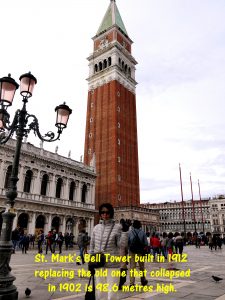
St. Mark’s Bell Tower built in 1912 to replace the old one that collapsed in 1902 is 98.6 metres high.
St. Mark’s Cathedral(Basilica dei San Marco)
On its western side is a large church, Basilica dei San Marco(St. Mark Cathedral). It was built in 978-1092 with five domes and five arches in front. It has a mixture of Italian, Byzantine and Gothic architectural styles.
It was built as a private chapel for the Doges until 1807 when the local bishop, Patriarch of Venice, took over in 1807.
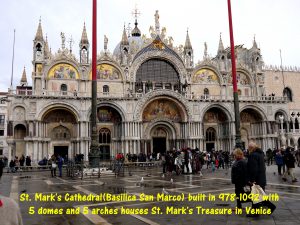
St. Mark’s Cathedral(Basilica San Marco) built in 978-1092 houses St. Mark’s Treasure in St. Mark’s Square,
The Church houses St. Mark’s Treasure consisting of 293 items in gold, silver, glass and other precious materials from various sources like from Constatinople, Western art, of Islamic origin and others.
Gondola Ride
Finally, we went to a pond or small lake, Bacino Orseolo, near St. Mark’s Square to ride gondolas.
A gondola is Venetian iconic boat that looks like a canoe. Painted black, it is 11 metres long with comfortable seats and ornately decorated.
10 000 Gondolas
About 200 years ago, there were approximately 10 000 gondolas, but now there are about 500 left. Those boats were the chief means of transportation in Venice in the olden days. Today most of them are used for carrying tourists who want to enjoy the ride.
Bacino Orseolo
A tourist gondola can carry 6 persons and is rowed by a gondolier. My wife and I together with 4 members of the Tye family sat in a gondola at Bacino Orseolo, a small lake. Our seating in the gondola was decided by the gondolier as he did not want his boat to be tilted to one side
Slow Gondola Ride
Shortly afterwards, we were moving away from the lake. The boat was moving slowly along narrow canals and part of the large canal known as Grand Canal, passing under low bridges.
Marco, the Gondolier
Our gondolier was Marco. We asked him to sing for us while he was rowing, but there was no response from him. Anyway, we enjoyed the sights and sounds of Venice as we were moving along the canals and under low bridges. The ride which lasted for about 20 minutes is a memorable one.
Rialto Bridge(Ponte de Rialto)
While riding in a gondola on Grand Canal, we saw an iconic bridge of Venice known as Rialto Bridge. Constructed in 1591, it spans Grand Canal and connects San Marco Island and San Palo Island.
Departure for Venice Mainland
Soon we left Venice’s San Marco Island and returned to the mainland of Venice. Then we headed west to a hotel, Hotel Da Porto, along Viale del Sole to stay overnight before going to Verona and Milan in the north the following day.
Italy Travel Part I: Rome and Vatican City
Italy Travel Part II : Rome(continued)
Italy Travel Part III: Pisa and Florence
Italy Travel Part IV: Venice
Italy Travel Part V(Final): Verona and Milan
Writer’s List of Memorable Travels
Writer’s List of Travels
1. Africa
South Africa
South Africa Travel Part I: Air Flight from KLIA to Cape Town, Cape Town Shantytowns
South Africa Travel Part II: Table Mountain, Malay Quarter, Castle of Good Hope. A & V Waterfront
South Africa Travel Part III: Hermanus, Cheetah Outreach, Stellenbosch, Jewel Africa
South Africa Travel Part IV: Duiker Island of Seals, Cape Point, Boulders
South Africa Travel Part V: Cape Town to Johannesburg, Pilanesberg National Park(Game Drives)
South Africa Travel Part VI: Sun City, Union Buildings, Vootrekker Monument
South Africa Travel Part VII: Kruger Museum, Church Square, Melrose Museum, Carnivore Restaurant
South Africa Travel Final Part: Gold Reef City: Gold Mine Museum
2. Australia:
Part I: Melbourne/Mornington Peninsula/Phillip Island),
3. China:
i. Beijing, Tianjin, Chengde Travel:
Part II: Beijing, Tianjin, Chengde
ii. China Relatives & Ancestral Places(Fujian Province)
Part I: Parents’ China Relatives
Part II: Hanjiang, Meizhou Island
iii. Hong Kong Travel
iv. Macau Travel
v. Shanghai Travel
Part I: Hangzhou, Suzhou, Wuxi, Nanjing
Part II: Nanjing Bridge, Shanghai City, Shanghai Expo, Hangzhou
vi. Shenzhou, Hezhou, Quilin, Zhaoqing Travel
Part II: Quilin, Yangshuo, Zhaoqing, Shenzhen
vii. Taiwan Travel
Part II: Checheng, Kaohsiung, Taichung, Sanyi, Yehliu, Jioufen
viii. Yunnan Travel
Part I: Kunming, Jiu Xiang, Shilin, Dali
ix. Zhangjiajie Travel
Part I: Tianmen, Zhangjia jie, Wulingyuan, Tianzi, Yuangjiajie
Part II: Dragon King Cave, Shaoshan, Changsha, Macau
x. China Expedition 2013
3. Egypt Travel
Egypt Travel Part I :Salah el Din Citadel, Muhammad Ali Mosque, Tahrir Square and Egyptian Museum
Egypt Travel Part II :Valley of the Kings, Hatshepsut Temple and Colossi of Memnon
Egypt Travel Part III :Hot Air Balloons and Karnak Temple Complex
Egypt Travel Part IV :Papyrus Paper-Making, Luxor Temple and Esna Lock
Egypt Travel Part V :Edfu Temple, Kom Ombo Temple and Galabia Party
Egypt Travel Part VI :Abu Simbel Temples and Nubian Village(Elephantine Island)
Egypt Travel Part VII :Unfinished Obelisk, Aswan High Dam and Philae Temple
Egypt Travel Part VIII:Ahmed Hamdi Tunnel, Moon Beach(Ras Sudr), and St. Catherine
Egypt Travel Part IX :Mount Sinai, Catherine’s Monastery and Sharm el Sheikh
Egypt Travel Part X :Sharm el Sheikh
Egypt Travel Part XI :Cairo Food, Saqqara Step Pyramid Complex and Memphis
Egypt Travel Part XII :Great Giza Pyramid Complex and Khan el Khalil Bazaar
4. Europe:
i. Western Europe Travel
Part I: Germany, Switzerland, France
Part II: France, Belgium, Holland, England
ii. Eastern Europe Travel
Part VI: Prague(Czech Republic)
5. Indonesia:
i. Bali Travel
6. Italy:
Italy Travel Part I: Rome and Vatican City
Italy Travel Part II : Rome(continued)
Italy Travel Part III: Pisa and Florence
Italy Travel Part V(Final): Verona and Milan
7. Japan:
Part I: Osaka, Kyoto, Hamamatsu
Part II: Owakudani Valley, Mt. Fuji, Tokyo
8. Myanmar:
Part I: Yangon, Bagan, Mount Popa
9. New Zealand:
10. South Korea
Part II: Sokcho, Everland, Dongdaemum, DMZ, Seoul
11. Singapore:
Singapore Heritage Trail
Part I: Chinatown, Little India
Part II: Malay Heritage, Civic District
12. Thailand:
i. Bangkok, Ayuthaya Travel
ii. Chiang Mai, Chiang Rai, The Golden Triangle Travel
Part I: Chiang Mai, Chiang Rai, The Golden Triangle
iv. Part I: Thailand (from China Ezpedition 2013)
13. U.S.A & Canada
i. East Coast
Part I: Philadeiphia, Washington D.C.
Part II: Niagara Falls, Toronto
Part III: Colborne, 1000 Islands, Ottawa
Part VII: Woodbury Common Premium Outlets
ii. West Coast
Part II: San Francisco, Monterey Bay, Las Vegas
Part V: Premium Outlets(S. California)
Part VII: Hollywood Walk of Fame(Los Angeles)
Part VIII: Universal Studios Hollywood
Part IX: Universal Studios Hollywood Theme Park
14. Vietnam
Hanoi Travel
Part II: Hoa Lo, Tam Coc, Hanoi
END

